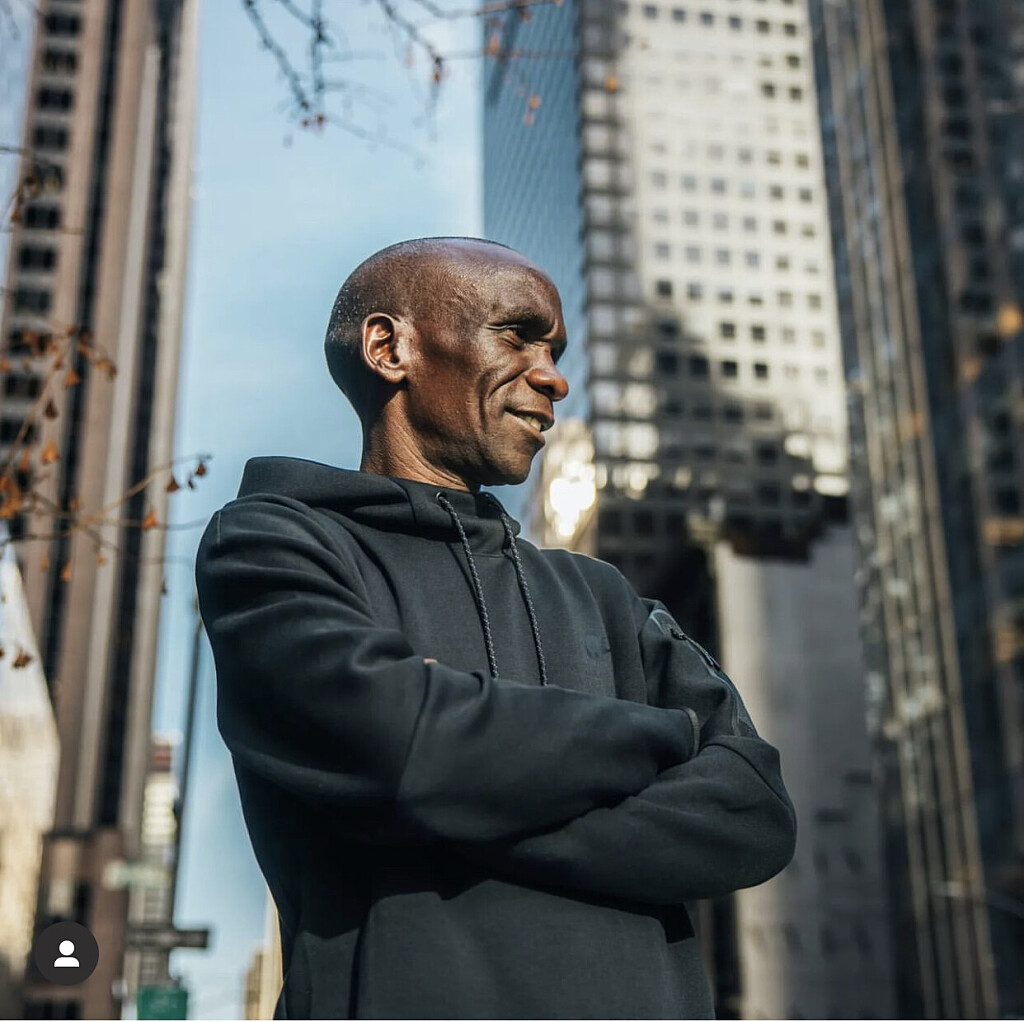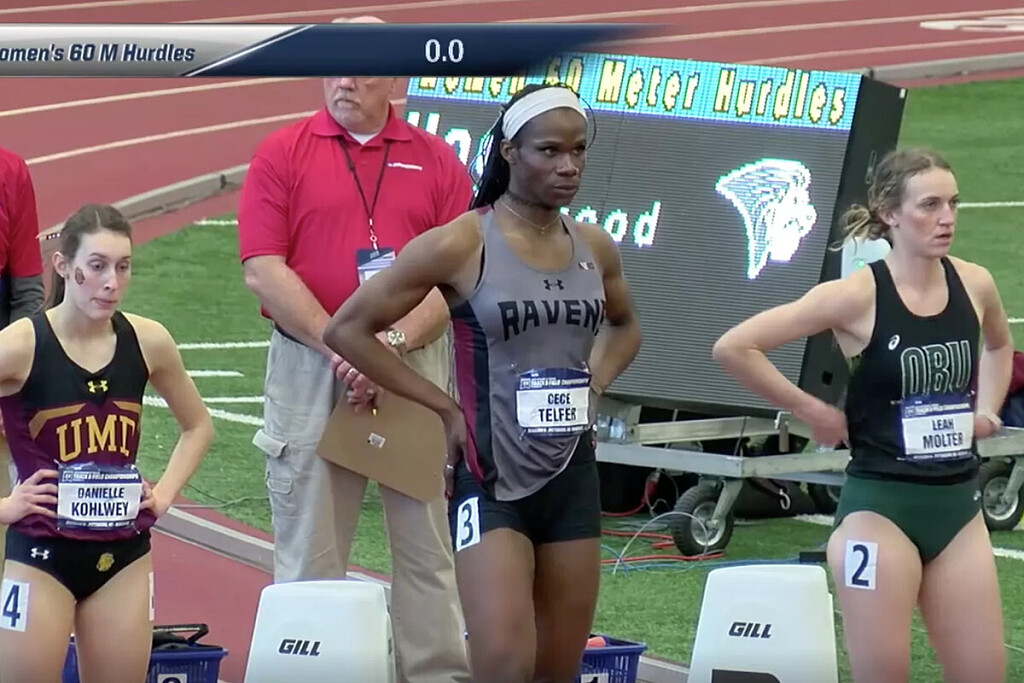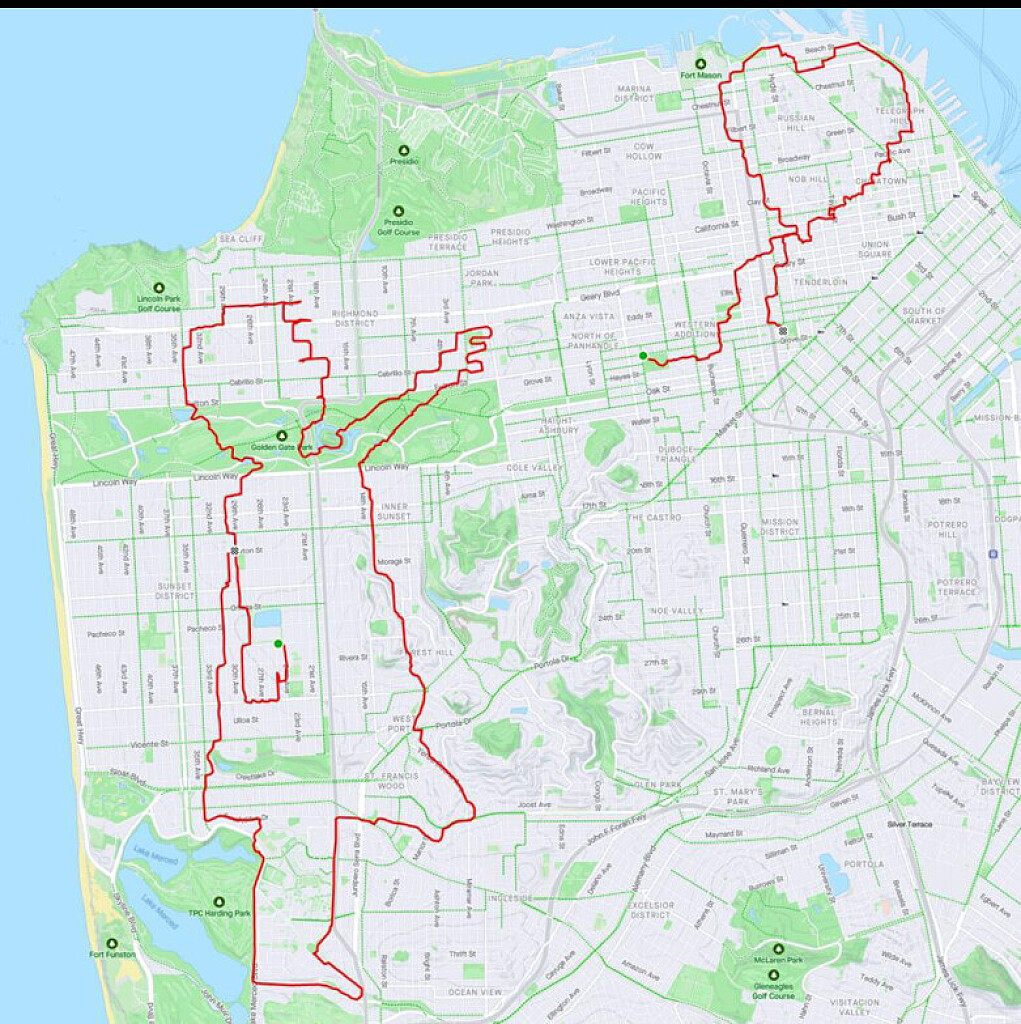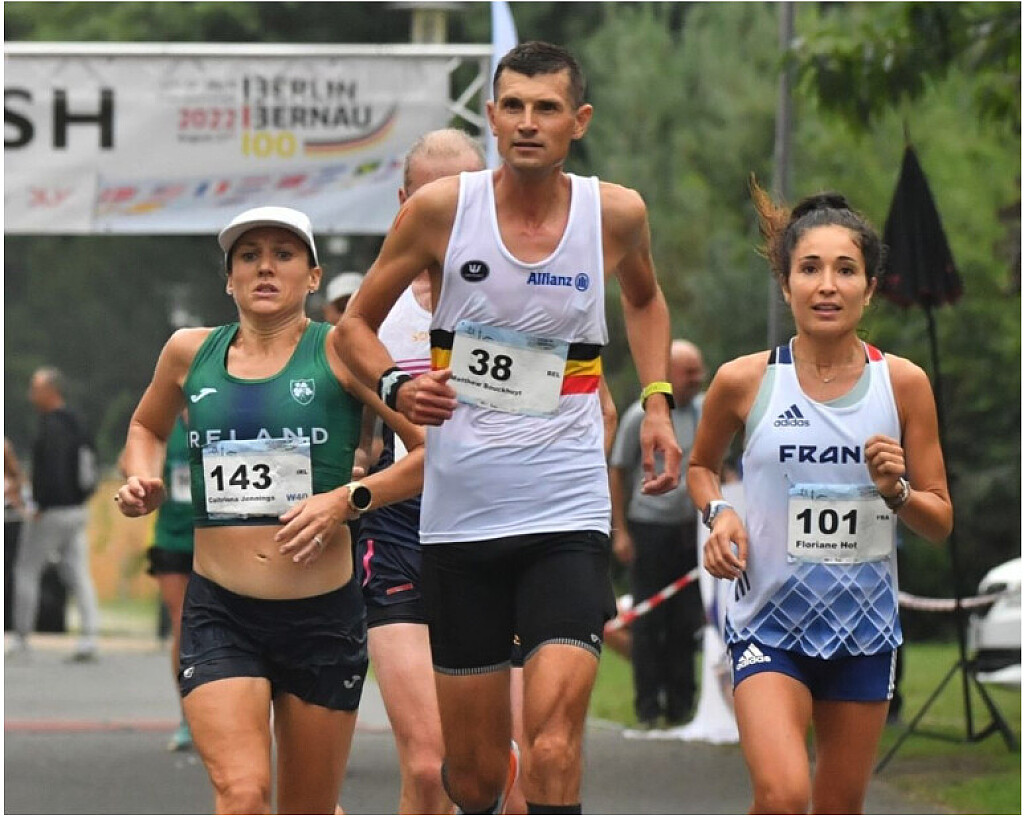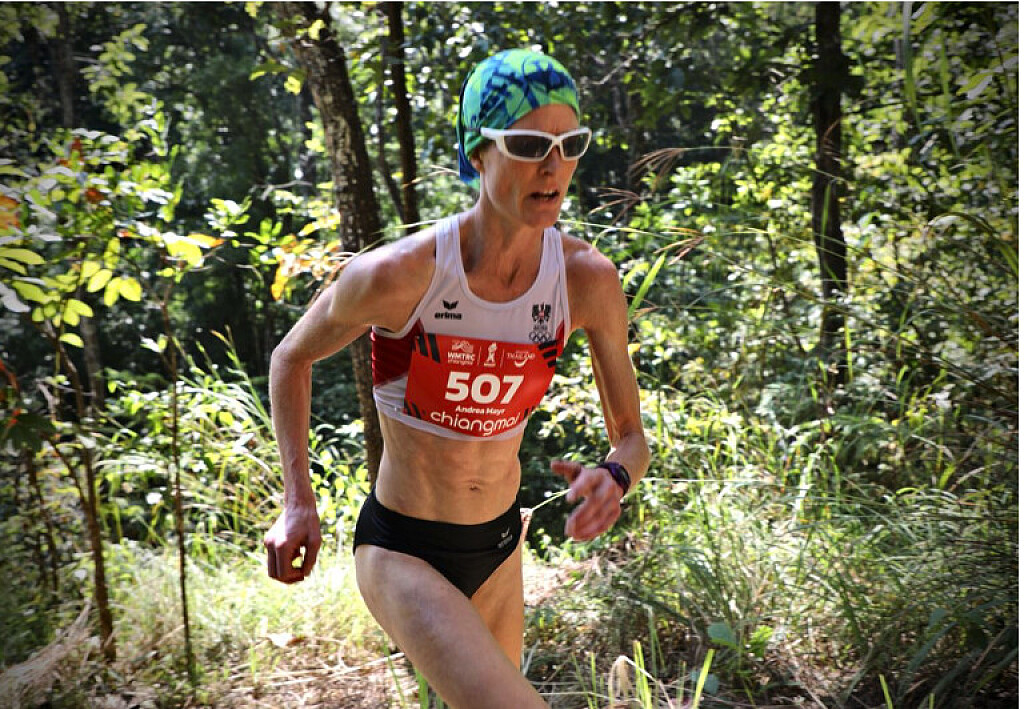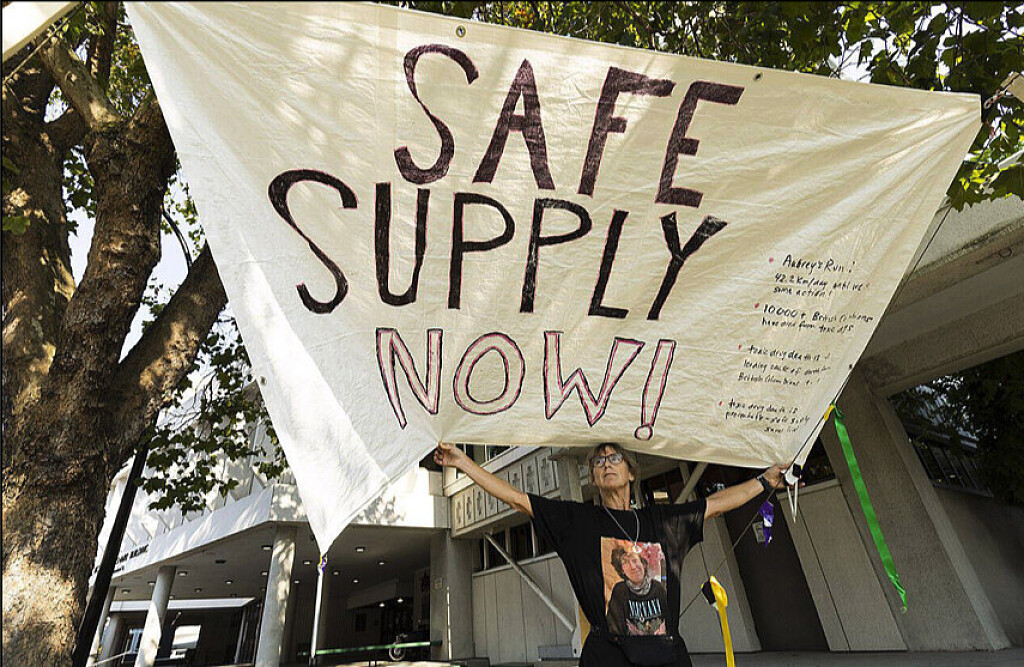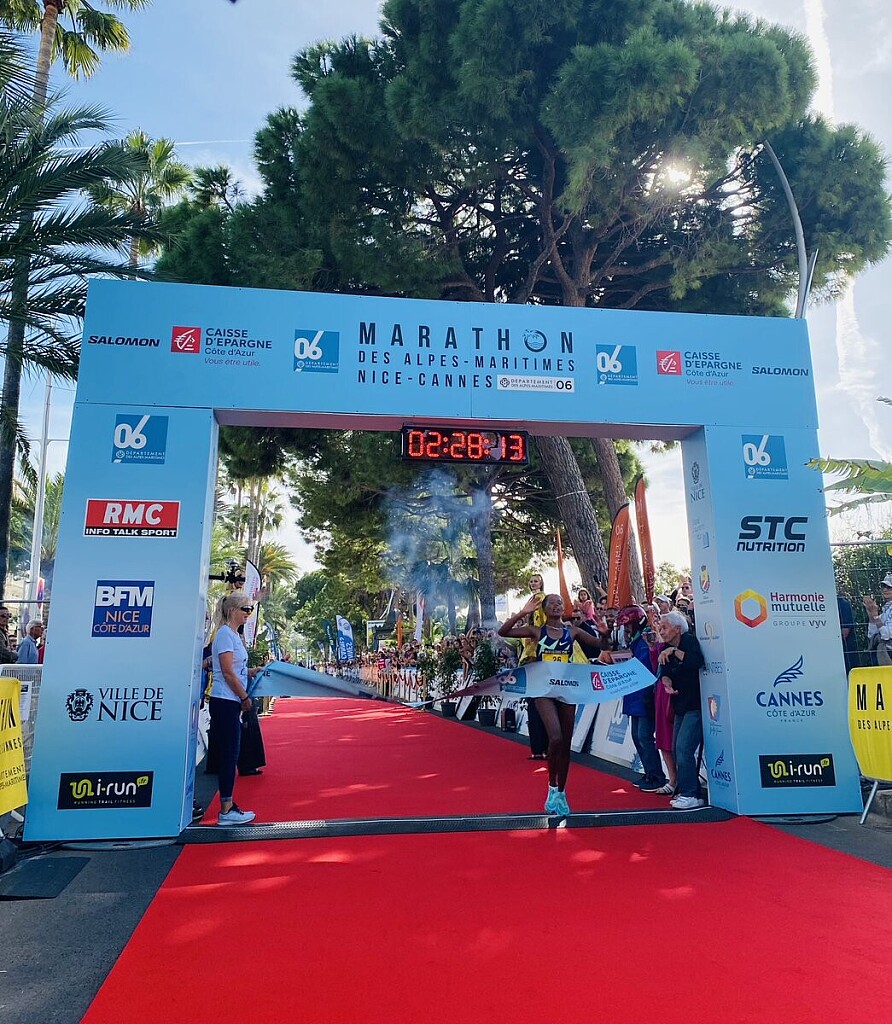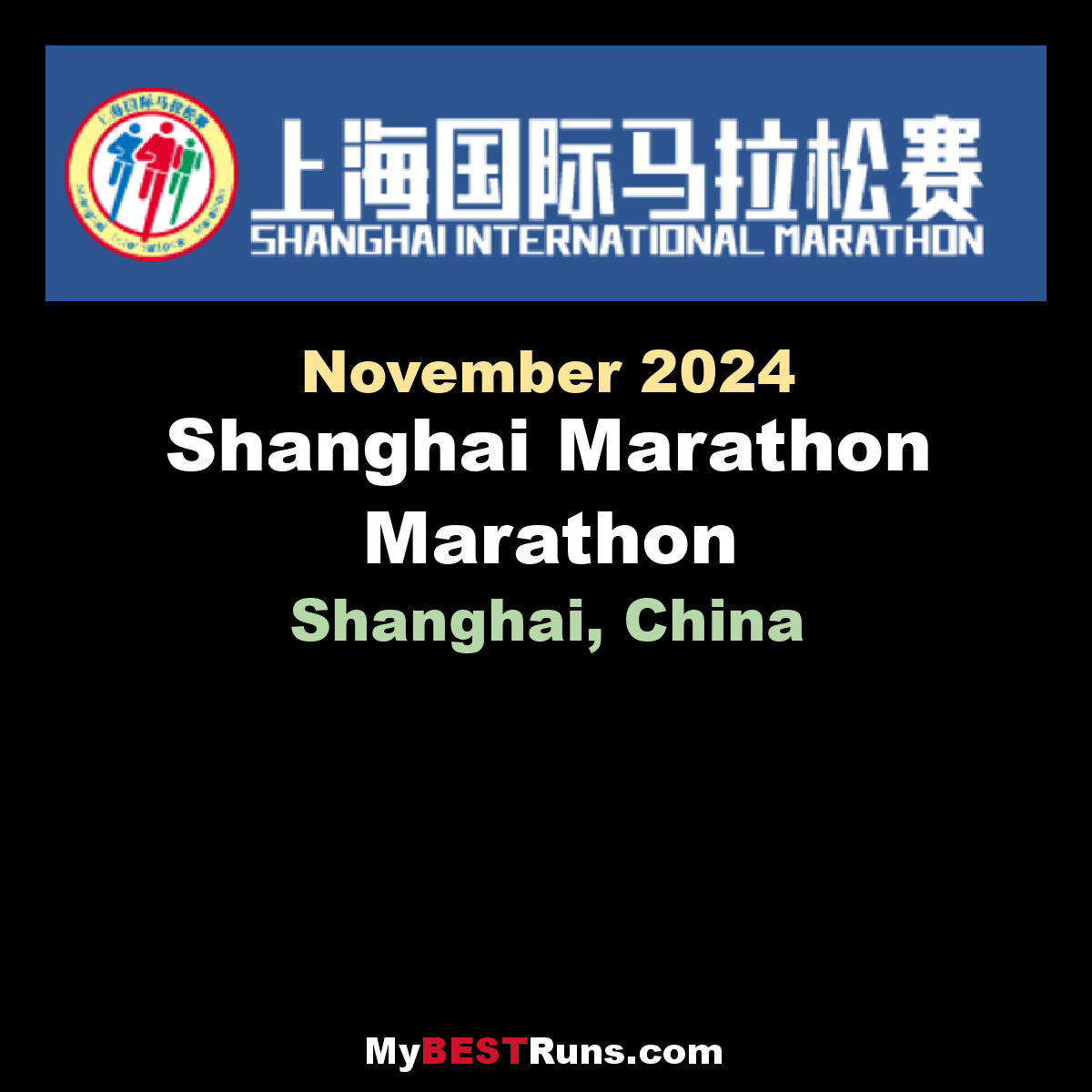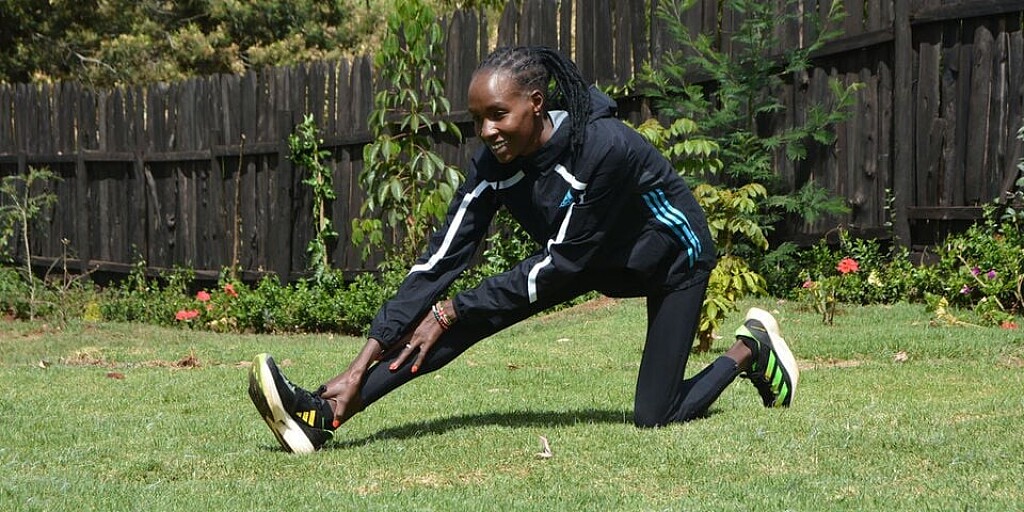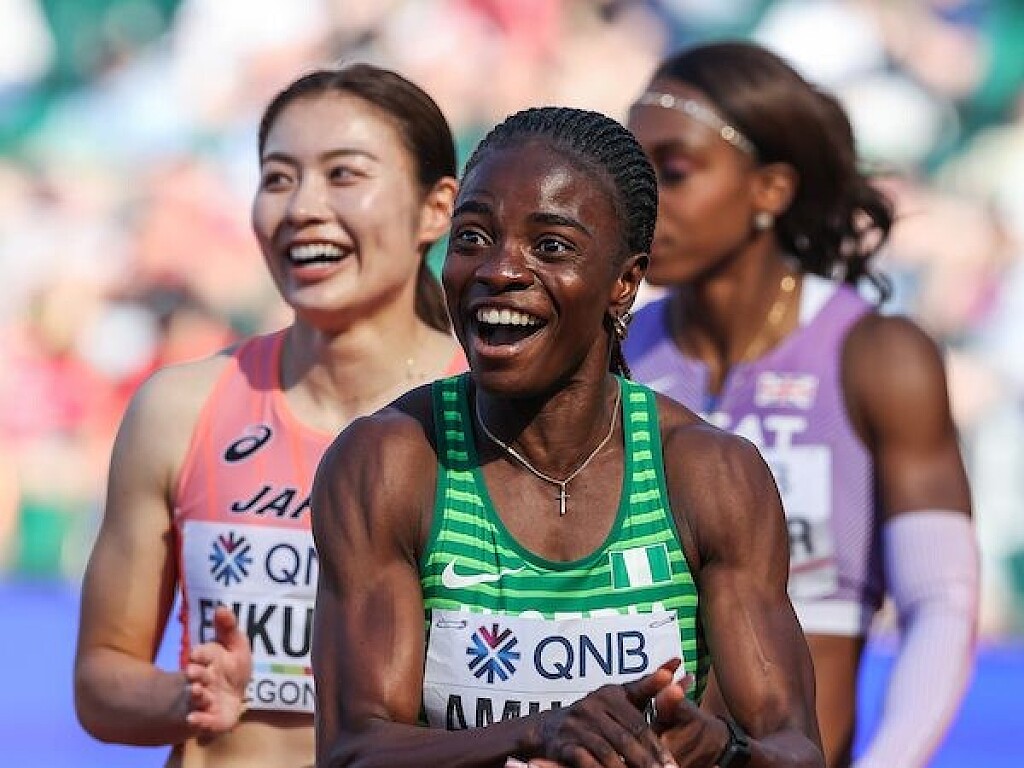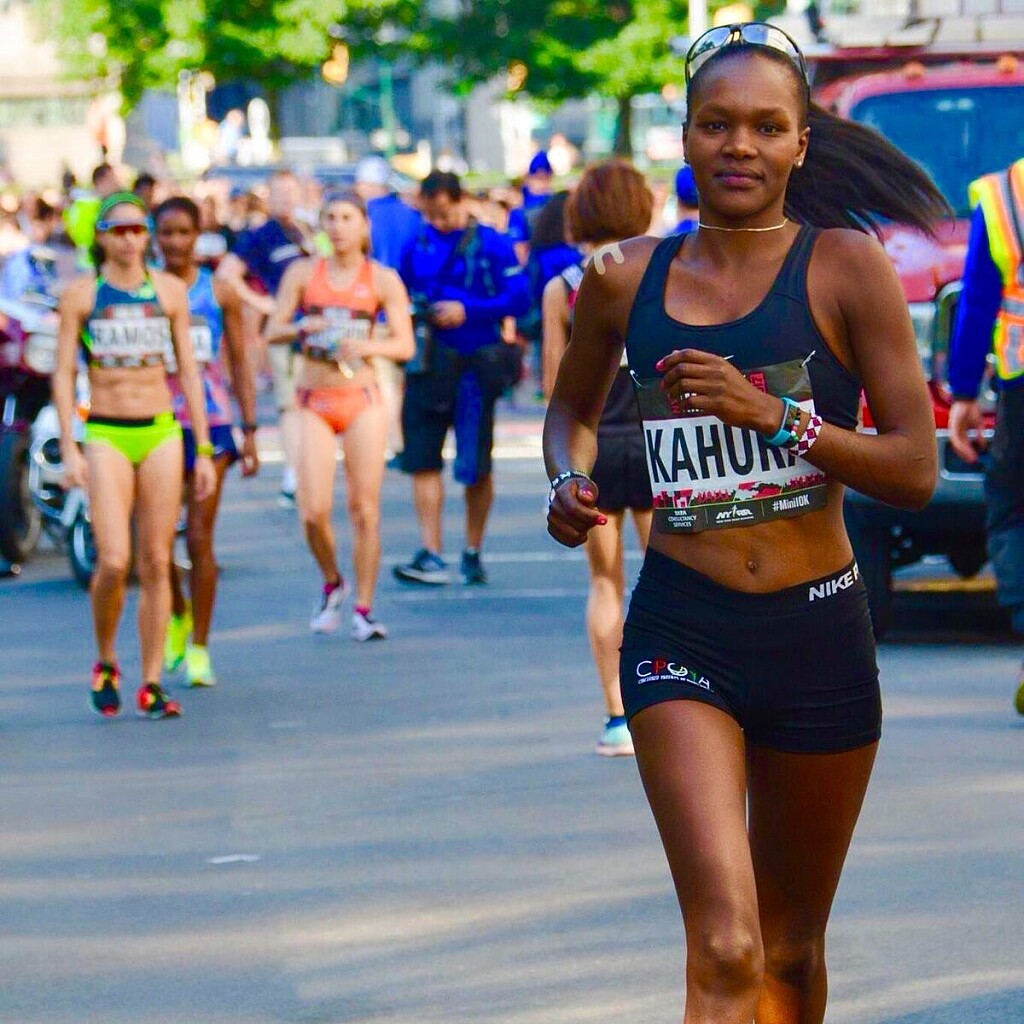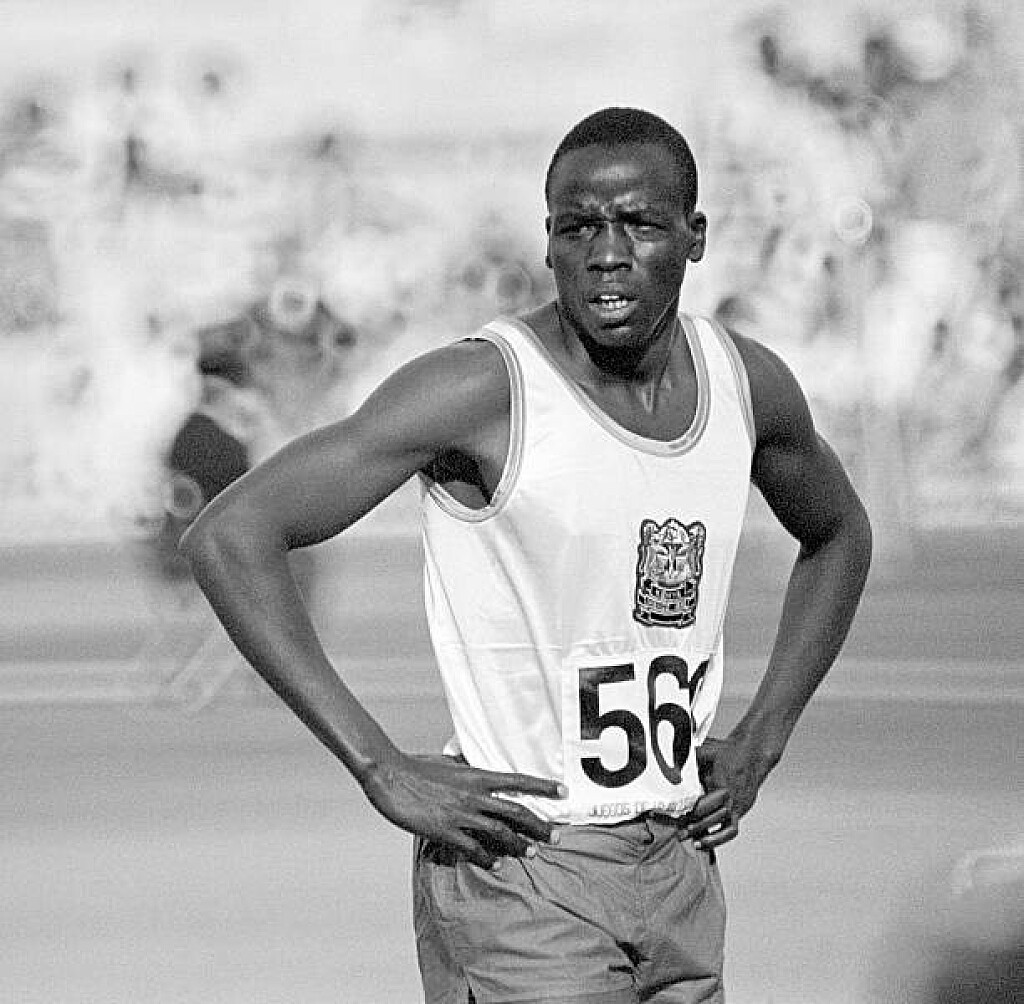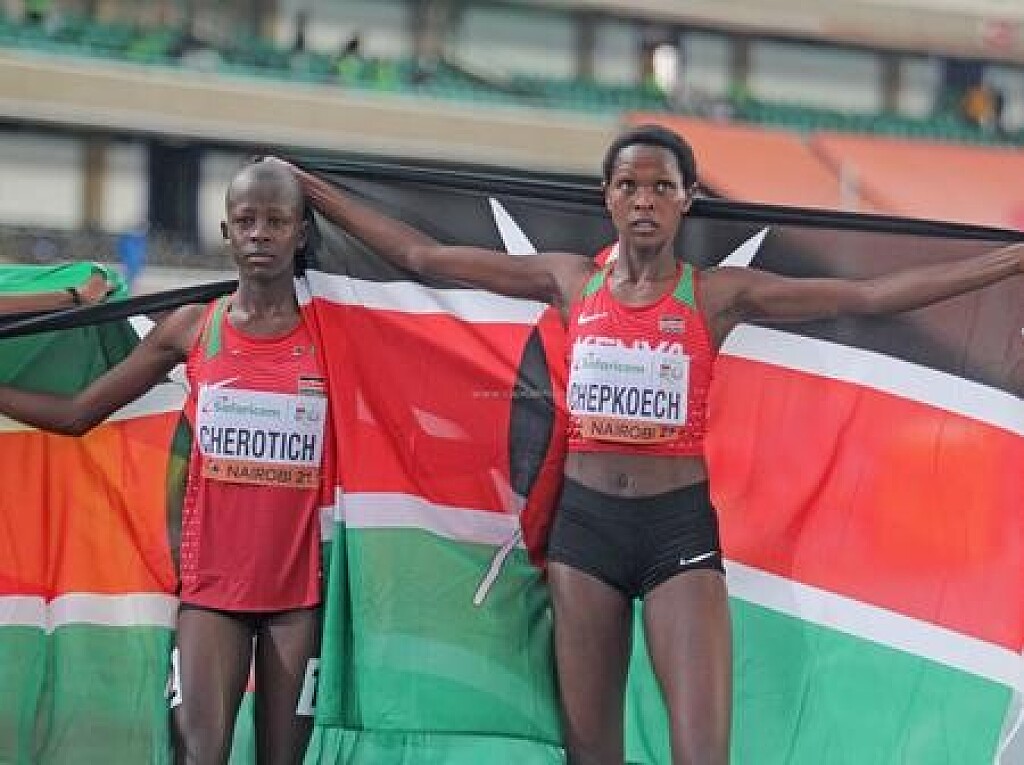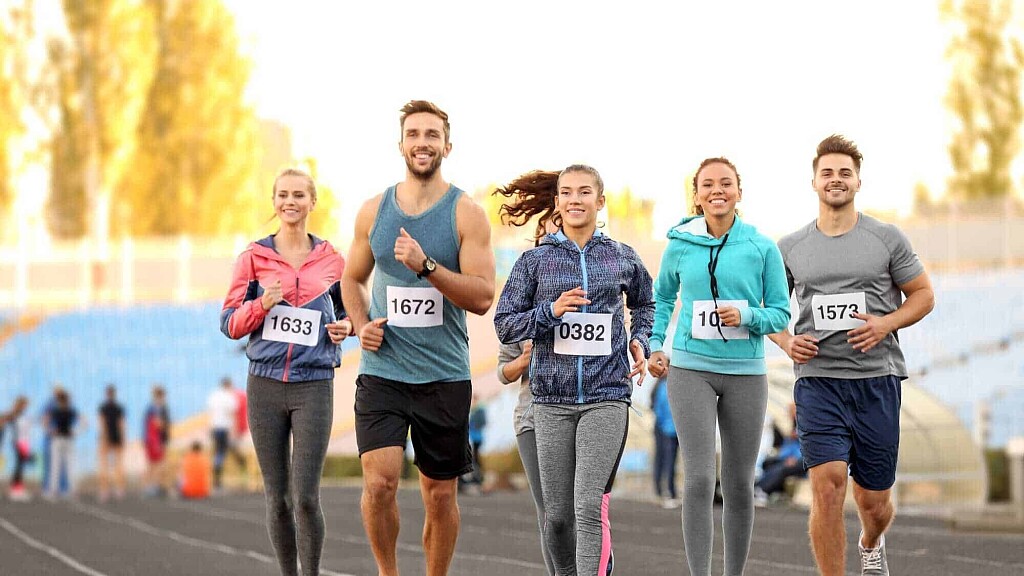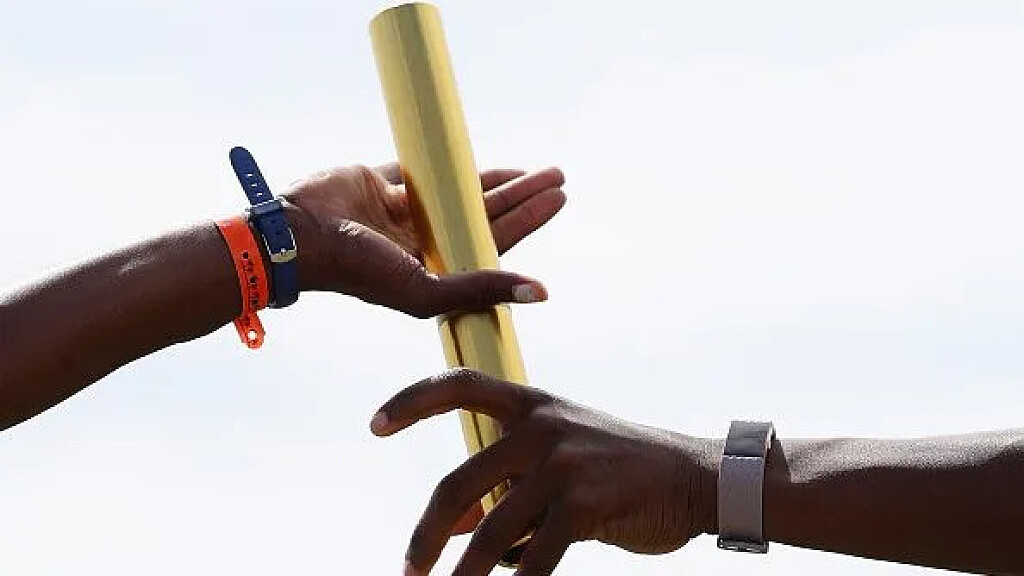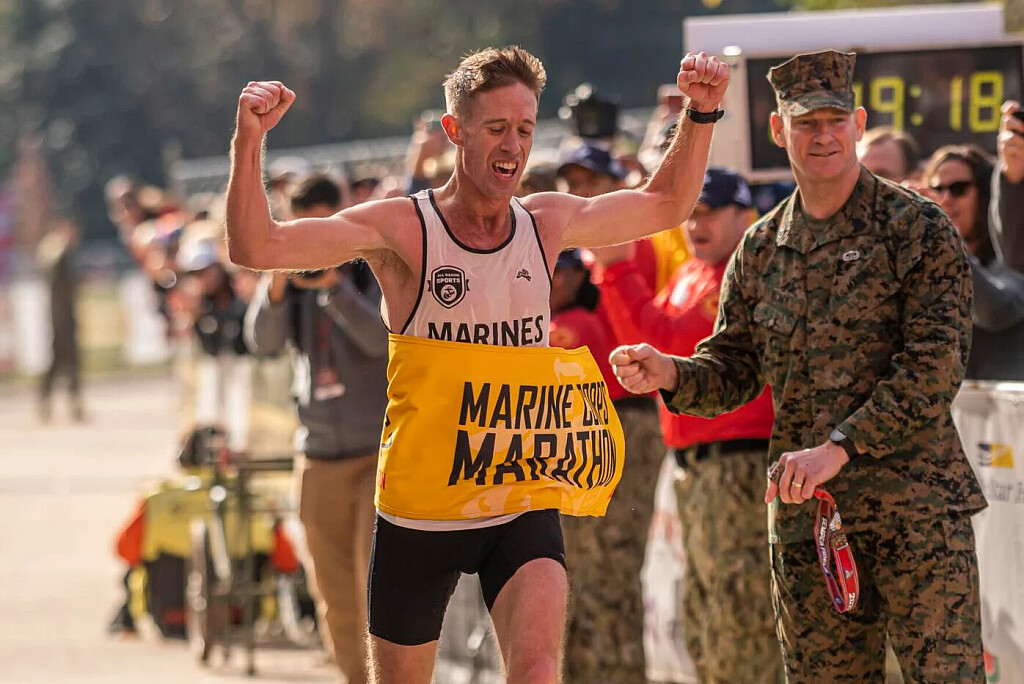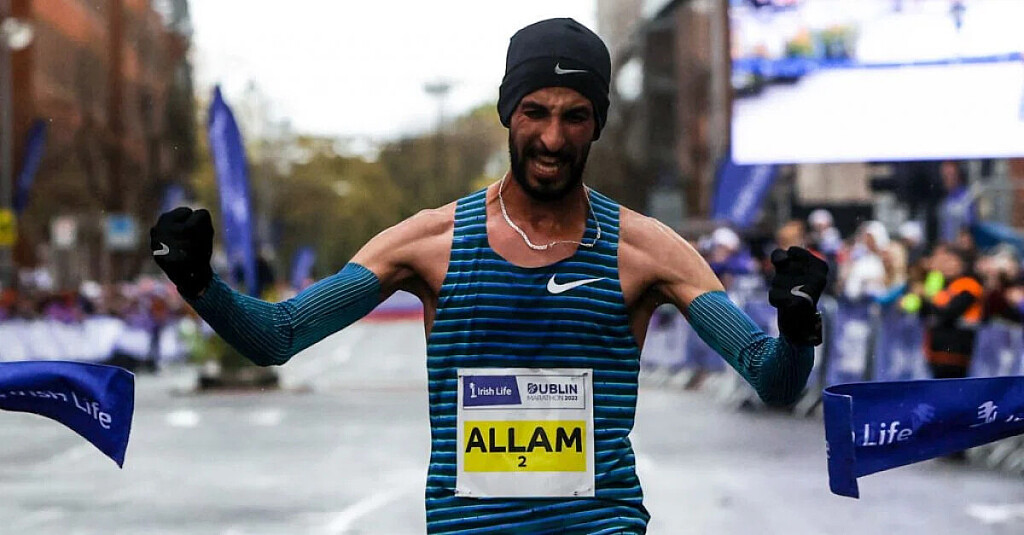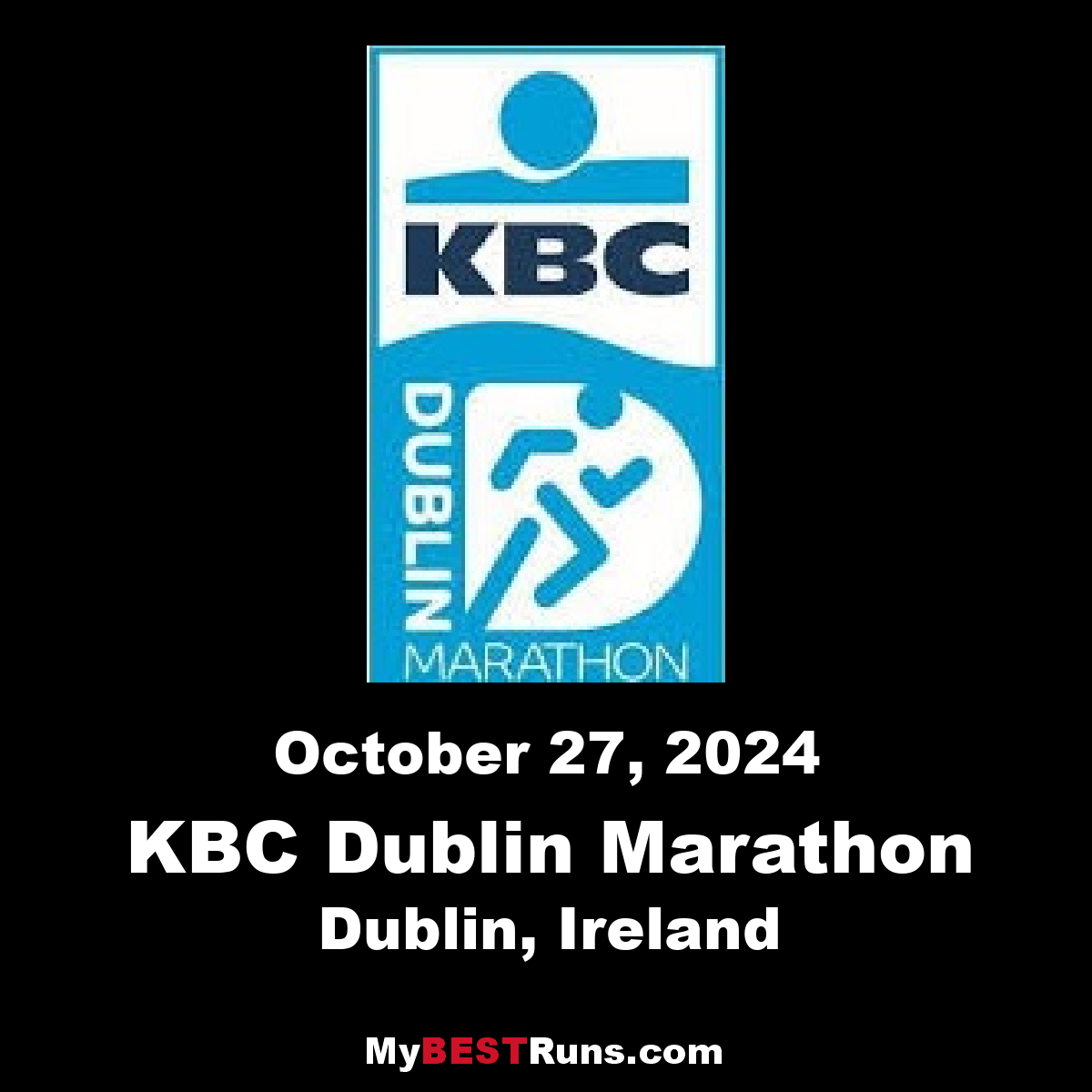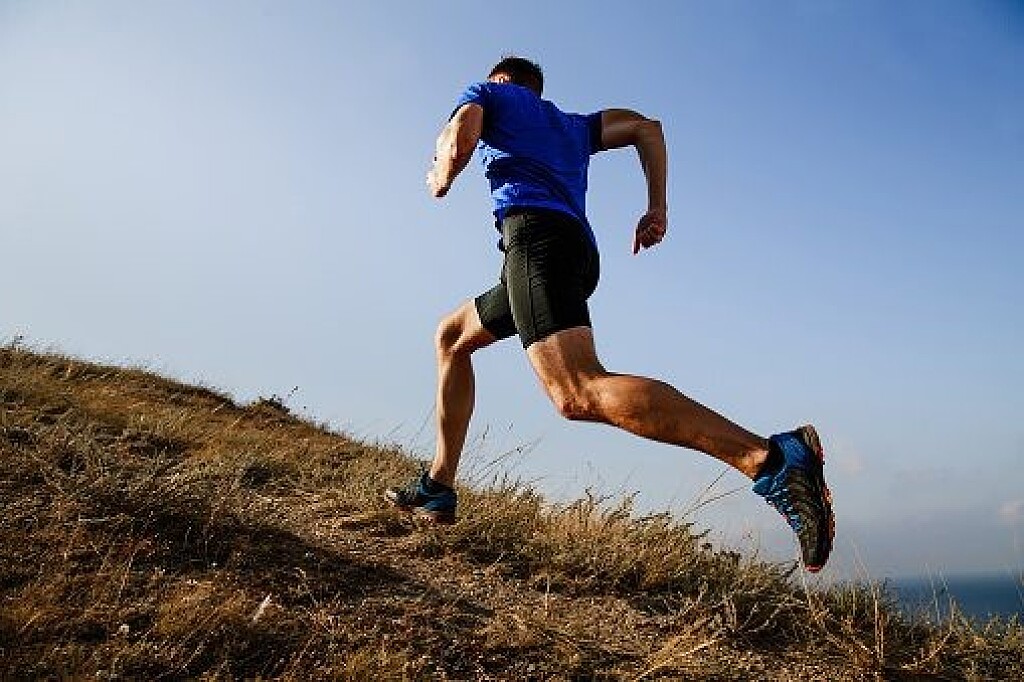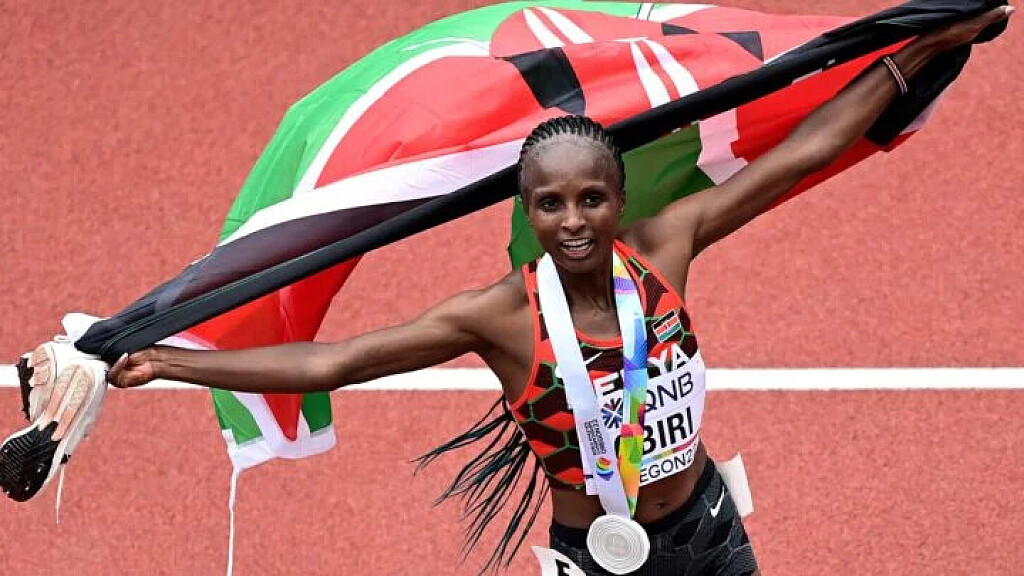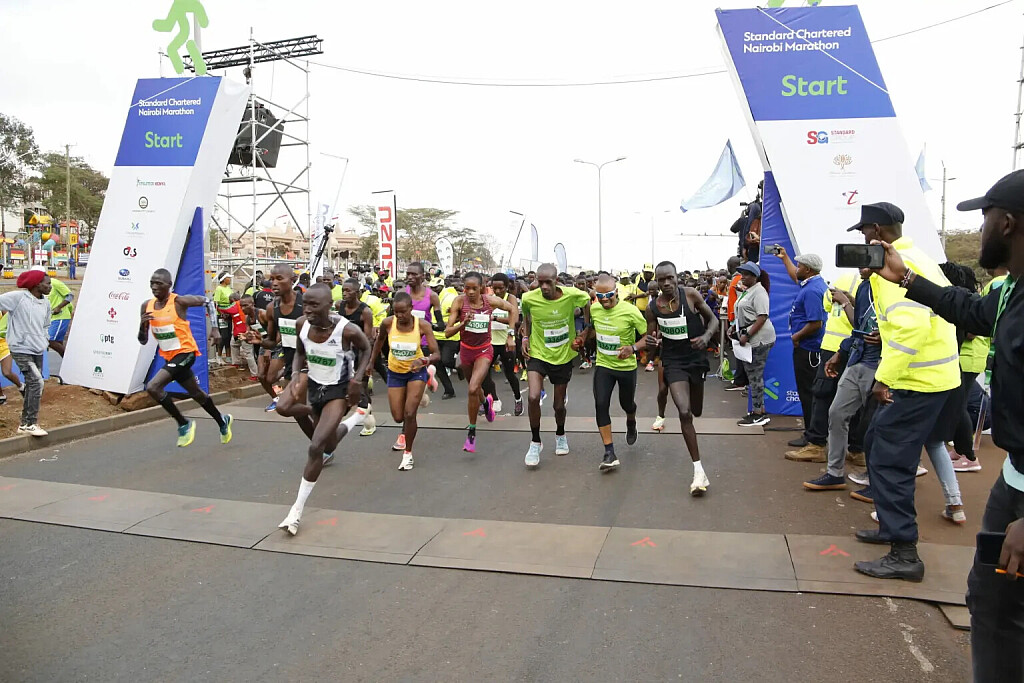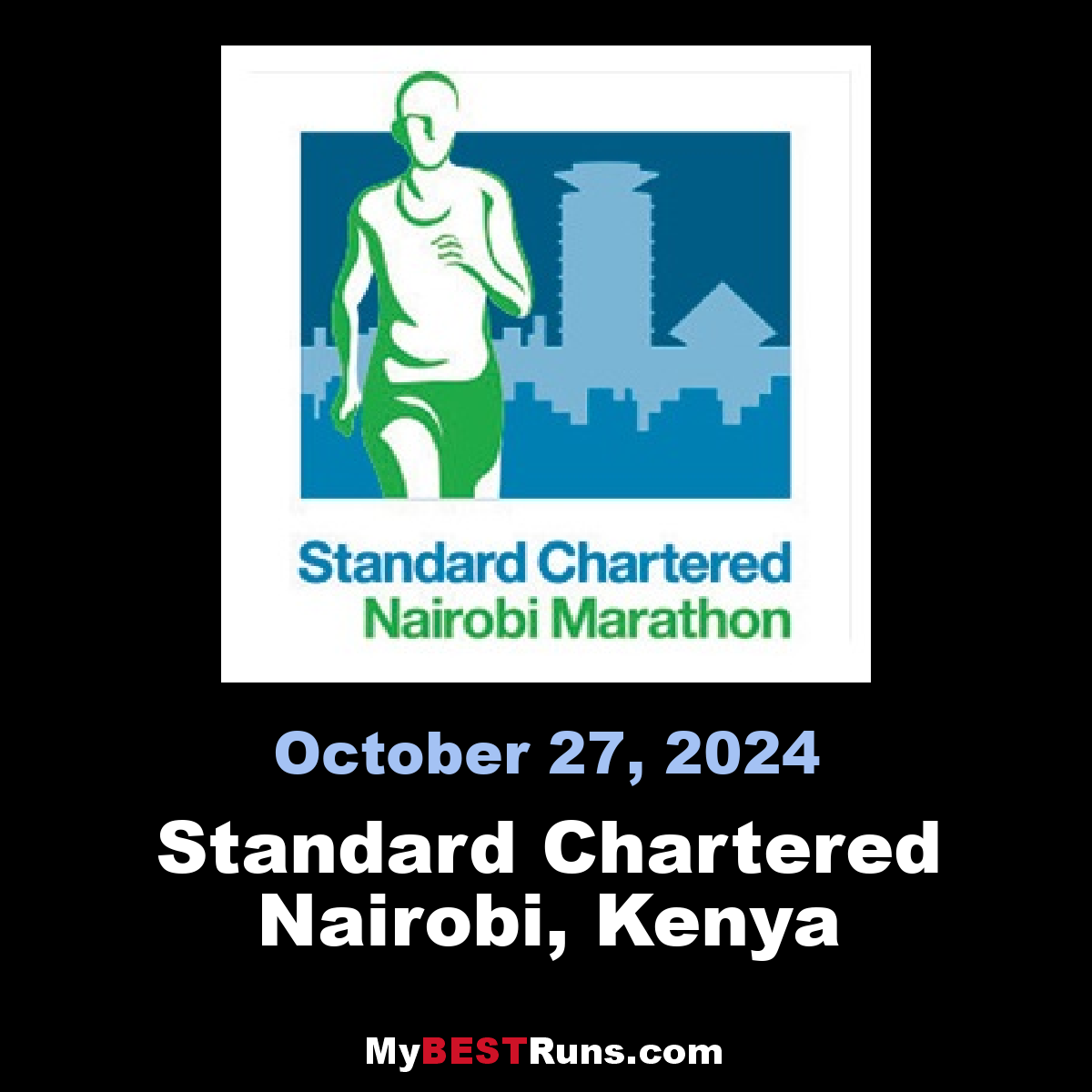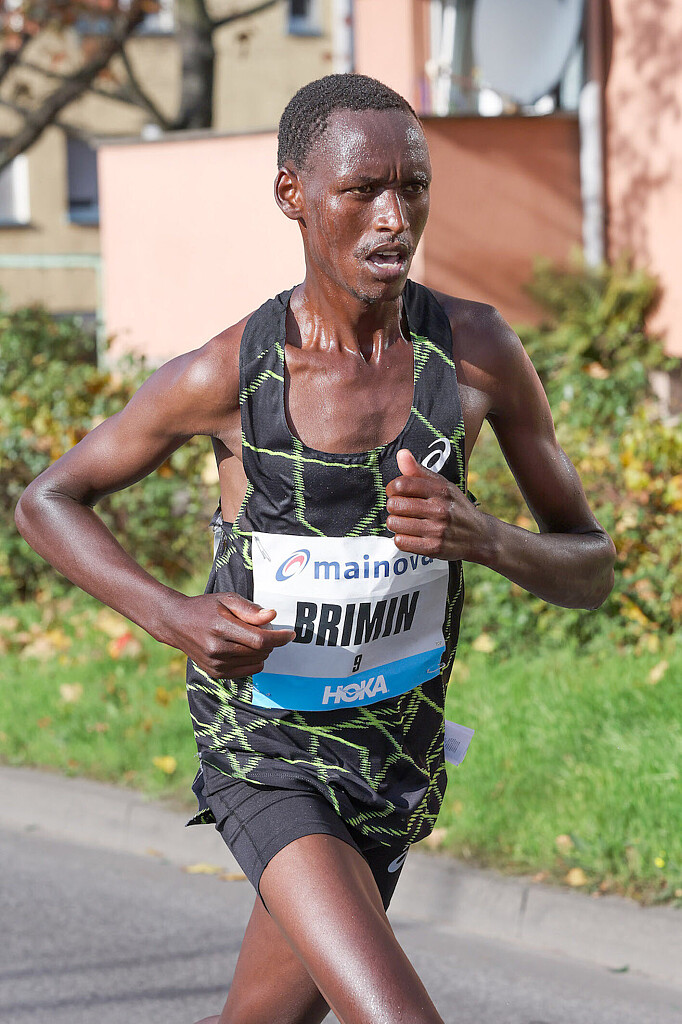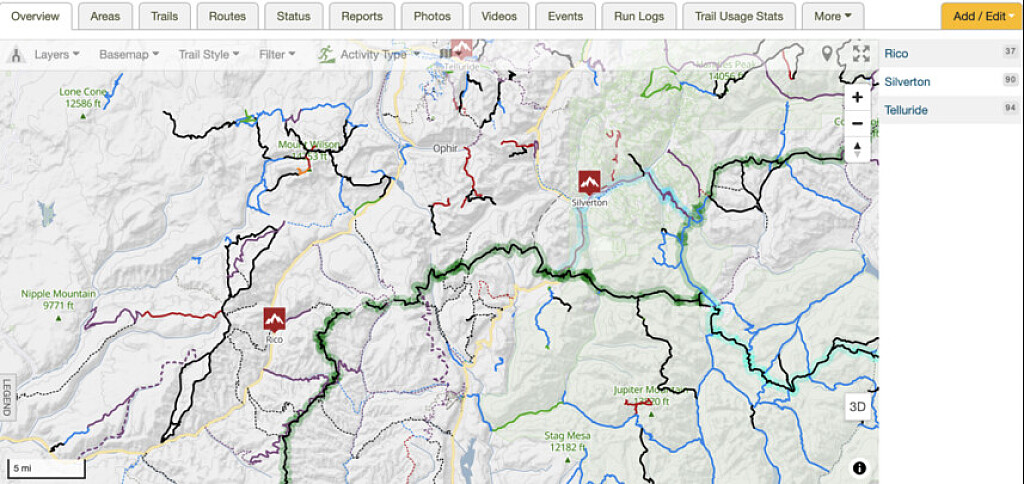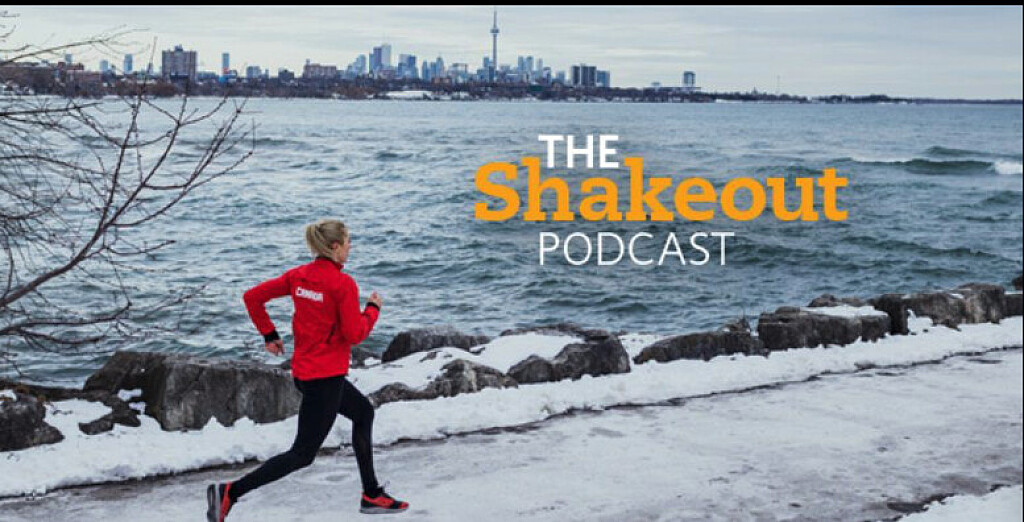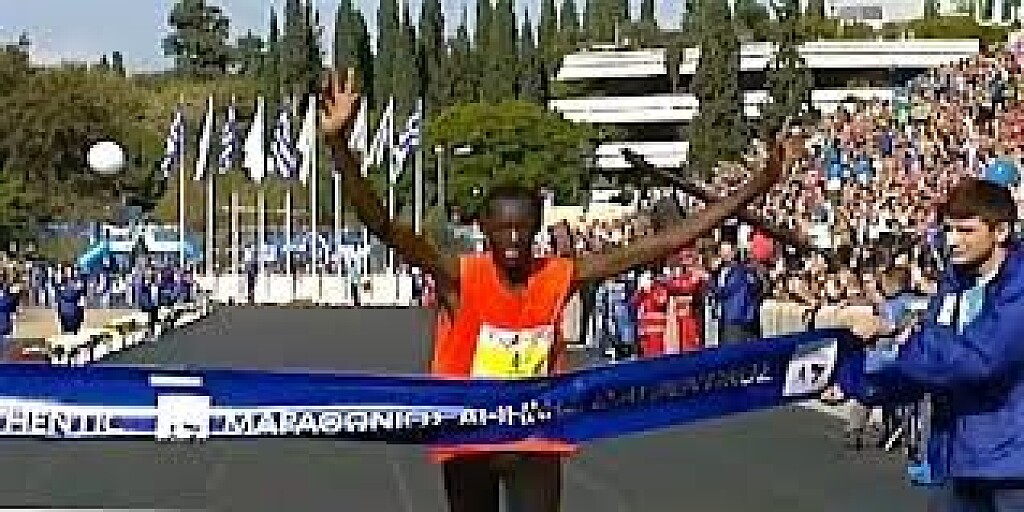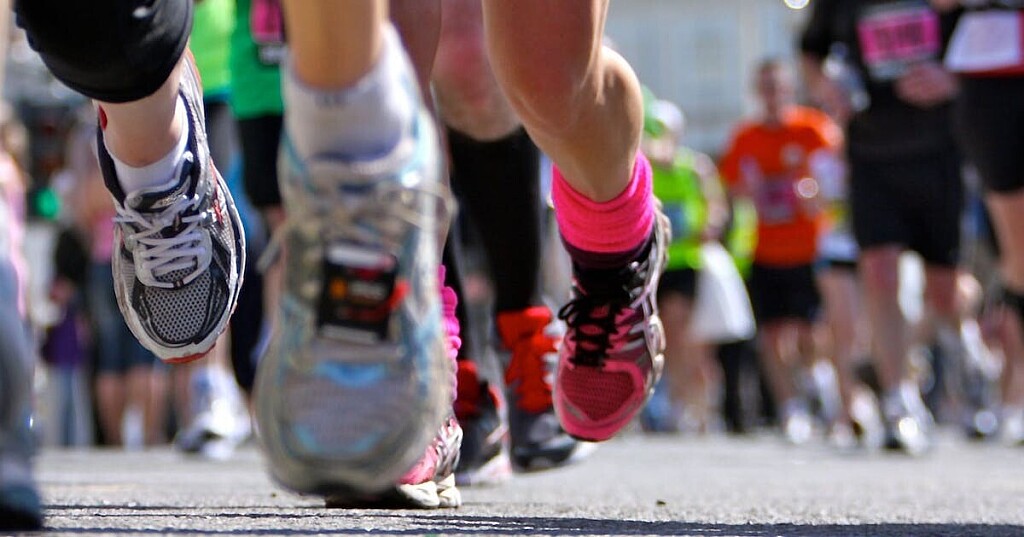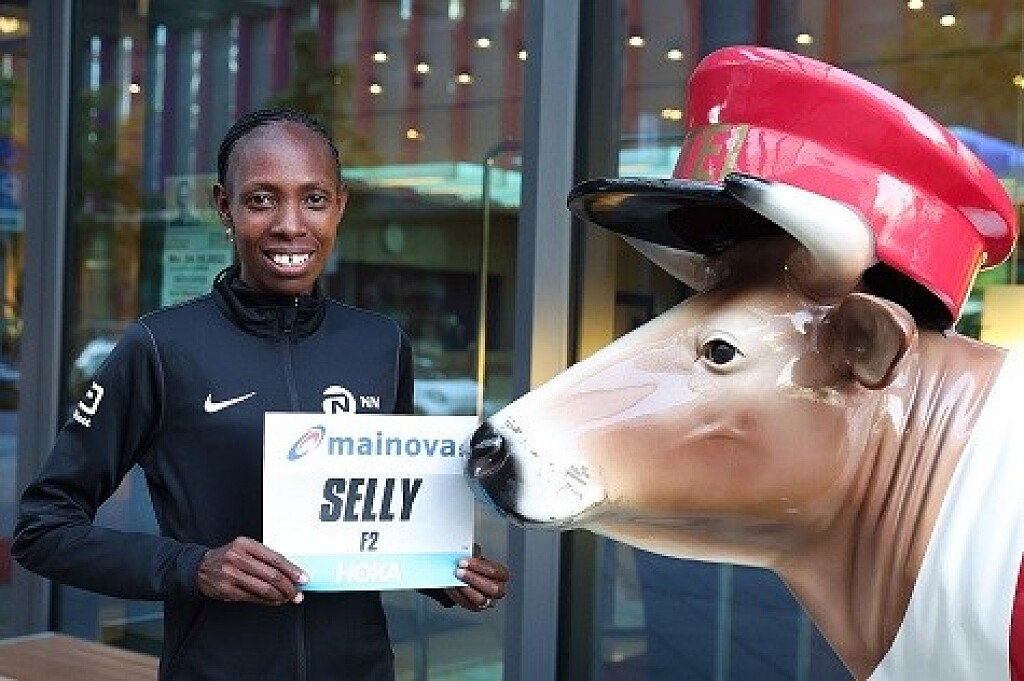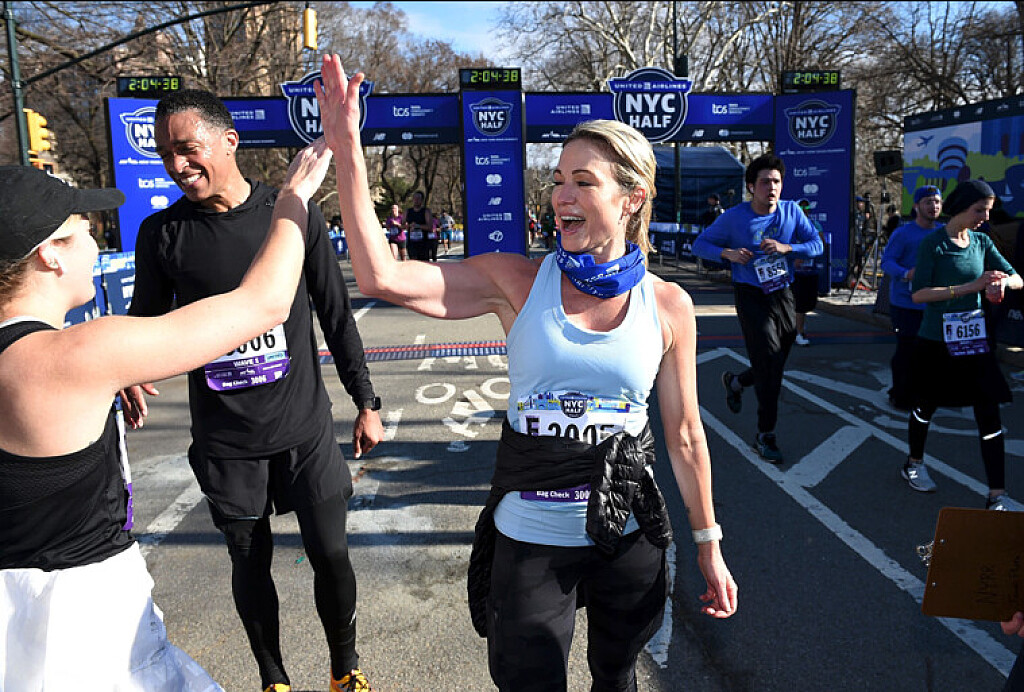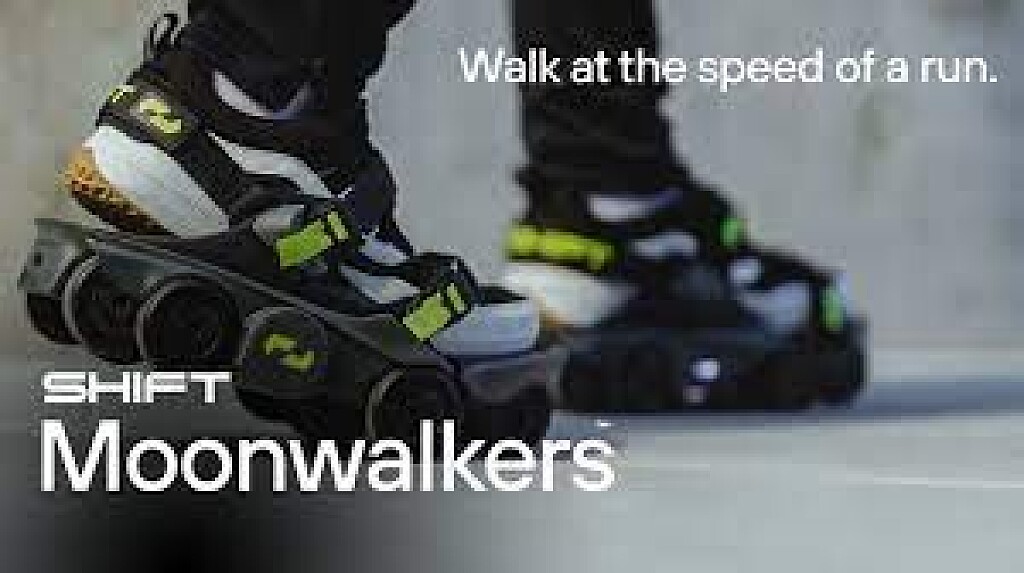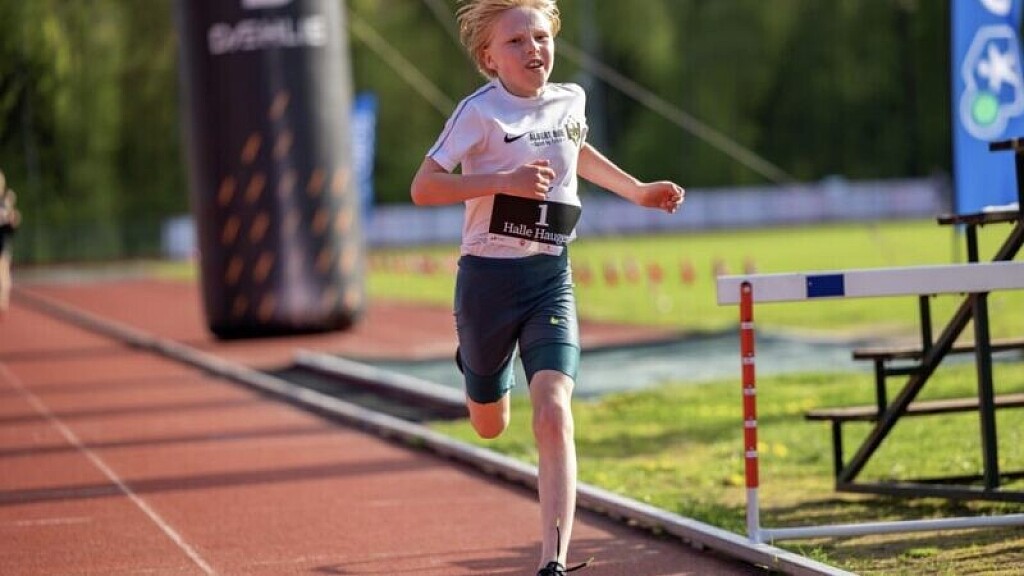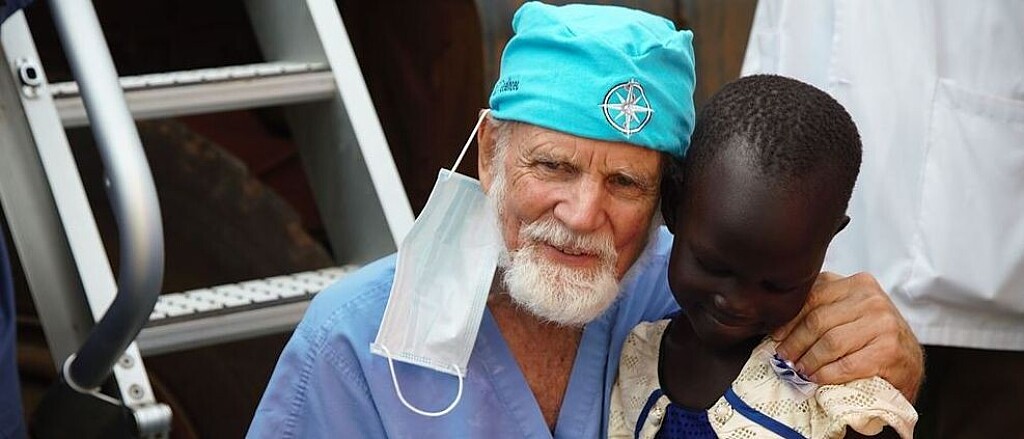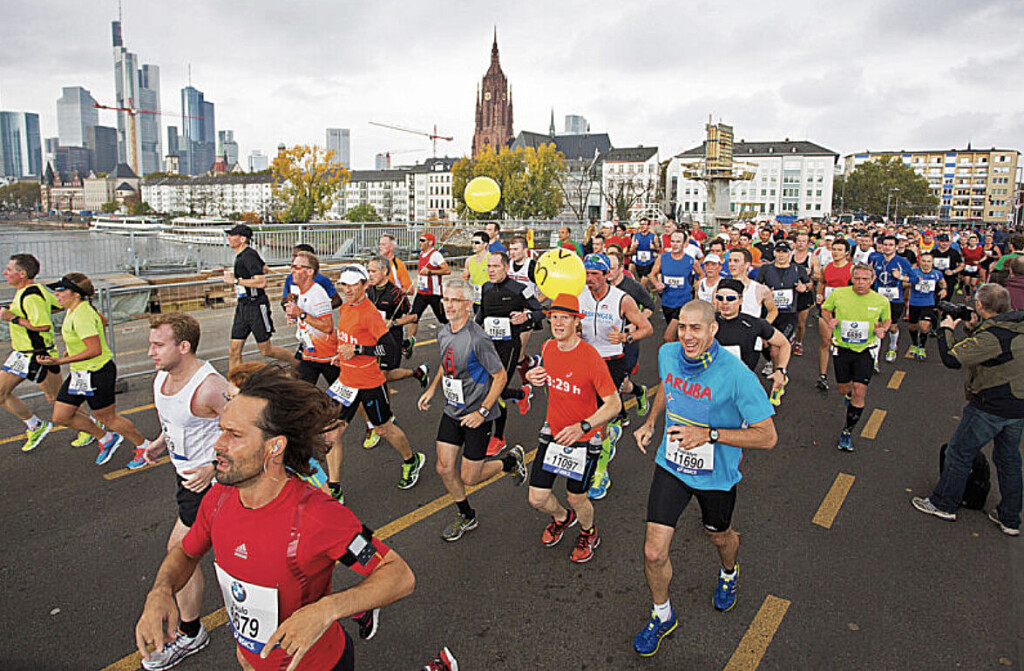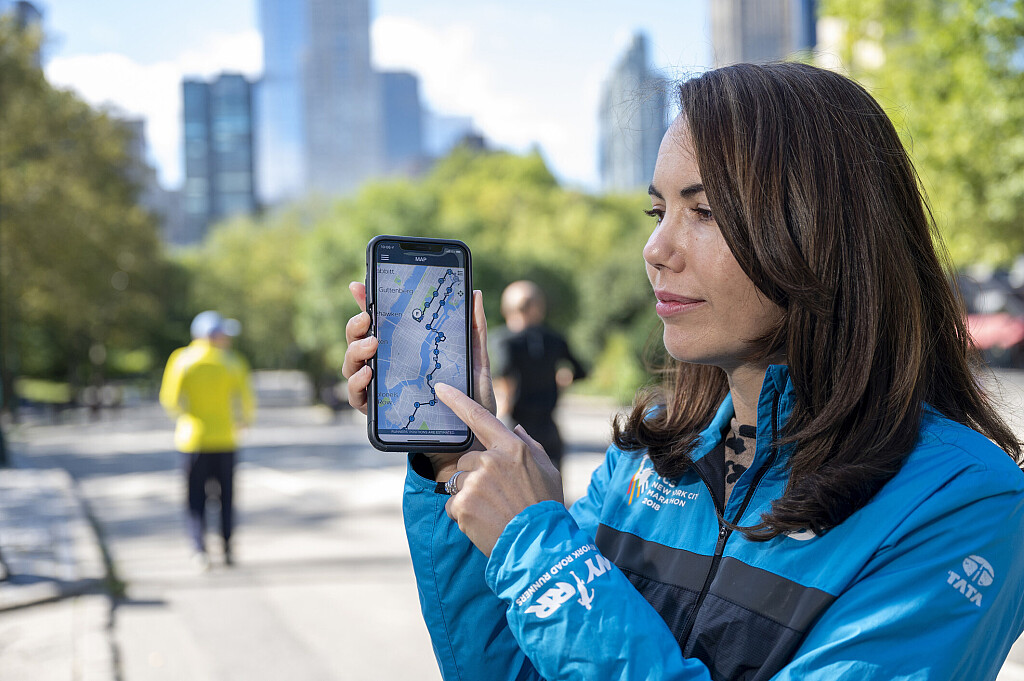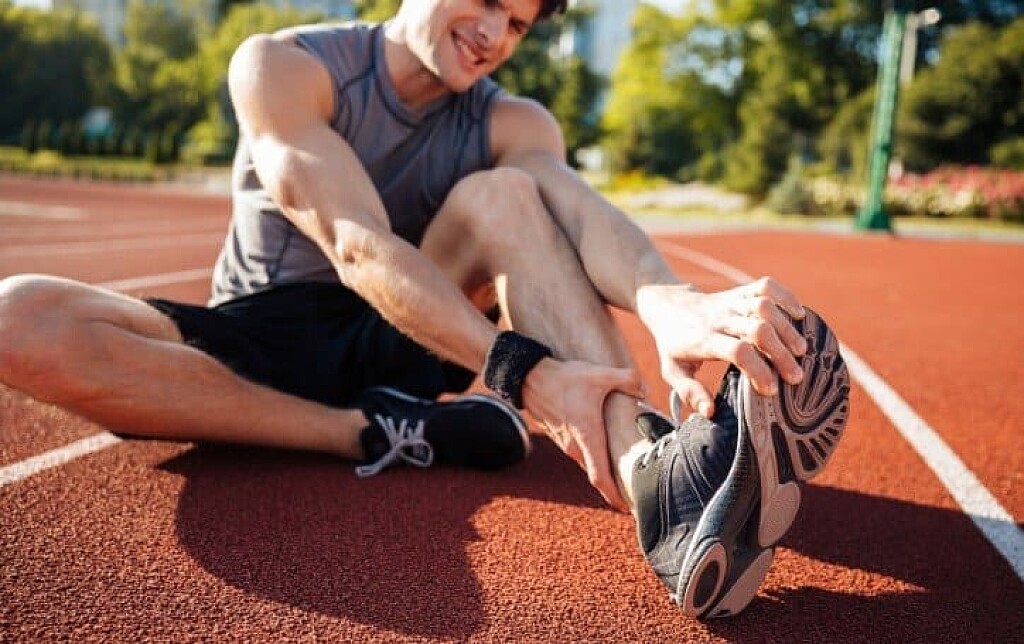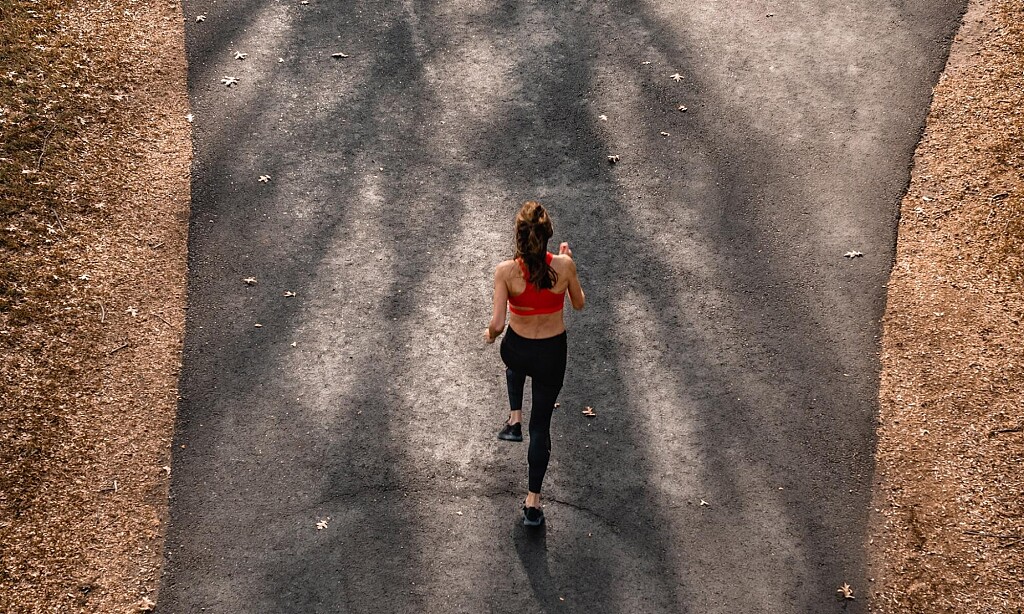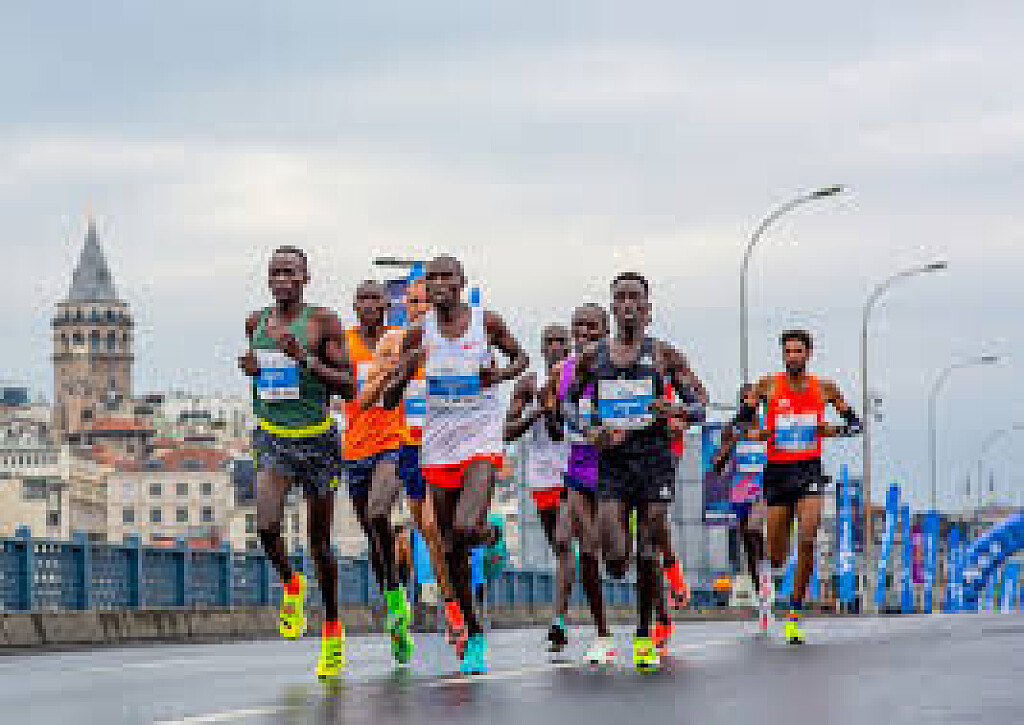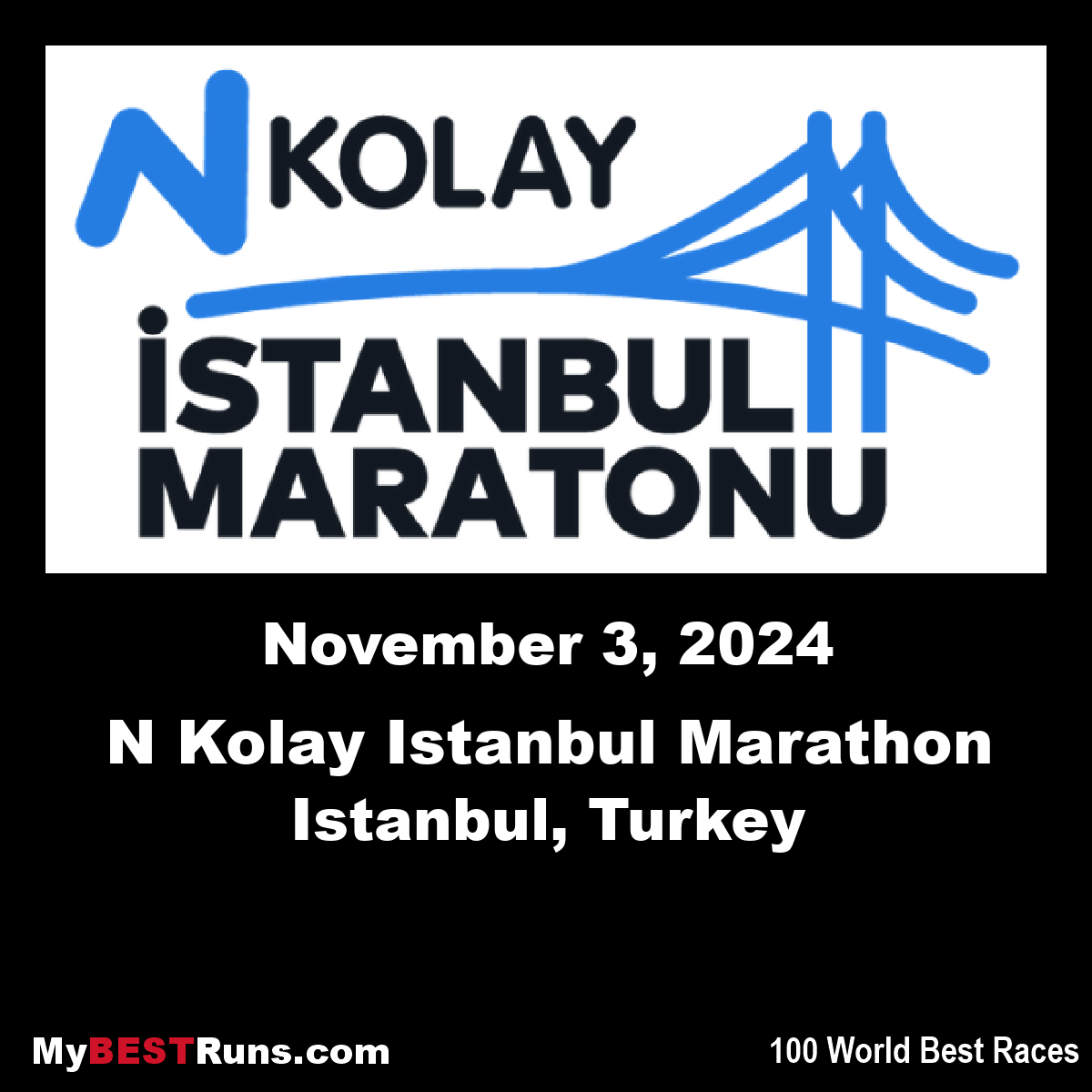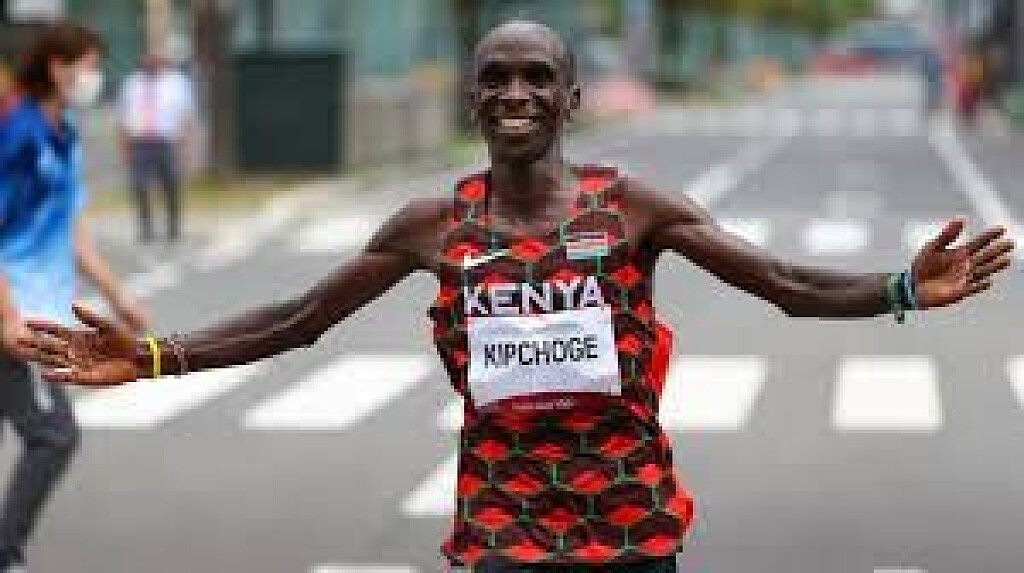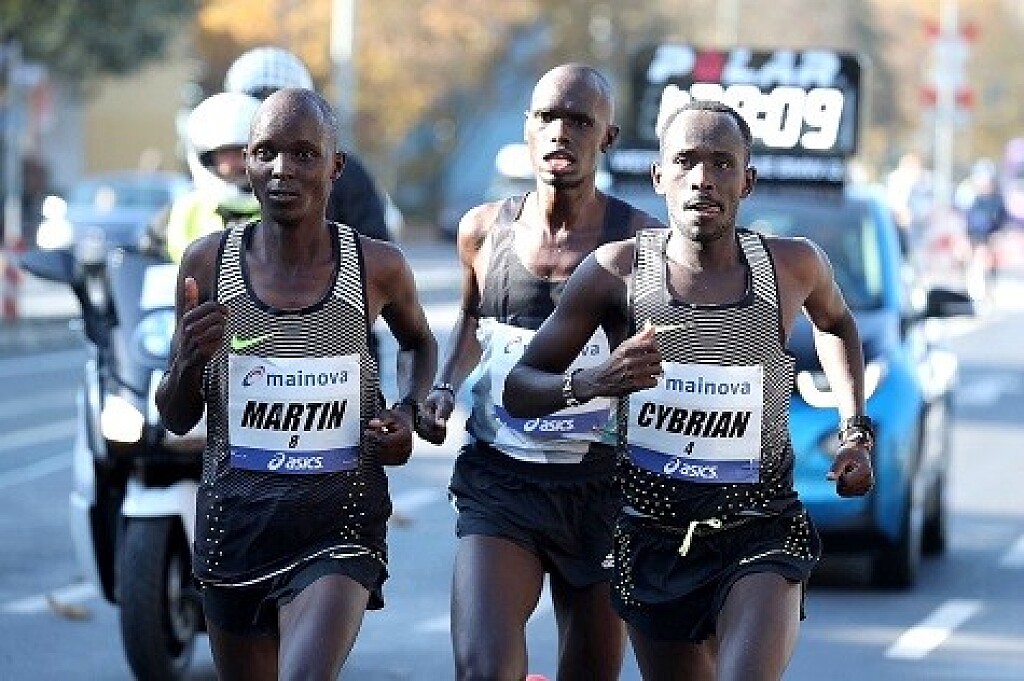Running News Daily
Running News Daily is edited by Bob Anderson. Send your news items to bob@mybestruns.com Advertising opportunities available. Train the Kenyan Way at KATA Kenya and Portugal owned and operated by Bob Anderson. Be sure to catch our movie A Long Run the movie KATA Running Camps and KATA Potato Farms - 31 now open in Kenya! https://kata.ke/
Index to Daily Posts · Sign Up For Updates · Run The World Feed
Eliud Kipchoge wants you to learn to say no
The world’s fastest marathoner, Eliud Kipchoge, says you need more ‘vitamin N’ in your life. Vitamin N, Kipchoge explains, is the ability to say no–a key part of self-discipline, something Kipchoge embodies in his athletic ability and the calm confident ease with which he speaks and conducts his life.
Kipchoge is in New York City to watch the marathon. He is planning on running it maybe in 2023. And of course he wants to win it as well as Boston.

Kipchoge shared some tips on how to develop and maintain self-discipline in a recent interview with U.K.-based physician, author and podcast host Dr. Rangan Chatterjee. Here’s how to inject some of Kipchoge’s wisdom into the way you run and live.
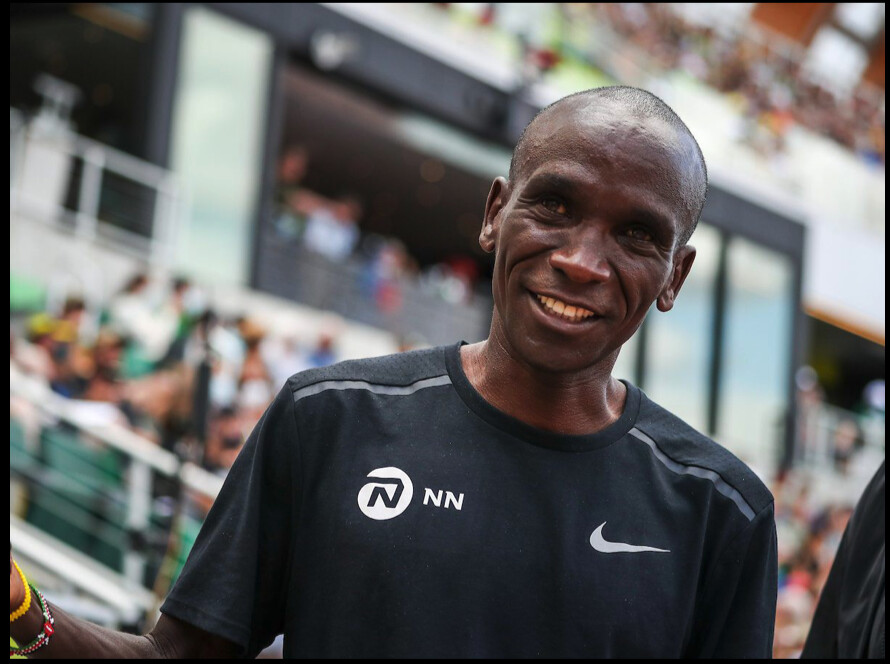
Develop self-discipline as a practice
Kipchoge emphasizes the importance of self-discipline as a core value. “Self-discipline is doing what’s right instead of doing what you feel like doing,” the athlete explains. While Kipchoge embodies self-discipline in his training and preparation for racing, he says that fine-tuning this skill will make you not only a better runner but also stronger in your professional life and family.
The runner shares that he believes you should practice self-discipline in all areas of your life–and that by doing so, you will find freedom. “The disciplined ones in life are free,” the athlete says. “It’s the undisciplined ones who are in prison,” Kipchoge says. He explains: when you live an undisciplined life, you’re doing things that do not align with your values. “We need to be free, to walk free, to live an honest life,” he says.
Set your priorities (learn to say no)
While Kipchoge acknowledges that learning to say no is a skill that isn’t developed overnight, he shares that being able to say no in order to prioritize the truly important things in both training and life is essential. At the NN Running camp in Kaptagat, Kenya, where Kipchoge trains and lives, he has placed a huge billboard to remind athletes of their core values– a whopping 60 of them.
Kipchoge suggests focusing on three values or priorities is enough, and making the personal and professional choices that will keep you on the path to your goals should be something you practice daily. Establishing boundaries allows you to stay focused and on the path toward your goals.
Avoid complaining and stay positive
Kipchoge knows this isn’t easy. Even the champion of the marathoning world feels pain and has negative thoughts. “We can’t prevent the negative thoughts from entering into our minds–but we can keep the negativity from coming into our lives,” he says. Pivotal to the athlete’s positive mindset is community. “Group runs are crucial,” says Kipchoge. The athlete explains that running in a group makes helps time pass, forms bonds, and that a group mentality and positive mindset is contagious.
(11/05/2022) ⚡AMPby Running Magazine
Trans female athletes: banning them from elite competition not supported by science, report says
Areview of the available literature on transgender female athletes who have taken steps to reduce their testosterone concludes there is no legitimate basis for their being banned from elite competition. “Transgender Women Athletes and Elite Sport: A Scientific Review”, commissioned by the Canadian Centre for Ethics in Sport (CCES), considered English-language scientific studies with a biomedical or sociocultural slant, as well as some “grey” (non-academic) literature published between 2011 and 2021, and focused on the science of testosterone and its effect on sports performance.
The review’s authors report there’s no evidence that trans women retain a performance benefit after 12 months of testosterone suppression. However, CCES president and CEO Paul Melia underlined the need for further research while urging that trans female athletes be included and welcomed in women’s elite and high-performance sports until the evidence shows significant harm or lack of fairness to other participants.
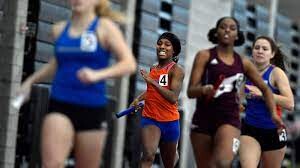
The review points out that there is almost no research on the performance advantage held by trans female athletes over cisgender women (those whose gender identity conforms to their birth sex) before and after HRT (hormone replacement therapy); they are presumed to have an unfair performance advantage based on studies using cis men or sedentary trans women rather than trans women athletes, and therefore the findings cannot be used to justify banning them from elite sport.
The report’s first Key Biomedical Finding states that “Biological data are severely limited, and often methodologically flawed.” The second says that “Some significant studies [on the impact of testosterone suppression] used misleading data sources and actively ignored contradictory evidence.” The third states that the available evidence shows that “trans women who have undergone testosterone suppression have no clear biological advantages over cis women in elite sport.”
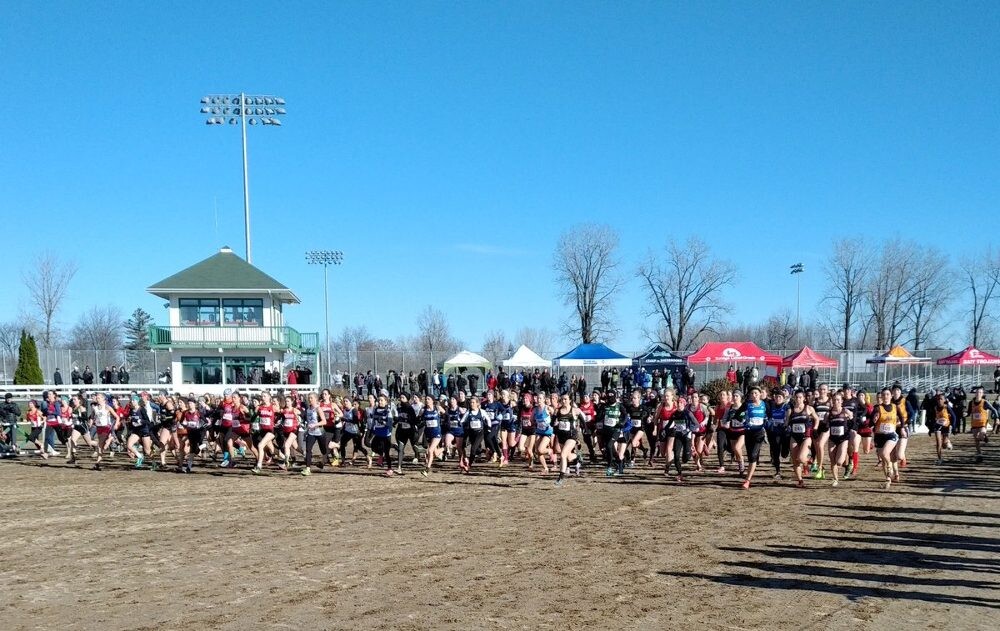
The International Olympic Committee’s current guidelines on transgender women athletes, which date from 2015, require them to have suppressed their testosterone to not more than 10 nanomoles per litre for at least 12 months before competing at the Olympic Games; previous to 2015, they were required to have had sex-reassignment surgery. There was some effort to tighten the rules going into the 2020 Games by scientists who claimed the current rules were too lenient, but discussions did not result in a new policy.
The review, which was carried out by E-Alliance, a research hub for gender equity in sport led by Dr. Gretchen Kerr of the University of Toronto and Dr. Ann Pegoraro of the University of Guelph, dealt only with male-to-female transgender athletes in any sport and cautions that the results may not be applicable to non-binary or intersex athletes.
(11/05/2022) ⚡AMPby Anne Francis
California runners honour Banksy with impressive Strava art
Two well-known Strava artists gave ‘kudos’ to the famous street artist Banksy, sketching his famous “Girl with Balloon” by GPS in San Francisco. Lenny Maughan and Frank Chan collaborated to honour the tenth anniversary of the UN’s International Day of the Girl.
Maughan and Chan’s sketch covered 47 kilometres and more than 900 metres of elevation gain in one of the hilliest cities in North America. Maughan has over 10,000 followers on Strava and has previously drawn sketches of a tiger for the Lunar New Year and a sunflower for solidarity in Ukraine.
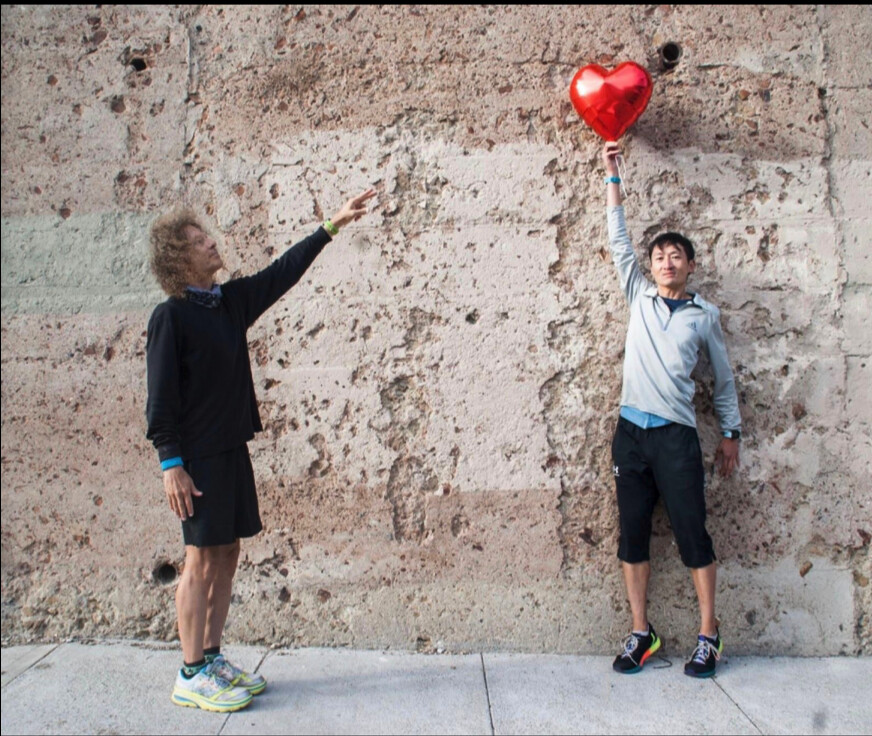
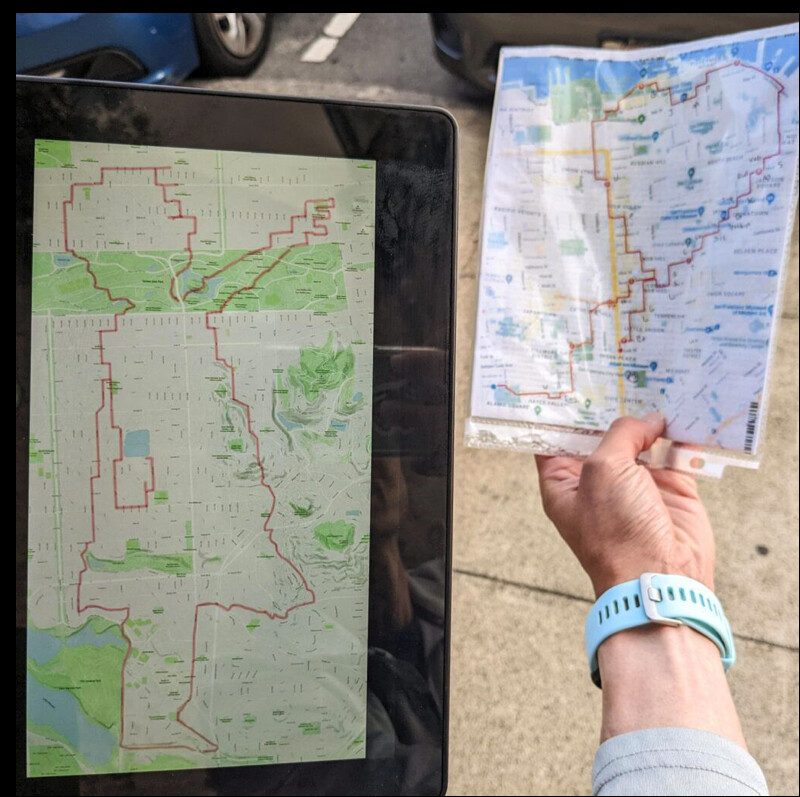
Earlier this year, Chan gained Strava popularity after he sketched a photo of him and his mother for Mother’s Day.
Banksy’s original mural of “Girl with Balloon” was drawn on London’s Waterloo Bridge in 2004, though it does not remain.
Although Banksy has not articulated the meaning behind the sketch, many interpret the mural as a symbol of lost innocence, while others believe the girl is setting the balloon free–either way, both remind the beholder to hold on to hope, even when it feels out of reach.
(11/05/2022) ⚡AMPby Running Magazine
Ultradistance Project: Study Examines the Psychological Profile of Ultrarunners
It is a frequent assumption that there are certain personality traits common to a lot of ultrarunners, but up until now there has not been a significant body of research conducted to explore this area, and to explain what it is that drives us to incredible lengths in pursuit of our goals.
Recently, three sports psychologists identified this gap and launched a survey — the Ultradistance Project— which you are invited to be a part of, into the psychological profile of ultrarunners. This deep dive into our motivation as runners and what makes us tick, as well as character traits and behaviors not obviously linked with our running, was first conducted on athletes participating in the 2022 IAU 100k World Championships in Berlin, Germany.
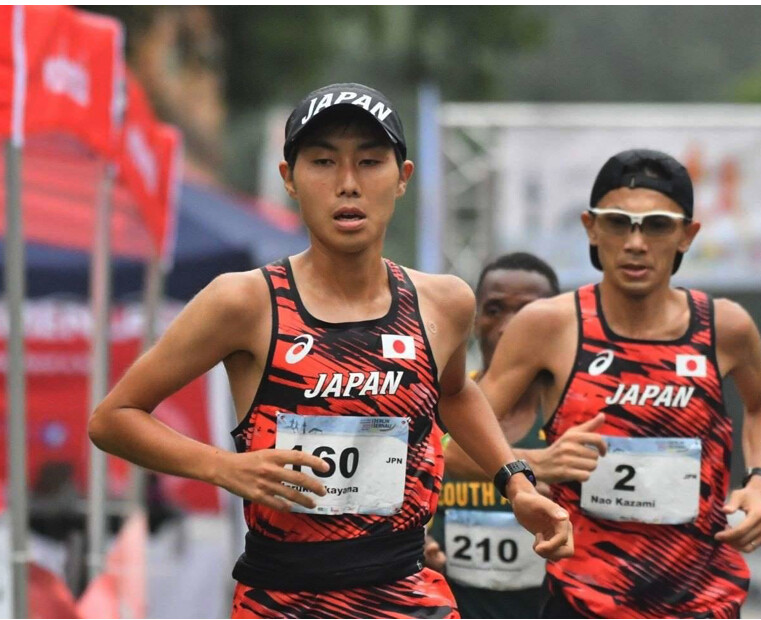
In the interest of gathering more data to produce a more useful study, the researchers have now opened the survey up to the general ultrarunning population and it can be competed in a choice of three languages at the links below:
English
Spanish
Portuguese
The researchers behind the study are Juan González Fernández (Phd), a sports psychologist at the Department of Personality, Evaluation, and Psychological Treatment at the University of Granada; Abel Nogueira López (Phd), a researcher at the University of León and postdoctoral fellow at the University of Santiago de Compostela and the University of Lausanne; and Pavao Vlahek (MD, Phd), professor at the University of the North in Croatia and a specialist in physical medicine and rehabilitation.
They hope the findings of the study can be used not only to help future runners prepare for endurance events, but that they will also find applications in everyday life when it comes to dealing with stressful situations. Vlahek said, “We believe that it is very important to know the psychological strategies that allow us to deal with these types of extreme situations that occur during competition and training for these events, as this can help us to help prepare anyone who wants to participate in an event with these characteristics, as well as to try to transfer this knowledge to the general population, and thus help them to deal with any serious situation that they may have to face.”
Take a few minutes to have your say, and keep your eyes peeled for the results to come from this fascinating study!
(11/05/2022) ⚡AMPby I Run Far
2022 World Mountain Running Championships Uphill Results: McLaughlin and Kipngeno Win
It’s finally happening! Years of postponements are done and the first-ever combined World Mountain and Trail Running Championships have started. The festivities are all just outside of Chiang Mai, Thailand, a city of 127,000 people in the mountainous northern part of the country.
Friday’s Uphill race went 8.5 kilometers uphill and with 1,065 meters of gain. Alternately, that’s 5.3 miles and 3,500 feet of elevation gain.

Allie McLaughlin (USA) dethroned Andrea Mayr (Austria) for the women’s crown. The pair raced up in 55:15 and 55:41, and Maude Mathys (Switzerland) was just behind in 56:00 for third.
McLaughlin just came off the Golden Trail World Series Finals in Portugal. Mayr, now 43 years old, is a six-time World Mountain Running Champion, typically excelling in uphill years. All three are expected to double back for the Classic Up and Down race on Sunday.
Monica Madalina Florea (Romania) and Onditz Iturbe (Spain) were fourth and fifth in 57:44 and 57:56.
[In 2015, Maude Mathys received a warning without suspension from the Disciplinary Chamber for Doping Cases of Swiss Olympic for two positive tests for clomifene (previously clomiphene) after it was determined that she was mistakenly taking the drug without first obtaining a World Anti-Doping Agency Therapeutic Use Exemption.]
n the teams competition, Team USA took gold, Great Britain and Northern Ireland took silver, and Switzerland rounded out the podium in third.
(11/05/2022) ⚡AMPby I Run Far
B.C. woman running a marathon a day to end toxic drug death
Twenty-five-year-old Aubrey Michalofsky had recently completed Selkirk College’s Law and Justice program, graduating with awards in 2021. On Aug. 30, the day before International Overdose Awareness Day, Aubrey died of fentanyl poisoning.
Just over a month later, his mother, Jessica Michalofsky, 51, ran a marathon around the 600-meter block that houses the Ministry of Health in Victoria. She has run a marathon every weekday since, and plans to continue until the provincial government does something meaningful in the fight against toxic drug deaths.
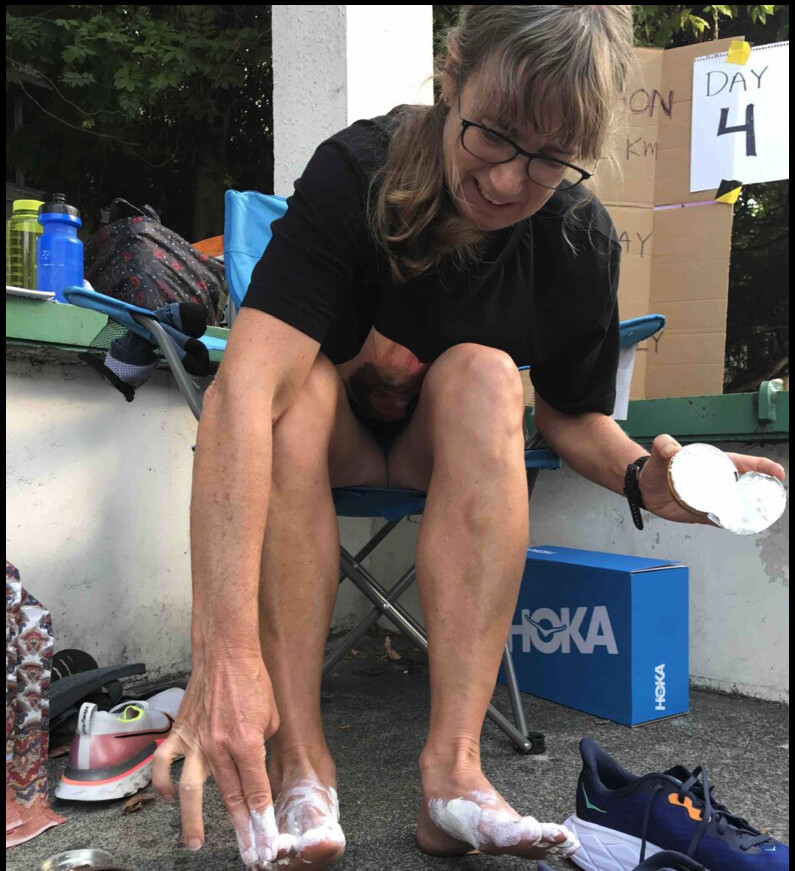
It takes Michalofsky 71 laps to complete 42.2 kilometres, and she runs five days a week. “Grief was making me feel crazy,” Michalofsky says. “I knew that Aubrey’s death had been preventable and I had to do something.”
Michalofsky is running to put pressure on the B.C. government to respond to the seven-year-long toxic drug public health crisis. The leading cause of death for 19-39-year-olds is toxic drugs. For 40-59 year-olds, it’s the second leading cause of death, and six people die in B.C. from overdoses every day. The majority of those deaths occur in private residences, and many are young men in the trades.
“This data [from the B.C. coroner’s report] flies in the face of the popular perception of the opioid crisis, which tends to portray toxic drug death as happening on the street and to persons experiencing homelessness,” Michalofsky says.
While the B.C. government has acknowledged that providing drug users with alternatives to the toxic black market supply is the safe way forward, Michalofsky says they haven’t taken any action to actually provide those alternatives. “Only a very small fraction of people in B.C. who struggle with drug use have access to safer drugs. The rest play Russian roulette each and every time they take drugs.”
Michalofsky is asking the B.C. minister of health, Adrian Dix, to provide evidence that the government is rolling out safe supply as per their 2021 announcement. She has questions, and she won’t stop until she sees action. “If safe supply is so crucial, where can I get it in rural communities?” she asks. “If my son or daughter is going through withdrawal, trying to get off street drugs, where can I send them so that they don’t end up turning to toxic black market drugs? If I’m a casual drug taker, and I want to experiment with drugs, how can I make sure I’m not going to die?”
Running to create social change
Calling herself an adult-onset runner, Michalofsky began running in her late 30s, running road races for several years before jumping into triathlon events. She completed Ironman Penticton on Aug. 28–two days before her son died. Michalofsky had plans to head to the Kootenays with Aubrey post-race for a week’s vacation. “He had died only hours before I arrived in Nelson,” she says.
Aubrey began using drugs when he was 17. At the time of his death, he had been living with his father, Rae Pryor, in the small B.C. community of Winlaw. Aubrey had enrolled in a methadone treatment program but struggled to find transportation to the city of Nelson to make appointments and pick up his allotted dose, as is the case for many people who live in rural communities or don’t have access to vehicles. He left the program five weeks before his death.
“Running as a political protest is not new–many people run for humanitarian and political reasons,” says Michalofsky. “And of course, in Canada, we have Terry Fox to thank for showing us how one differently abled man was able to start a revolution in cancer care.”
His mother describes Aubrey as a deeply compassionate person. He had expressed interest in joining a restorative justice program. Michelofsky says she sees what she’s doing as a form of embodied restorative justice: “We are using our bodies to effect social change. And I say we, because it’s not just me anymore. Every day, more and more people come to the Ministry of Health and run with me.”
A community of support
After 14 days of marathons, Michalofsky found herself facing injury–tibialis anterior tendonitis. She tried walking the distance in a walking cast, but that also become too painful. She didn’t want to quit, but knew she needed to take a few days off to heal. Michalofsky posted on social media, asking for people to come out and run for her. “I was flabbergasted when over 20 people showed up in a single day. Some of them were runners from my running community, some were friends and family members, and most amazingly, some were people who had seen my story on the news,” she says.
While Michalofsky is back to running, people continue to join her. Some have a direct connection to her story–they too have lost family members to toxic drugs; some are simply people who want to help. “One day a big group of new parents with babies in strollers came down with signs that said ‘Babies 4 Safe Supply.'” Michalofsky says they have returned every week, and Wednesdays are now called Babies Day. “It’s extremely heartwarming. And it’s helping me in my grief.”
Michalofsky welcomes the support. “If you’re in Victoria, come down and run or walk with me. If you’re not in the city, consider starting your own run. You could run a lap around your MLA’s office–make a few cardboard signs and invite your friends: consider making it a weekly event,” suggests Michalofsky.
On Friday, the one-month anniversary of her run, a rally for safe supply will be held at the intersection of Blanshard and Pandora, where Jessica runs. Michalofsky also asks supporters to share her social media posts on Facebook and Instagram because, as she notes, “In the political world, it’s all about exposure.”
“I’m trying to embarrass the government,” she says. “I’m trying to prompt them to take action and give this public health crisis the attention it deserves and stop preventable death. If it takes somebody’s mom to do that, I’m game.”
(11/05/2022) ⚡AMPby Running Magazine
Marathon Nice-Cannes gets a new women’s event record
Fikadu runs 2:28:15 to beat previous best by over two minutes
On Sunday morning, at 8:00 am, it was under a clear blue sky that the 10,528 competitors of the 14th edition of the French Riviera Marathon Nice-Cannes set off.
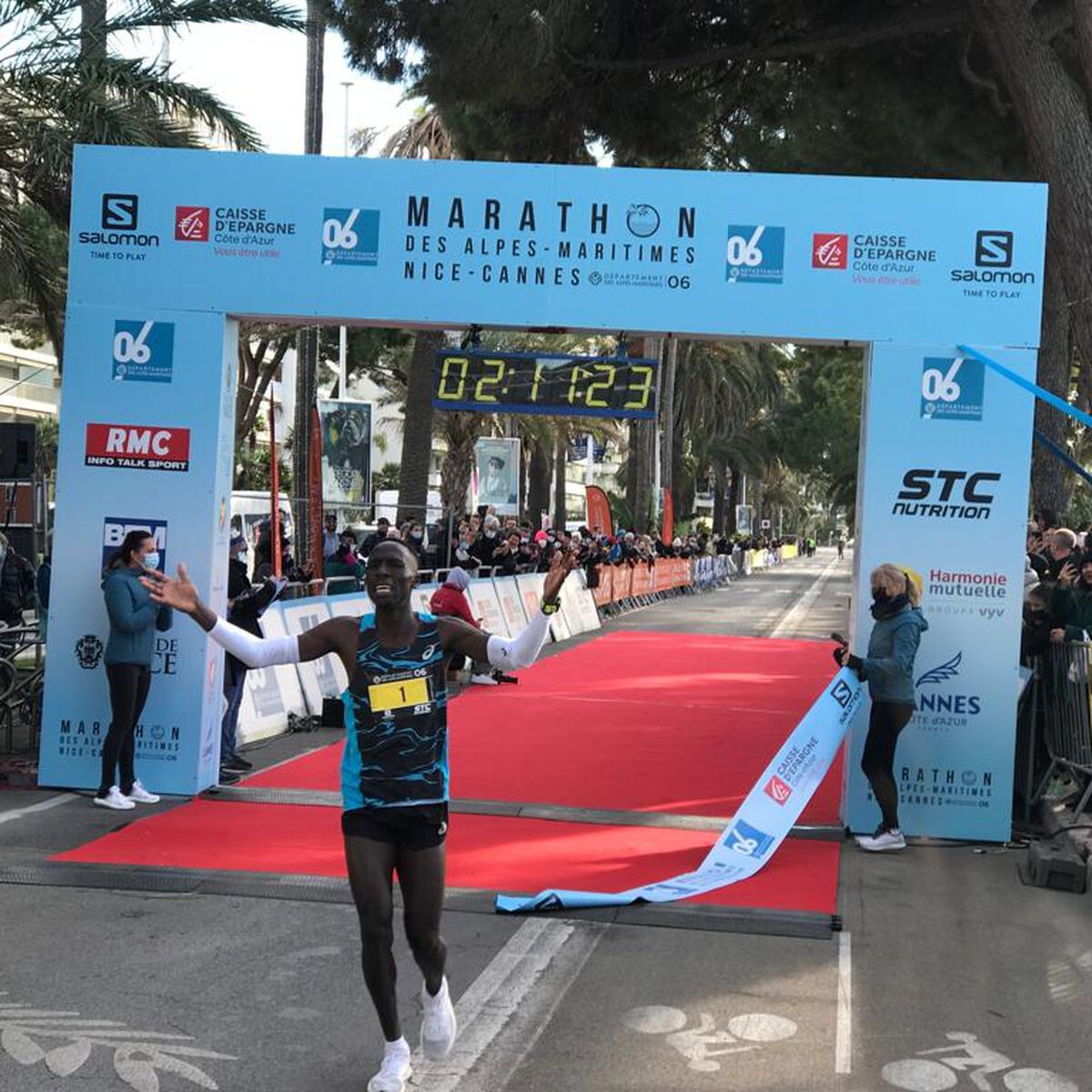
They left from the Promenade des Anglais, 500 meters from the Hyatt Regency Palais de la Méditerranée in Nice, to reach Cannes and its famous Croisette, in front of one of its famous five-star hotels: the Martinez by Hyatt hotel!
“What a pleasure to have run alongside more than 10,500 athletes during this 14th edition of the Nice-Cannes Marathon! A unique race with an exceptional route, a great sporting and human gathering that conveys a taste for effort, a sense of sharing and solidarity, health through sport, and the international promotion of our region. Not forgetting ecology and environmental protection, through actions to reduce its environmental impact, in line with the Green Deal policy. I am proud that the Department has been the title partner of this event for years. I would like to thank the many volunteers who worked before and during the race throughout the 42.195km, Pascal Thiriot, President of Azur Sport Organization, the towns along the route, and all those who contributed, alongside the Department, to the success of this international sporting event. I congratulate all the runners for their participation!” said Charles Ange Ginésy, President of the French Riviera Department.

Long months of physical and mental preparation were needed to give it all today and to be in the best shape, as the long-awaited sounding of the saving shot was given by Charles Ange Ginésy, President of the French Riviera Department and José Cobos, City Councillor of Nice, Delegate for Sports Events and Hosting of International Sports Competitions.Charles Ange Ginésy took part in the relay race with his elected colleagues wearing the colors of the French Riviera Department.
As usual, the leading group led by the Kenyan and Ethiopian athletes started with a bang.
The three Kenyans John Langat, Vincent Rono and Japheth Kosgei took the lead until 30km with a pace of 2:08:30. It is only at 32km that the race becomes more tactical. Vincent Rono speeds up on the exit of Juan-les-Pins in front of Kosgei and Langat, who seems to be in more difficulty. Finally, at the 37 km, Kosgei broke down and takes the marathon wall. Rono and Langat continue the race neck-and-neck, neither of them wanting to give way to the other. It was two kilometers before the finish line that Langat took the lead to win in 2:10:25. Rono took the second step of the podium in 2:10:40 followed by Kosgei in 2:13:39. The first Frenchman and Maralpin, Lucas Gehin finished in 6th place overall in 2:30:06.
In the women’s race, the two favorites Ethiopian Zenebu Fikadu and Kenyan Sharon Jemutai ran together until 16 km before Fikadu widened the gap and took first place, setting a new record for the event in 2:28:15, beating the previous record of Radiya Roba (ETH), 2:30:37 in 2010, by over two minutes.
Fikadu was followed by Kenyan Sharon Jemutai in 2:34:12. There was a good fight for third place between the Swede Hanna Lindholm and the Frenchwoman Aline Camboulives. It is finally the Swedish woman who will take the third place in 2:39:57. Aline Camboulives finished in 5th place overall in 2:51:10.
(11/04/2022) ⚡AMPby AIMS
Marathon des alpes Maritimes
The Marathon of the Alpes-Maritimes is a marathon taking place on a part of the coast of Alpes-Maritimes , between Nice (the Promenade des Anglais ) and Cannes (the Promenade of the Croisette ). It is one of the most important French marathons in terms of number of participants, with 6,653 participants having finished the race in 2016. It is...
more...Start loving hills with these four tips, get a leg up on your competition
Hills are not easy, and every runner seems to either love or hate them. Those who hate them will avoid them like the plague, but there’s nothing to be scared of. Every participant in a race has to deal with the same conditions, so why not get a leg up on your competition with a few adjustments? Who knows, maybe you’ll end up falling in love with them.
Manage your effort
Early in a race, it’s smart to be conservative. Each hill should be to be strategically approached so you do not wear yourself out. The best approach to manage your effort is to not press too hard on your first time up. This will help conserve energy and strength for climbs later in the race. You should be able to go up the hill without feeling any strain. If you are straining, it’s a sign you are going too hard.
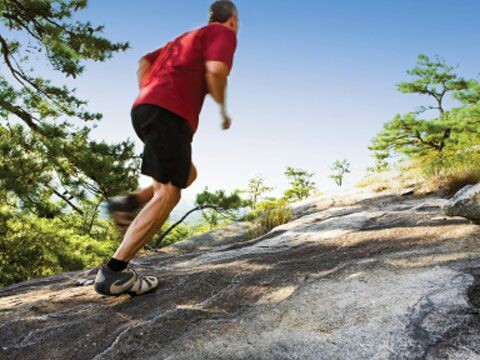
Take shorter strides
An important tip when approaching a hill is to maintain your cadence by taking shorter strides. Many elite runners will use this strategy to conserve energy and keep their pace. Shorter strides will reduce the strain on your muscles and make it easier to accelerate when you reach the top.
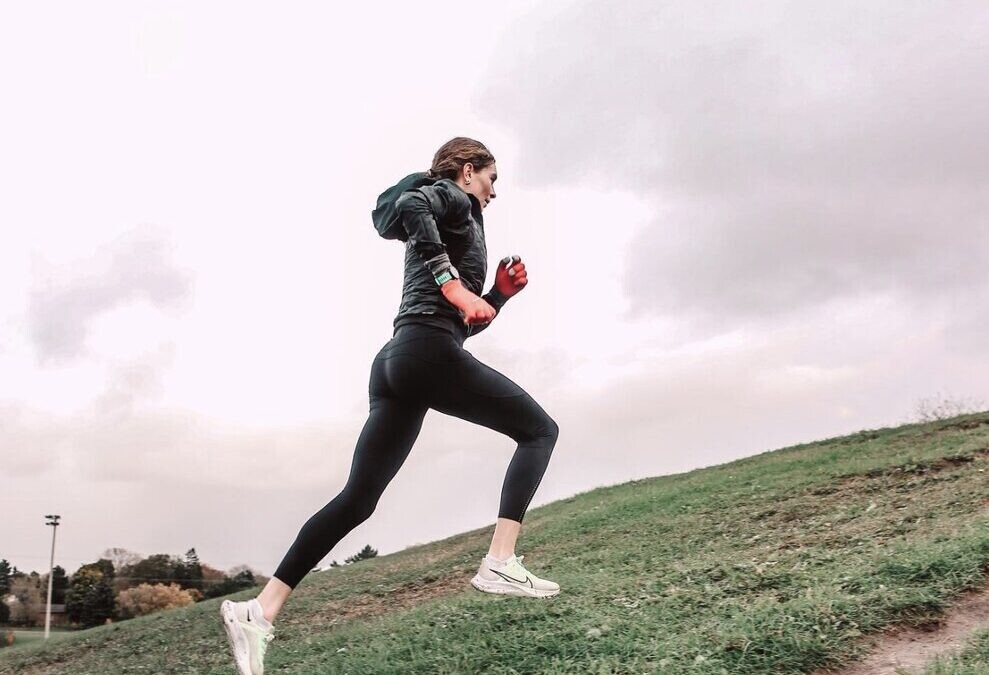
With uphills, bring downhills
This goes hand-in-hand with managing your effort, but with every uphill, usually, there is a downhill that follows it. If you push yourself up the hill, be sure to relax on the way down. Overstriding downhill can only lead to fatigue or potential injury. If you’re sprinting down, you’ll likely feel some strain in your legs later in the race.
Lean slightly forward, eyes up, and shoulders back
Having the proper form is important, and it pays the price to do them right. Align your centre of gravity with the hill, and let your short strides and knee drives do the work. Keep your shoulders back and your eyes up, pumping your arms in a forward motion for additional power.
(11/04/2022) ⚡AMPby Marley Dickinson
Here is everything you need to know ahead of Sunday's TCS New York City Marathon
The world’s top marathoners have assembled in NYC for the 51st running of the TCS New York City Marathon this Sunday, Nov 6. The 2022 race returns to full capacity of 50,000 runners with a stacked field of elites in the men’s, women’s and wheelchair events. Defending champion Albert Korir of Kenya returns to defend the men’s title across the five boroughs and 2022 world champion Gotytom Gebreslase of Ethiopia headlines the women’s field.
How to watch:
Unless you live on the west coast, the 2022 TCS New York City Marathon will be easy to stream and follow online. The professional women’s field will begin at 8:40 a.m. E.T. and the professional men’s field at 9:05 a.m. E.T. Viewers should note that Daylight Savings Time ends in the early hours of Sunday morning, so viewers need to remember to change their clocks back an hour.
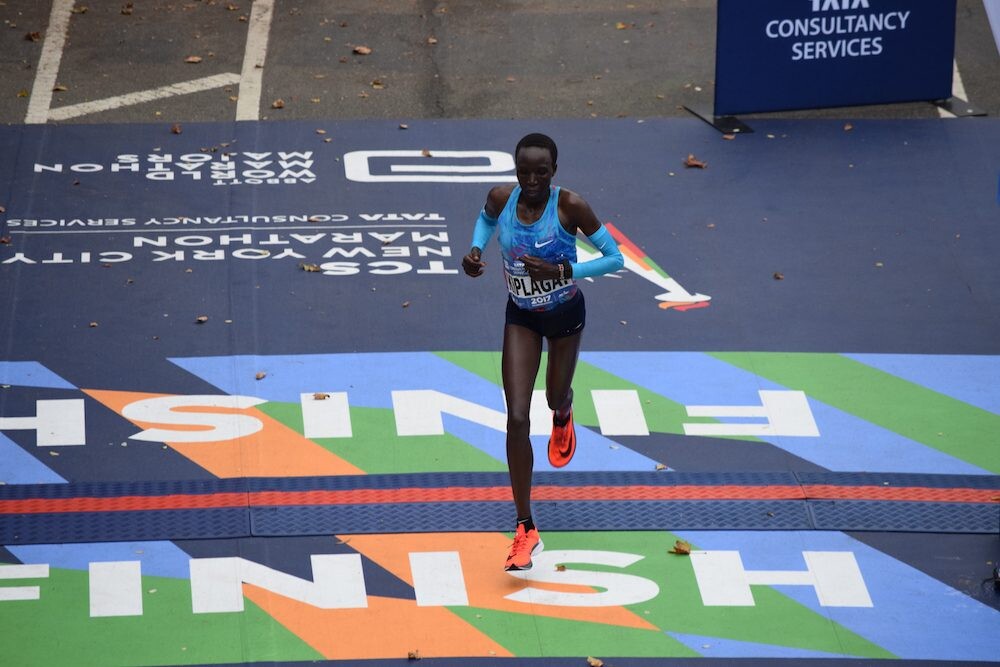
Follow @CanadianRunning on Twitter for live tweets and up-to-date news on the 2022 TCS NYC Marathon.
Women’s elite field
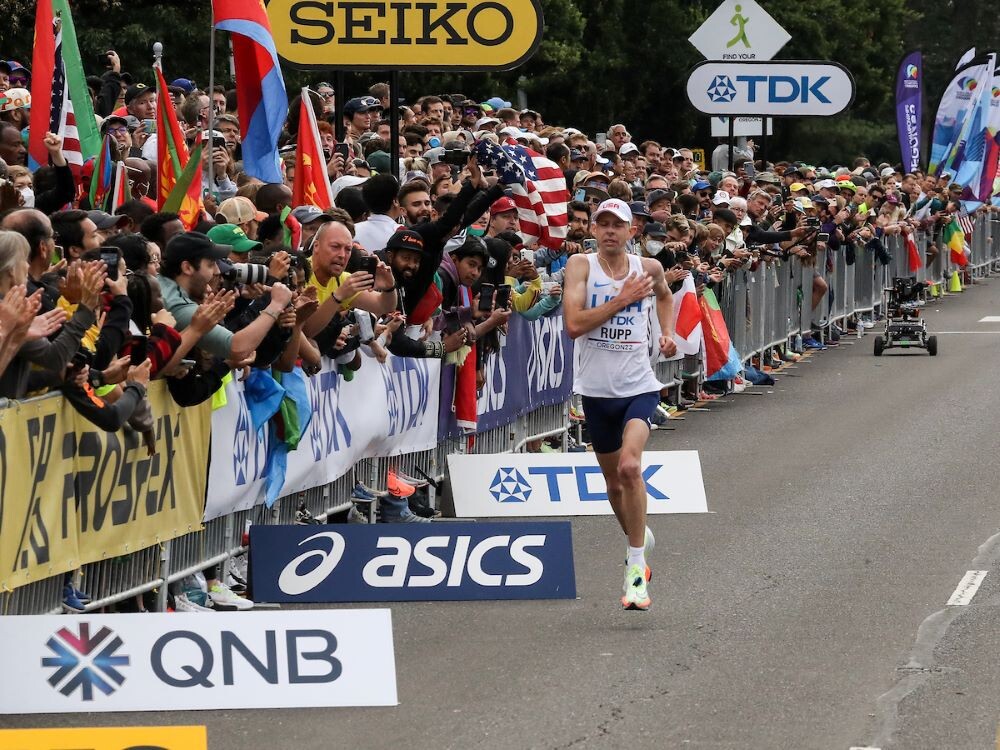
At only 27, Ethiopia’s Gebreslase has achieved much success in the marathon. In 2021, she won Berlin in her debut and followed it up with a podium finish at the 2022 Tokyo Marathon and world championship gold in Eugene this past July. Gebreslase put her talent on display in Eugene, showing that she can run at a fast pace and hold her own against the world’s best marathoners. She will be the likely favourite to win NYC Sunday.
Lonah Chemtai Salpeter is the fastest woman in the field, with a personal best of 2:17:45 from the 2020 Tokyo Marathon. Salpeter was close to an Olympic medal in Tokyo 2020 but hit a wall late and ended-up 66th. She finally got her hands on a bronze medal in Eugene this summer but was bested by Gebreslase in a late surge. Since worlds and European championships earlier this summer, Salpeter has taken some downtime to prepare for a bid at her second Abbott World Marathon Major title in NYC.
Kenya’s Edna Kiplagat will also be one to watch, with the 2011 and 2013 marathon world champion hoping to extend her record of four World Marathon Major wins to five (Boston 2021, 2017, New York 2010, and London 2014). Kiplagat was awarded the 2021 Boston Marathon title after her compatriot Diana Kipyokei was disqualified due to a positive doping test.
Many fans of the sport have long awaited the marathon debut of two-time 5,000m Olympic medallist and world champion Hellen Obiri of Kenya. She has gone through a lot of transition this year, switching training groups and moving from Kenya to Boulder, Colo., after worlds to train with On Athletics Club (OAC). It will be interesting to see how the speedy 14:18 5K runner can handle the hilly NYC course, but she could be a dark horse for the win.
Outside of the top big names, the U.S. will be well represented in NYC by former national record holder Keira D’Amato, who ran both the 2022 Berlin Marathon and World Championships only eight weeks apart, and Aliphine Tuliamuk, who won U.S. marathon Olympic Trials in 2020 and holds a personal best of 2:26:50.
Canadian Running prediction: Gotytom Gebreslase (ETH) – 2:21:42 *CR*
Men’s elite field
Kenya’s Korir has a tough job ahead of him on Sunday as he aims to defend his 2021 NYC Marathon title. In his two trips to the Big Apple, Korir has achieved a lot of success. In 2019, he finished runner-up to his compatriot Geoffrey Kamworor in 2:08:36, then followed it up with a win and 14-second course PB (2:08:22) in 2021 for his first world major win. One thing Korir has going for him is that he is consistent. In his last six of eight races, Korir has dipped under the 2:10-mark, which is a speedy time for New York’s hilly course.
Korir will face stiff competition from his Kenyan compatriot, 2022 Boston Marathon champion Evans Chebet, who will be hoping for a second major marathon win of the year. Chebet, 33, holds the fastest time in the field of 2:03-flat from the 2020 Valencia Marathon.
Ethiopia’s Shura Kitata will be another name to look out for, having finished second in 2018. Since his 2020 win at the London Marathon, Kitata has struggled to reach the podium in his last three races. His last race came in March, where he was sixth at the 2022 Tokyo Marathon in 2:06:12 for fifth. Can Kitata bounce back in NYC?
Abdi Nageeye of the Netherlands was second to Eliud Kipchoge in the marathon at the 2022 Olympics and set the Dutch national record of 2:04:56 at the Rotterdam Marathon in April. Nageeye has shown he has the experience to be there late, but it will be interesting to see how he handles the course in his debut.
The U.S. men’s field in New York is one of its best in years, with five sub-2:09 marathoners. The 2016 Olympic bronze medallist, Galen Rupp, will make his NYC debut and lead the way for the Americans with a personal best of 2:06:07. Leonard Korir (2:07:56), Scott Fauble (2:08:52), and Marty Hehir (2:08:59) are three others to keep your eye on. Fauble had a sensational run at the 2022 Boston Marathon, where he placed seventh in a personal best time of 2:08:52.
Canadian Running prediction: Evans Chebet (KEN) – 2:07:43
(11/04/2022) ⚡AMPby Running Magazine
TCS New York City Marathon
The first New York City Marathon, organized in 1970 by Fred Lebow and Vince Chiappetta, was held entirely in Central Park. Of 127 entrants, only 55 men finished; the sole female entrant dropped out due to illness. Winners were given inexpensive wristwatches and recycled baseball and bowling trophies. The entry fee was $1 and the total event budget...
more...2022 Shanghai Marathon to be held on Nov 27
The Shanghai Marathon will be held on Nov 27, said organizers in a post on their website on Thursday.
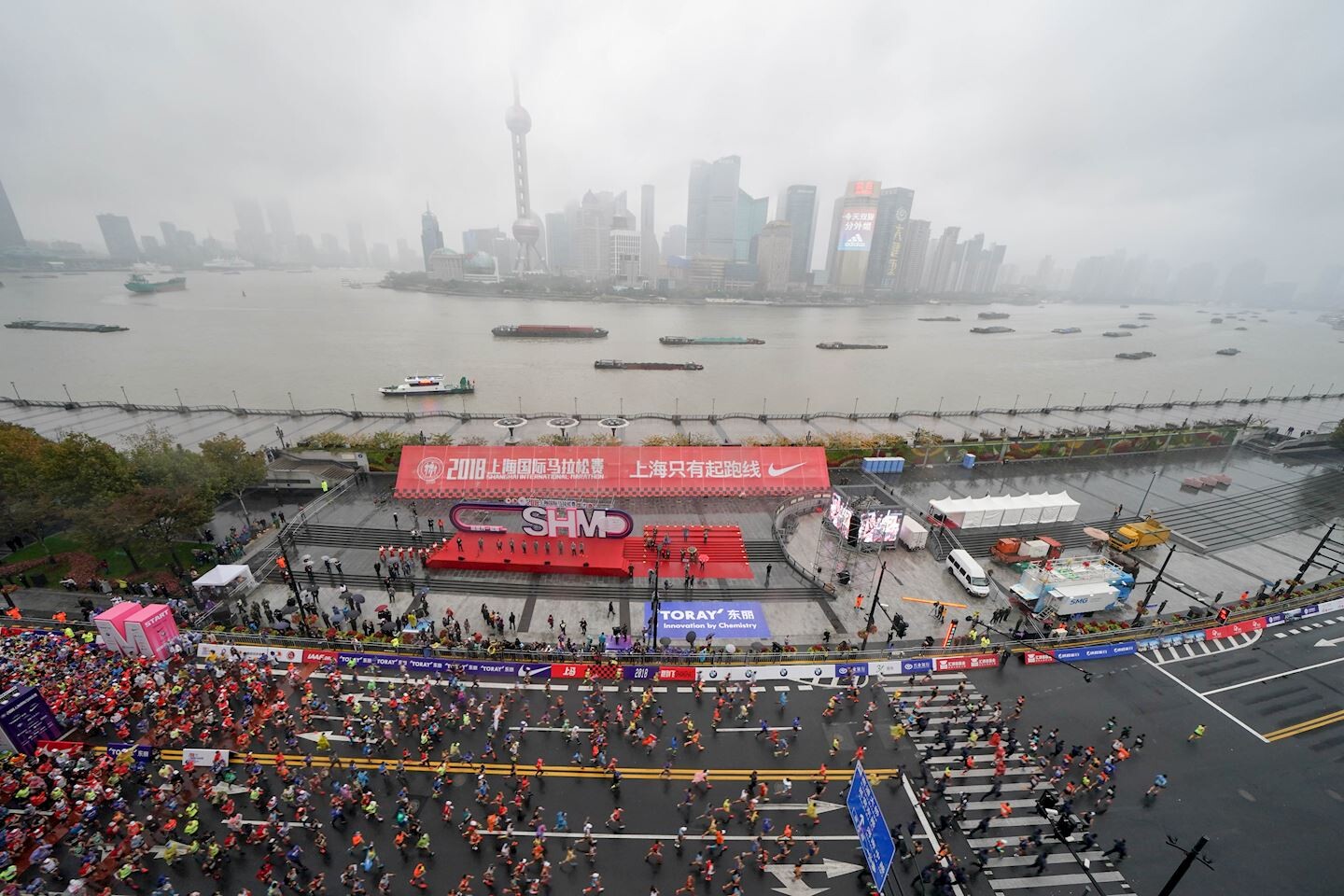
The organizers of the marathon, which will have 18,000 runners, require all participants to stay in Shanghai from a week before receiving the race pack, according to the notice.
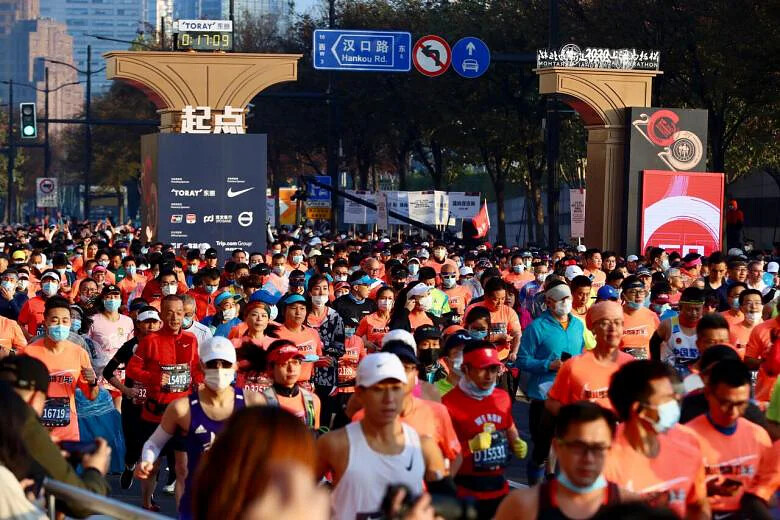
Shanghai postponed its 2021 marathon over COVID-19 concerns, and canceled the event in January 2022, according to the official site of Shanghai Marathon.
(11/04/2022) ⚡AMP
Shanghai International Marathon
Shanghai International Marathon has established itself as the marquee running event on China’s Marathon calendar. Every November, tens of thousand participants run passing the many historical places of this city such as Bund Bull, Customs House, Shanghai Museum, Shanghai Grand Theater, Shanghai Exhibition center, Jing’an Temple, Nan Pu Bridge, Lu Pu Bridge, Long Hua Temple, Shanghai Stadium. The course records...
more...Viola Lagat will be heading to the New York City Marathon for the second time hoping to improve on her second place finish in last year’s race
Viola Cheptoo Lagat, the younger sister of Kenyan-born US distance running legend Bernard Lagat had set base for the last three months in Iten, Elgeyo Marakwet County.
This Sunday’s race in the “Big Apple” will be her third over the marathon distance.
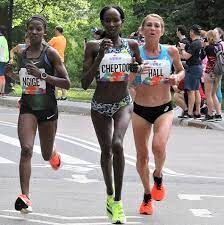
“Last year, it was a dream come true because I was debuting in the marathon and coming in second alongside such great athletes competing was just amazing. It gave me a reason to continue working hard,” said Lagat.
She did not change her training programme but wants to lower her personal best time.
Obiri makes debut
Other Kenyans lining up at Central Park on Sunday will be two-time world marathon champion Edna Kiplagat, Grace Kahura and Hellen Obiri. Obiri, a two-time world 5,000 metres champion and twice Olympic silver medallist over the distance, will be making her marathon debut.
“Competing with a great name like Edna Kiplagat is an inspiration. I’m still young in marathon because I need to know what time should I react and what time I should increase my pace compared to her who has done more races, she is sure of what she is doing,” Lagat added.
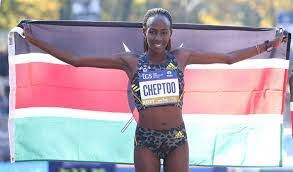
Lagat has good memories of last year’s race hailing Olympic champion Peres Jepchirchir for pushing her to the podium at Central Park.
“I started slow in the race, but the most amazing thing is that my body started reacting well and I surged forward steadily and, to my surprise, I managed to get to where Jepchirchir was. She asked me if the pace she was doing was fine with me and I told her I was comfortable. She really encouraged me,” explained Lagat.
Tips from Keitany
Lagat has also been taking notes from four-time New York Marathon champion Mary Keitany who has been giving her tips on how to overcome the tough New York course.
Lagat started her 2022 season with a sixth place in Boston Marathon in April, her preparations affected by a bout of Covid-19 which slowed her training.
“When I started my training in January, I had difficulty. I just trained for two months and that affected my performance in April,” she said.
Lagat has planned with her coach to attack the Abott Marathon Majors series which, besides New York, also features the London, Tokyo, Berlin and Chicago marathons.
“I would like to ask Kenyans and all our fans to always pray for us as we line up for the race. Personally, I’m doing this for Peres Jepchirchir who pulled out of the race due to injury. We are praying for her to heal as soon as possible,” said Lagat who is a former 1,500 meters specialist.
She ranks Obiri as the dark horse, arguing that anyone making a debut is capable of upsetting the applecart.
(11/03/2022) ⚡AMPby Bernard Rotich
TCS New York City Marathon
The first New York City Marathon, organized in 1970 by Fred Lebow and Vince Chiappetta, was held entirely in Central Park. Of 127 entrants, only 55 men finished; the sole female entrant dropped out due to illness. Winners were given inexpensive wristwatches and recycled baseball and bowling trophies. The entry fee was $1 and the total event budget...
more...Learn To Love Running With These eight Tips
I have been an athlete all of my life, and have enjoyed a healthy lifestyle, but I just wasn’t born with the running gene. In middle school, I dreaded the mile run and counted down every last lap. In high school, I started running to get in shape for tennis season. I hated every minute of it. It wasn’t until recently, as a full-grown adult, that I truly started to appreciate the activity. What changed? My attitude. I changed my outlook on running in a way that made me feel like a champion simply for lacing up my running shoes. Here are 8 tips that can help you learn to like (maybe even love) running too.
1.- Accept your “newbie” status.
Not being able to run a mile the first time you attempt it is perfectly normal. And, I promise no one is judging you for it. In fact, you should be proud of your effort. You’ve got to start somewhere, so accept your newbie status and plan to take walk breaks on your first few jogs. Give yourself time to build up your endurance and distances.
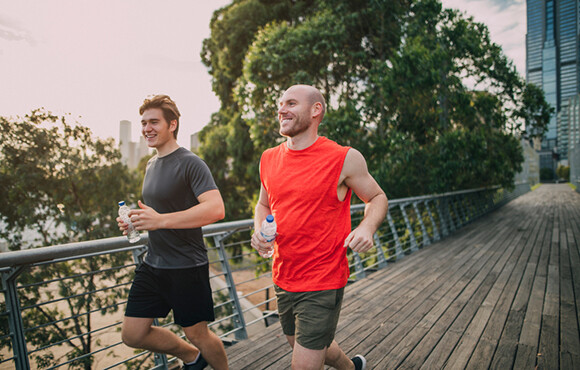
2.- Slow down!
Unless you’ve got a sponsorship deal with a major sports brand, or you are trying to qualify for a marathon, running fast isn’t really necessary. In fact, it might be preventing you from actually enjoying your run. Try running slower, at a pace that allows you to speak in full sentences, and see how your body reacts. Your breathing should feel more natural, your joints won’t start aching as quickly, and you might even find yourself smiling out there.
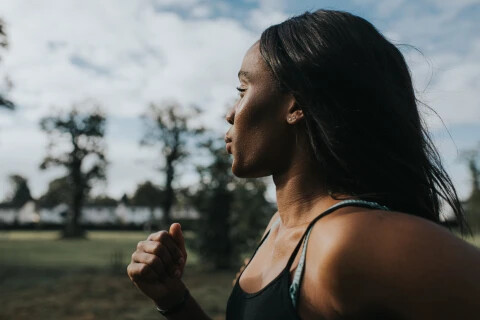
3.- Set small goals.
See that fire hydrant at the end of the sidewalk? Run to that, and then pick your next target. Creating small goals within your workout keeps it interesting, and reaching those achievements can help you to keep pushing yourself. Today the next mailbox, tomorrow the finish line of your first 10K!
4.- Enjoy some “me” time.
The kids aren’t around, your boss isn’t hovering over you—it’s just you, your running shoes, and the road. Thinking of your run as “me” time will help you see it as a special event, one you’ll start looking forward to.
5.- Find a running buddy.
If “alone time” doesn’t do it for you, find a friend to run with. You can encourage each other to get going, be there for each other on the hills, and gossip your way to the finish. And, having a plan to meet someone for a run can give you extra motivation to get out the door.
6.- Make the miles matter.
When the personal benefits of running (weight loss, improved cardiovascular health, reduced stress, etc.) aren’t enough to get you to pick up your feet, consider running for a cause. Sign up for a 5K (such as Run for Your Buns) that raises funds and awareness for a nonprofit organization, or download an app like Charity Miles, which lets you earn money for a charity of your choice with every step you take.
7.- Turn that music up!
Studies show that upbeat tunes can distract you from physical exertion and even get you to push a little harder. Songs between 120 and 140 beats per minute have the biggest impact. But, remember to be smart about your headphones—only use them in safe, low-traffic areas and keep the volume at a level that allows you to hear what’s going on around you (and protects your eardrums).
8.- Track your success.
Feel like you’re not getting anywhere? Try logging every run with an app like MapMyRun, RunKeeper, or Runtastic. You’ll be able to look back and see how far you’ve gone—and how much faster you’ve gotten along the way! Keep track of your routes and see if you can do the neighborhood loop faster next time, or increase your distance by tacking on an extra block or two.
At the end of the day, each of us is different and our motivators are, too. But, if you’d like to get out of your running funk, I encourage you to try a few of these tips and see what works for you. You might just find your running gene after all.
(11/03/2022) ⚡AMPby
Tobi Amusan, Alison Dos Santos headline World Athletics climate change initiative
World Athletics (WA) announced the inaugural group of ‘Champions for a Better World’ on Thursday. Nine athletes, including three runners and six field athletes representing the six continental areas will lend their voices toward advocating for sustainable practices in sport and encourage other athletes to take a more active role in addressing environmental concerns. The athletes have been recruited to support WA’s efforts to reduce the sport’s environmental impact in alignment with the World Athletics Sustainability Strategy.
The Champions for a Better World group is announced as world leaders gather at the COP27 UN Climate Change Conference, and alongside new data from a survey carried out at four different WA championship events in 2022, with 737 athletes across 122 countries giving responses.
More than 76 per cent of athletes are seriously concerned or very concerned about climate change, with over 66 per cent feeling impacted directly by its effects. Seven in ten athletes believe climate change has already impacted athletics directly, and 90 per cent said that WA has a role to play in addressing sustainability in the sport.
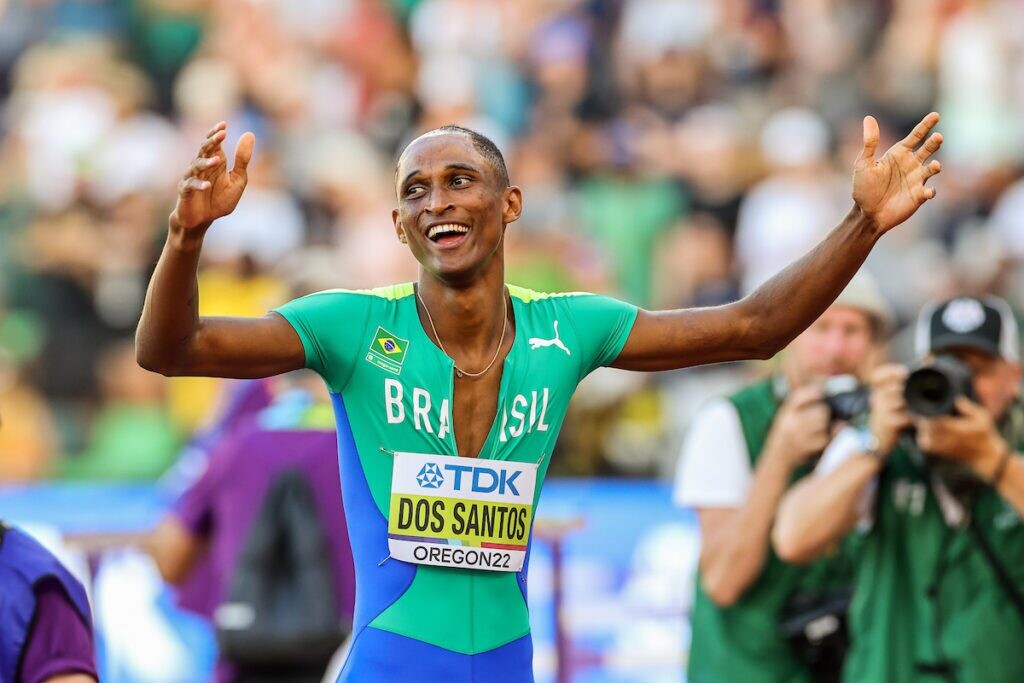
“It’s clear that an overwhelming majority of our athletes are very concerned about the impacts that climate change is having on their lives and on our sport,” said WA president Seb Coe. “It’s critical for us to act on those concerns, to put practical applications in place where we can, and to drive the sport forward with the advocacy and the high-profile voices that athletes can bring.”
Brazil’s 400m hurdle world champion Alison Dos Santos shared that he believes athletes have a platform to raise awareness: “As athletes, we have the important mission of raising awareness about the need to take care of the environment, both at social and economic level. Being able to influence others is very gratifying to me. I am very happy and enthusiastic about embracing this challenge.”

2022 Champions for a Better World
Track athletes
Tobi Amusan (NIG)100m hurdles world record holder, 2022 world champion
Ajla Del Ponte (SWI)sprints, 2021 European indoor 60m champion, 2022 Olympic 100m finalist
Alison Dos Santos (BRA)400m hurdles, 2022 world champion, 2021 Olympic bronze medalist
Field athletes
Kelsey-Lee Barber (AUS)javelin, 2019 and 2022 world champion
Sam Mattis (USA)discus, 2021 Olympic and 2022 World Championships finalist
Eliza McCartney (NZL)pole vault, 2016 Olympic bronze medallist
Ernest John Obiena (PHL)pole vault, 2022 world bronze medalist
Elena Vallortigara (ITA)high jump, 2022 world bronze medalist
Hugues Fabrice Zango (BFA)triple jump, world indoor record-holder, 2022 world silver medallist, 2021 Olympic bronze medalist
Video messages from each athlete will be shared on WA social media channels over the next two weeks.
(11/03/2022) ⚡AMPby Keeley Milne
USA-based Grace Kahura eyes ‘home’ win in New York
Sunday’s New York City Marathon will be a largely Kenyan affair.
Even after the withdrawal of the defending champion Peres Jepchirchir, the field remains open with another Kenyan almost certain to keep the title in the country.
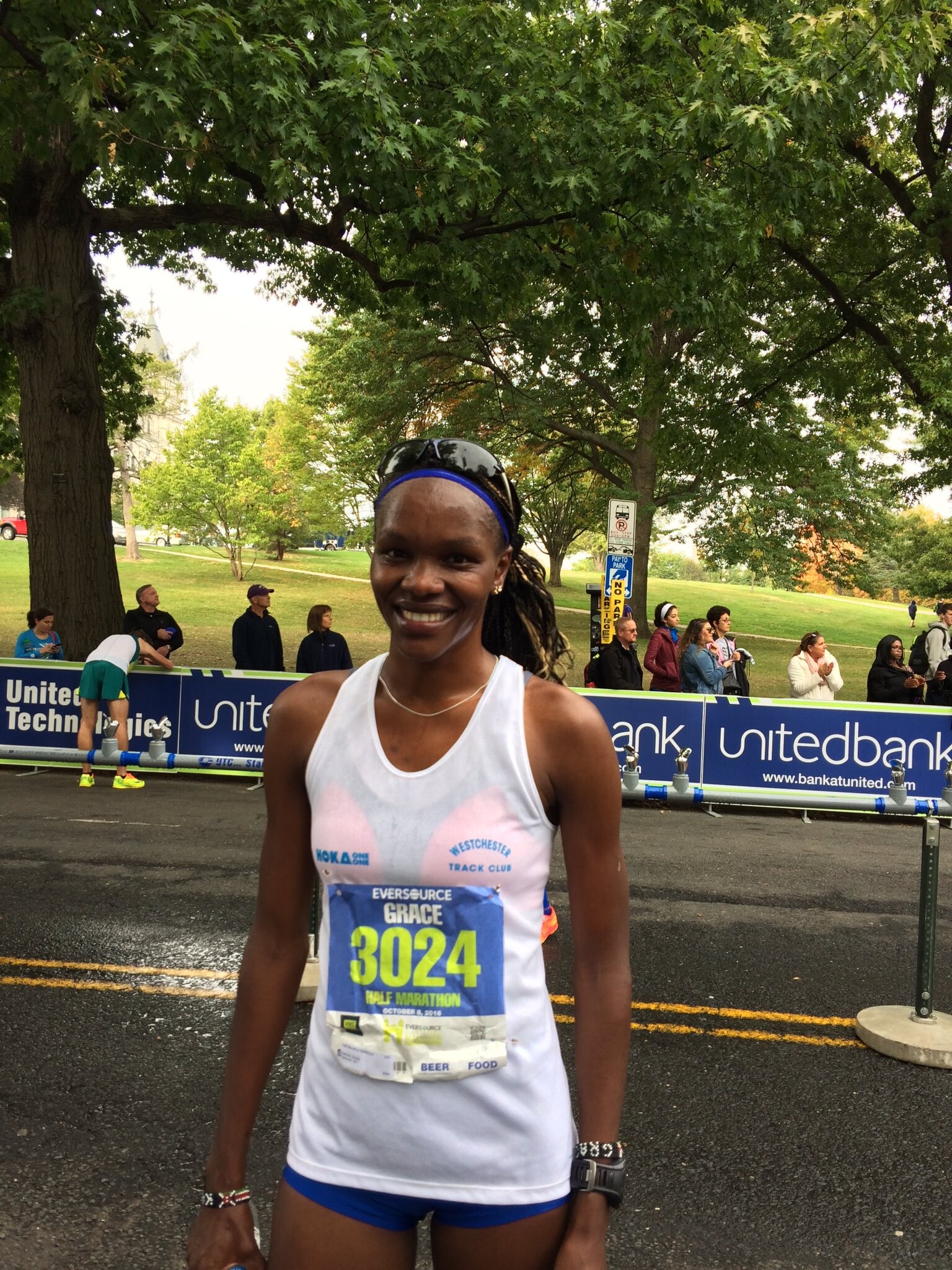
Two-time world marathon champion Edna Kiplagat leads her compatriots Viola Lagat, who was second last year, Grace Kahura, who finished ninth, and debutant Hellen Obiri.
Kahura will be competing in the “Big Apple” for the second time this year, seeking to improve on her personal best time of two hours, 30 minutes and 32 seconds.
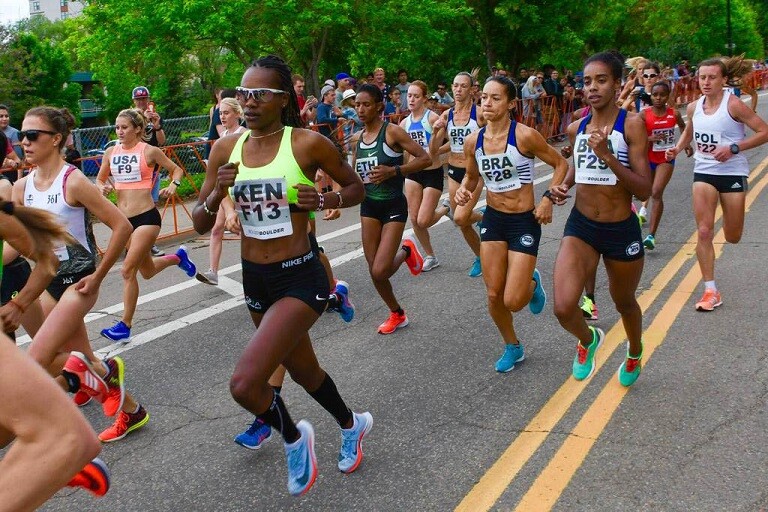
She might not be as well known as the other elite athletes, but she’ll enjoy the advantage of training in Colorado, USA, in perfect pre-race conditions.
Kahura told Nation Sport from her US base recently that she has been preparing for the race in the last four months without any hitches. “The marathon is tough, but I have prepared well and my target is to compete well during the race because I don’t want to mess my body for I know my fitness levels,” said Kahura.
She also said that competing in New York Marathon for the second time is an honour and that she is still in the learning process.
“The New York Marathon course is tough… I used to watch athletes compete in the race and it used to be so windy so I entered last year prepared and I’m glad it wasn’t that bad.
“When going for such race, you have to be prepared for anything because challenges might arise and you have to face them,” she said.
Competing with one of the greatest marathoners of all time, Edna Kiplagat, has also motivated her to even work harder.
“I watched Kiplagat competing while in primary school and competing with her in the same race now has really inspired me.
“My joy is interacting with her as she is full of wisdom and always has good advice on how to be world beater,” she added.
Kahura joined Colorado’s Boulder University in 2016 and graduated last year in Business and Accounting but wants to focus on being a professional athlete.
She was born in Kanjeru in Kiambu County on April 5, 1993, and went to Ngure Primary School and later Kanjeru Girls High School where she sat her exams in 2011.
It is here that her coach, John Mwithiga, popularly known as “warm-up”, took her to a camp where she started training as she waited for a chance to join university. At the University of Colorado, her focus was on education and she only started training seriously after she graduated.
While in school, she competed in Utica Boilmaker 15-kilometre road race where she finished 10th in 2016, before coming in seventh at the Indianapolis One America Festival Mini Marathon the same year.
From then on, she has competed in various races including Grandma’s Marathon in 2018 and 2021 where she finished fourth on both occasions.
She has been training on her own, but under the guidance of Owen Anderson, her American agent whom she says has been sending her training programmes to help her prepare for elite races.
(11/03/2022) ⚡AMPby Bernard Rotich
TCS New York City Marathon
The first New York City Marathon, organized in 1970 by Fred Lebow and Vince Chiappetta, was held entirely in Central Park. Of 127 entrants, only 55 men finished; the sole female entrant dropped out due to illness. Winners were given inexpensive wristwatches and recycled baseball and bowling trophies. The entry fee was $1 and the total event budget...
more...Chuma Kiprugut, Kenya’s first ever Olympic medalist, dies
World Athletics is deeply saddened to hear that Wilson Chuma Kiprugut, the first person from Kenya ever to win an Olympic medal, died on Tuesday (1) at the age of 84.
Born and raised in Kericho, Kiprugut took up running during his time at Kaptebeswet Primary School and later Sitowet Intermediate School. Starting out as a 400m runner, Kiprugut’s first major tournament was the 1958 East African Championships, where he was scouted by the Kenyan Army. He eventually rose to the rank of sergeant, but athletics remained his main focus and his journey in the sport continued with an appearance at the 1962 Commonwealth Games in Perth, exiting the heats of the 400m but later finishing fifth in the 4x400m.
Kiprugut soon started to gravitate towards the 800m. A victory at the 1964 East and Central African Championships was confirmation that the event switch was a good move. He was selected to represent Kenya in that event at the Olympic Games in Tokyo later that year. After equalling the Olympic record of 1:46.1 in the semifinals, he went on to take the bronze medal in the final in an African record of 1:45.9.
Not only was he the first African athlete to break 1:46 for the 800m, he became the first person from Kenya to win an Olympic medal in any sport.
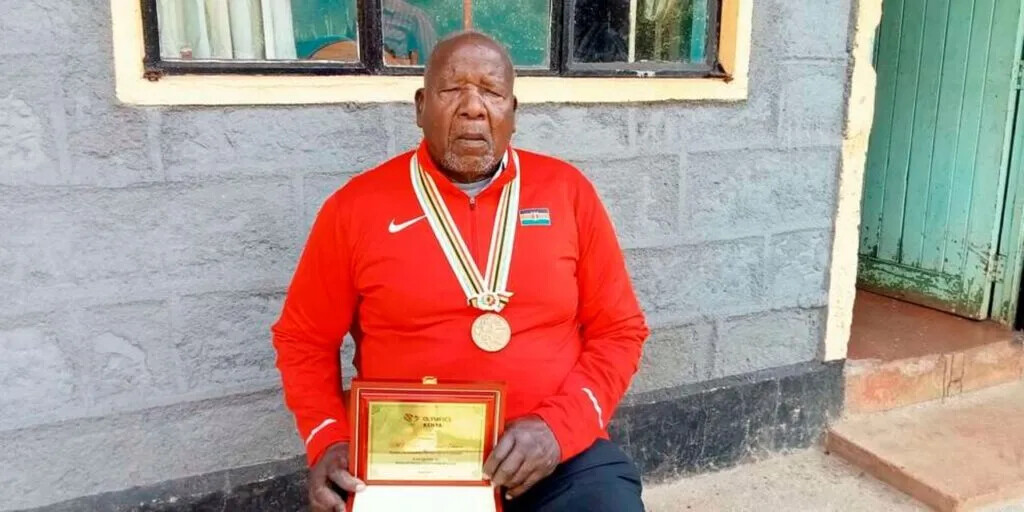
He won 400m and 800m gold at the 1965 All African Games and silver in the 880 yards at the 1966 Commonwealth Games. He improved his African 800m record to 1:45.2 in 1967, then successfully defended his title at the 1967 and 1968 East and Central African Championships, underlining his status as the best two-lap runner on the continent.
He went to the 1968 Olympic Games as one of the medal favorites, and safely made it through the rounds. He led for most of the final, passing through 200m in 24.8 and 400m in 51.0, but Australia’s Ralph Doubell kicked off the final bend and overtook Kiprugut, winning in 1:44.3 to equal the world record at the time.
Kiprugut took silver in 1:44.5, the third-fastest performance in history at that time and an African record that stood until 1974.
He retired from competition in 1969, but continued working as a coach and fitness instructor in the Kenyan army for another five years.
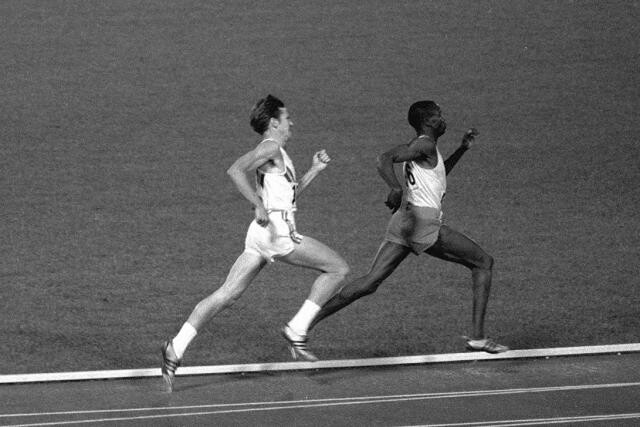
"Wilson was one of the founders of Kenyan middle-distance running dominance," said Doubell, the 1968 Olympic 800m champion. "As a competitor he was fast, strong and fearless - three characteristics which are still displayed by Kenyan athletes today."
(11/03/2022) ⚡AMPby World Athletics
Hockey player captain Meghan Duggan set for NYC Marathon
Meghan Duggan entered the year having never run more than two miles at a time.
“In hockey,” she said, “it was really a no-no to do any type of long endurance training.”
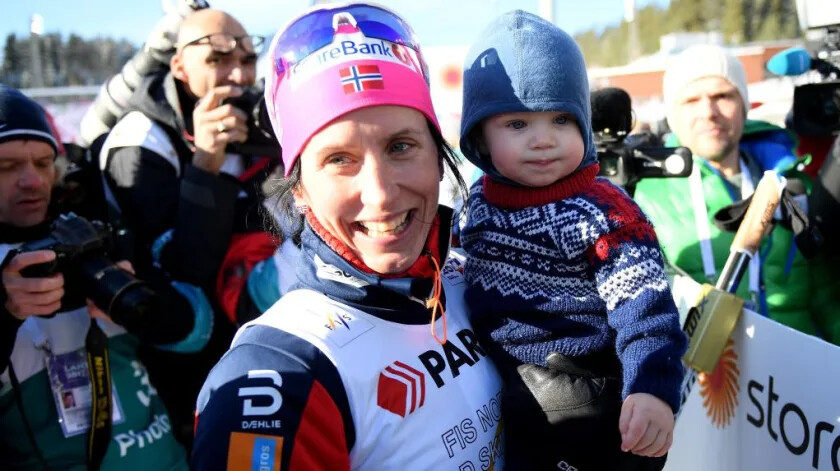
Now the three-time Olympic medalist is in her final preparations to race Sunday’s New York City Marathon.
“It’s opened up a whole new world to what my body can go through,” she said.
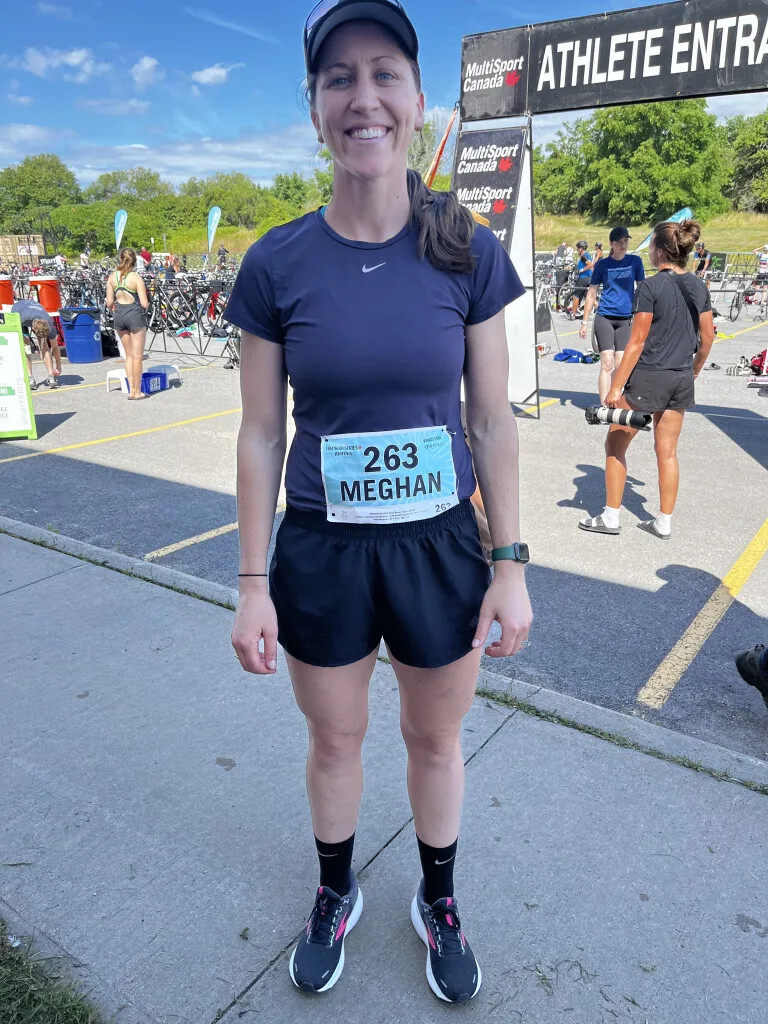
Duggan, who retired from hockey in 2020 after captaining the U.S. to the gold medal at the 2018 Winter Olympics, decided to make her 26.2-mile debut to raise awareness for the Women’s Sports Foundation, a nonprofit founded by Billie Jean King in 1974 to advance the lives of women and girls through sports.
In addition to serving as Women’s Sports Foundation president, Duggan is the New Jersey Devils director of player development and a mother of two.
Juggling so many responsibilities, the 35-year-old occasionally got out of bed at 4:30 a.m. to do long runs before her kids woke up. Or, she did them on the treadmill at night after her kids went to sleep.
“I’ve had to be flexible as we all do in life,” she said.
Duggan’s two children, George and Olivia, are her biggest cheerleaders.
During training runs, Duggan’s wife, Canadian Olympic hockey champion Gillian Apps, pulled the kids in a bike trailer as they clapped and screamed, “run mamma run!” Duggan often finds George running laps around the house yelling “marathon, marathon!”
“It’s important for me to show my kids you can do hard things,” Duggan said.
Duggan is planning to race alongside Haley Skarupa, a gold medal-winning teammate at the 2018 Winter Games. Erika Lawler, a 2010 Olympic silver medalist hockey player, also planned on running the race until she suffered an injury.
“Hockey players aren’t really meant to be runners,” Duggan said, “but I think that’s why Haley and I are so excited to do it.”
Duggan has not been shy in seeking advice. At the Women’s Sports Foundation’s Salute to Women in Sports ceremony last month, she cornered Jocelyn Rivas, the youngest person to run 100 marathons, and Alysia Montaño, a U.S. Olympic 800m runner who made worldwide headlines for racing while eight months pregnant at the 2014 USATF Outdoor Championships.
“It’s certainly made me really respect other sports and what goes into it,” Duggan said. “Not that I didn’t before, but I never had the opportunity to put myself in the shoes of another athlete in a different sport. This is kind of my first time, and it’s been eye-opening and enjoyable.”
Duggan’s goal is to complete the 26.2 miles in under four hours.
“I think it’s a realistic goal,” Duggan said. “That’s something that is not easy to do and will be incredibly challenging, but I think even just the accountability of saying it out loud makes it that much more exciting.”
This might not be the last marathon for Duggan, who grew up in Danvers, Mass.
“I’ve had a lot of friends run [the Boston Marathon],” she said. “I would love to do that, but I’m going to get through this one first, and then we’ll see.”
(11/02/2022) ⚡AMPby Seth Rubinroit
TCS New York City Marathon
The first New York City Marathon, organized in 1970 by Fred Lebow and Vince Chiappetta, was held entirely in Central Park. Of 127 entrants, only 55 men finished; the sole female entrant dropped out due to illness. Winners were given inexpensive wristwatches and recycled baseball and bowling trophies. The entry fee was $1 and the total event budget...
more...Cherotich, Chepkoech nominated for Women’s Rising Star Award
World Under-20, 3,000m SC champion Faith Cherotich and Commonwealth 3,000m SC champion Jackline Chepkoech have been nominated for this year’s Women’s Rising Star Award.
The award will recognize the best U20 athlete at the World Athletics Awards.
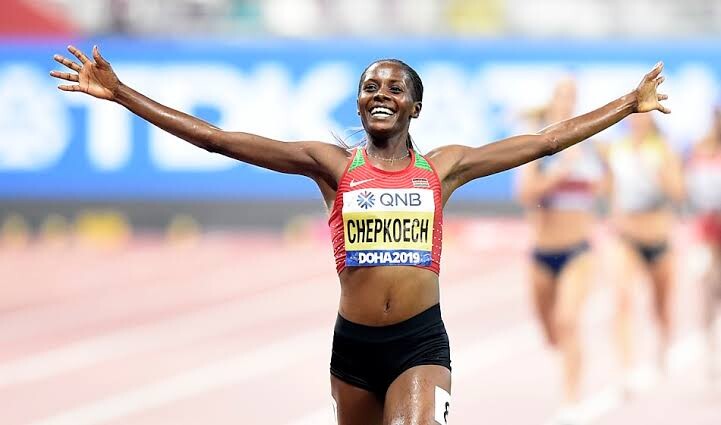
Cherotich, 18, won the World U20 Championships Trials in 9:18.25 and also placed third at the Diamond League final in Zurich in 9:06.14. Chepkoech, 19, won the Diamond League edition of Brussels in 9:02.43.
Other nominees include South Africa’s Mine De Klerk who is the World U20 shot put champion, Jamaica’s Kerrica Hill who is the World U20 100m hurdles champion and Serbia’s Adriana Vilagos who is the World U20 javelin champion.
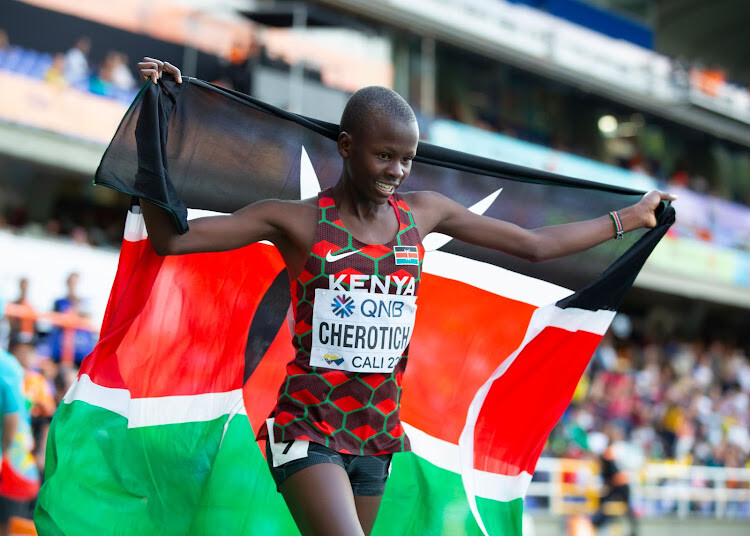
The nominations reflect the standout performances witnessed this year, at the World Under-20 Championships in Cali, the World Championships in Oregon and other events around the world.
The winner of the 2022 Women’s Rising Star Award will be selected by an international panel of experts and be announced on World Athletics’ social media platforms in early December.
The Men’s Rising Star Award nominees will be announced soon.
(11/01/2022) ⚡AMPby Abigael Wuafula
Runners: you’re probably not eating enough protein
If you’re a runner or live an active lifestyle, you’re probably underestimating how much protein you need. Registered dietician and author Pamela Nisevich Bede touts the importance of staying on top of your protein needs and intake in her book Fuel the Fire.
Olympian and half-marathon record holder Ryan Hall has said “I wish I would have eaten more protein. I bought into the whole ‘your body can only absorb twenty grams of protein in one sitting line and wasn’t recovering optimally.” After Hall began working with a nutritionist, he discovered he was deficient in protein, and adjusted his intake: a few months later, Hall ran his best marathon ever.
“Your best bet is to consume a variety of proteins from animal and plant sources throughout the day,” Bede says. She offers some suggestions on how to dial up your protein intake and improve your performance and recovery.

Protein
Proteins are formed on building blocks called amino acids, and they are essential in keeping your immune system functioning, bones and tendons strong, healthy skin, hair and nails, and more. Exercise demands support from protein, and some research suggests athletes may require at least twice the recommended daily amount. If you are not consuming enough overall calories, protein is particularly critical, because your body will use some protein for energy–reducing the amount of protein available for other tasks.

Amino acids found in protein are often called the ‘building block’ of muscles and are key for both muscle growth and for rebuilding muscles after exercise-induced breakdown. Protein can be taken in from both animal and vegetable sources; if you’re considering changing your diet to plant-based, be aware that you’ll need protein from a range of sources (eat a varied diet).
Make sure every meal includes a protein source
Double-check what you have on your plate every time you sit down to eat (or grab a snack on the go). Depending on your running mileage and general activity level, you may need more, but Bede says that in general for athletes a snack should have at least 15 grams of protein, and a meal should include at least 30 grams.
The recommended amount of protein in both Canada and the U.S. is 0.8/kg/day, which, Bede says, is “possibly enough to support health and the activities of daily living, but is definitely inadequate to support performance.” If you’re headed for a second helping of food, opt for a protein-rich choice instead of a starch–a scoop of lentils or a small chicken breast are both lean protein options.
Plan it out, and switch it up
Plan out your meals in advance if possible to make sure you’re taking in enough protein throughout the day. If you’re vegan or simply prefer plant protein, you need to make sure you have a variety throughout the day. Bede suggests vegans consider supplementing with branched-chain amino acids (BCAAs) to ensure an adequate intake.
While plant-based protein consumption needs to be done with awareness, Bede adds that “longevity studies suggest diets including higher intakes of plant-based vs. animal-based protein and fat often leads to better health outcomes.”
Protein powders for the win
If you’re having a hard time eating enough protein, Bede says that protein powders are an appropriate option to bring into your diet, and can be added to smoothies and yogurt–options are endless. Choosing a protein powder carefully is important: avoid any brand that has ‘proprietary blends’ and supplements added, and watch for extra sugars and fat. The ideal protein powder should have 20–30 grams of protein per serving.
Protein needs vary across a spectrum, Bede says, and your personal requirements (including the amount you exercise) plus the overall quality of the protein of your diet should be considered: consulting with a registered dietician to assess your personal protein needs can be a great way to jump-start proper protein fuelling.
(11/01/2022) ⚡AMPby Running Magazine
Your Complete Guide to Running Vocabulary
Starting a running journey can be daunting. As with most things, there are a ton of new experiences and skills to learn, test out, and adjust to. Add in tricky running vocabulary on top of that and how do you even begin?
If you think a 5K means five miles and cadence means…well, what the heck does cadence actually mean?…you’re in good company. There are dozens of words and phrases tossed around the running community that leave us completely confused sometimes. It can be disheartening, especially for beginners.
So, to help you keep up with the best of them…in lingo, at least…we created this guide full of common terms you’ll hear along your running journey. From endurance to hypoxic, consider this your complete manual in running vocabulary.

The Basics
Form: The way you position and hold your body while running. This is essential to avoiding injuries and getting faster. Try keeping your gaze forward, shoulders relaxed, elbows at a 90-degree angle, and torso upright. Many coaches call the latter “running tall.”
Pace: This refers to the amount of time it takes to cover a mile (or kilometer). You’ll also likely hear this term linked with specific types of runs (“5K pace”, “marathon pace”, etc.).

Cadence: The number of steps a runner takes per minute while running. Several things can influence this, such as height, weight, stride, and experience. Frequent runners typically take around 160-170 steps a minute, while elite runners take it up to 180.
Stride: The steps you take forward mid-run. Alternatively, some runners will refer to strides as a series of short sprints.
Foot Strike: How your foot hits the ground. Aim to strike the ground with the middle of your foot, using light steps that fall directly under your hips. More comfort, less injuries.
Prep
Warm-Up: This is literally warming up the body pre-run. Warm-ups help prevent injuries and runners should begin each workout with a good warm-up (try “Pre-Run Vibes”). Popular methods include 10 to 15 minutes of walking, jogging, and stretching.
Cool-Down: Just like warm-ups prep your body for a run, cool-downs aid in taking it back to its original state. Doing a post-run routine prompts a gradual recovery to your pre-run blood pressure and heart rate.
Static Stretching: This popular style of stretching involves holding major muscle groups in their most lengthened position. Hold each for 10 to 30 seconds before switching. The most common form of stretching, it can improve flexibility and act as the perfect cool-down.
Dynamic Stretching: These stretching routines add more movement and power to your typical warm-up while increasing range of motion. Think lunges, butt-kickers, and leg lifts.
Types of Training
Cross-Training: Runners will usually include other types of workouts in their routines to improve overall fitness (and prevent boredom). This is called cross-training. Try yoga, strength training, and cycling.
Strength Training: This literally means training for strength and usually involves dumbbells or body weight exercises. Strength training is insanely helpful for a runner. When done a couple times a week it can help prevent injury and improve performance, without adding bulk. More muscle = more force.
Rest Days: Otherwise known as days off, these days are key to a healthy and consistent workout schedule. Use rest days for active recovery, corrective exercises, stretching, walking, and leisure activities to keep your muscles active and moving.
Overtraining: What happens when you skip out on rest days. There is such a thing as running too much. Better to sit one out and avoid potential injuries and painful muscle strain.
Types of Runners
Streaker: Don’t worry, these runners do wear clothing. A streaker will run consistently every day for a certain amount of time. This type of running is usually only maintained for a certain length of time, such as a week. Think of them as running challenges.
Barefoot Runners: Is it still a run if you’re not lacing up beforehand? Said to improve form, the choice to ditch your sneaks and go barefoot is inspired by our ancestors. The theory is it will help avoid injury and improve performance.
Elite: These runners don’t just talk the talk, they run the run. No matter the distance, they’ll run it—and fast.
Triathlete: Not only do these runners run, they also swim and bike. All in one race.
Ultramarathoner: These extremely skilled runners take on races clocking in at 50 miles, 100 miles, 50K, or even 100K. The most popular ultramarathon ix the 56-mile Comrades Marathon.
Race Lengths
400 Meters: One lap around a track.
5K: 3.1 miles.
10K: 6.2 miles.
Half-Marathon: 13.1 miles.
Marathon: 26.2 (badass) miles.
Types of Runs
Trail Runs: A run done on a trail, rather than a treadmill or track. Particularly enjoyable in fall, these runs boast great weather and even greater scenery. Just remember to layer up if it’s cold where you are.
Road Race: Just as it sounds, these races are held in the road. Don’t worry about too much traffic. The courses are clearly marked on blocked off roads.
Easy Run: If you can’t hold a conversation while doing one of these, you’re going too fast.
Recovery Run: These are shorter and slower runs completed within the 24 hours after a big race. This is meant to get your body used to running in a fatigued state—something you’ll be thankful for towards the end of your next marathon.
Speedwork: Runs all about improving speed. Think hill sprints, intervals, and tempo runs.
Intervals: Alternating between high and low intensity (speeds) throughout a run.
Hill Sprints: Also known as hill repeats, these drills will have you going at a 5K pace up a hill and a recovery pace down a hill. Then up and down again…and again. These workouts improve strength and speed.
Pick-Ups: Segments of increased speed in an existing run. Same course, same deal, just an increase in speed every once in awhile.
Hitting the Wall: Not a type of run per se, but a term for what happens when a runner feels as if they can’t go on during a race. Usually indicates he or she didn’t see it coming.
Kick: The last push a runner gives at the end of a race, increasing their speed to the finish line.
Splits: When a race’s time is divided into smaller parts (typically miles). If a runner runs an entire race at the same pace, they should have an even split. If they have a negative split, they ran the second half faster than the first.
Acronyms
BPM: Beats per minute, or heart rate. This is the number of times your heart beats within a minute. Runners will often have a target BMP for a workout. Quick tip: To find your heart rate, place your pointer and middle finger along your pulse (neck or wrist). Count the amount of beats in six seconds, then multiply by ten.
BQ: Boston Qualifier. If someone is a BQ they’ve achieved a race time that grants them entry to the Boston Marathon, the world’s oldest marathon. Currently, the qualifying standards for men are between 3:05:00 and 4:55:00. For women, the times range from 3:35:00 to 5:25:00 (both depending on age).
CR: Course record, or a runner’s fastest time on a given course.
DNS/DNF: Did not start/did not finish. Either will appear in race results when a runner did not start or finish the race.
DOMS: Delayed Onset Muscle Soreness. Also known as the reason you can’t make your way up the stairs the morning after an intense run. This can set in 24-72 hours post-run and is totally normal—just have your Epsom salts and foam rollers ready.
ITBS: Iliotibial Band Syndrome. This painful injury occurs when your connective tissue rubs against your thighbone. Need relief? Try stretching, massaging, foam rolling, and gentle strength training.
LSD: No, not that one. In this case, the acronym stands for long slow distance. Exactly like it sounds, it’s a long run at a steady pace.
MUT: Mountain/ultra/trail runner.
PB: Personal best (or, in some cases, peanut butter).
PR: Personal record, or one’s fastest time for a given distance.
Equipment
Dreadmill: A nickname for the treadmill, typically used by those forced to run inside due to weather or lack of time. But, there are actually a ton of perks to running on the belt, like less force on your joints and great speedwork training.
Minimalist Shoes: Generally very lightweight, these shoes have very little structure or support. Rather, they’re flexible and have far less cushion than your average sneaker.
Maximalist Shoes: Opposingly, these shoes have much more support and cushion. That doesn’t necessarily mean they’re chunky, though.
Compression Sox: Used post-run, these tight knee-high socks help speed up recovery. Some runners also wear them during races in attempt to get oxygen to their leg muscles faster.
Running Tights: Live in a cold climate? Stock up on these. Runners who experience a dip in temperature and still want to run outdoors will wear these spandex leggings under their pants to keep them warm.
Moisture-Wicking Clothing: Non-cotton clothing that helps keep sweet away from the body and bring it to the fabric’s surface where it evaporates.
Foam Roller: A foam cylinder tool used pre- or post-workout to increase flexibility, speed up recovery, and increase circulation.
Fuelbelt: Sort of like a fanny pack, a fuelbelt can hold a runner’s water, snacks, phone, and wallet.
Physio
Endurance: The body’s ability to endure stress during an aerobic activity, like running. Endurance training takes place when a runner wants to increase their distance and speed.
Anaerobic Threshold: Also known as the lactate inflection point, this is the point in intensity where lactic acid begins to build up in your muscles and bloodstream. When you run at this speed it should be challenging, but not uncomfortable.
VO2 Max: Also known as aerobic capacity, this is the maximum amount of oxygen your body can use during intense exercise. As your aerobic capacity increases you will be able to run faster and further.
Hypoxic: This is when you just want to hit the ground running, but can’t breathe after two minutes of sprinting. Hypoxic is a condition in which you’re deprived of oxygen at the tissue level. In short, your lungs haven’t caught up with the rest of you yet. Scale it back a bit and build up your speed.
Chafing: To put it simply, chafing happens when sweat and fabric rub against the skin, causing painful rashes. Most runners suggest covering yourself in Vaseline or Bodyglide before getting dressed to avoid this.
Shin Splints: Pain on or around your shinbones. Treat with ice and rest ASAP, then consider buying some new running shoes.
Runner’s Knee: This is pain isolated on or around the kneecap. Also called Patellofemoral Pain Syndrome (PFPS), this usually feels like the knee is “giving out.”
Runner’s High: The feeling of euphoria a runner might get during or after a run. Added bonus: There’s usually also a decrease in discomfort, too!
(11/01/2022) ⚡AMP
by McCall Minnor
2023 World Relays track meet postponed
The next edition of the World Relays, a relays-only international track meet, have been postponed due to the coronavirus pandemic.
The 2023 World Relays, scheduled for May 13-14 in Guangzhou, China, have been pushed to April and/or May 2025 “due to the ongoing pandemic conditions,” according to World Athletics, citing the local organizing committee and the Chinese track and field federation.
World Relays, which debuted in 2014, have been held in odd years since 2015. The last edition was in Poland in May 2021.
However, a World Relays will be held in 2024 as an Olympic qualifier for the 2024 Paris Games. The host of that meet will be awarded on Nov. 30, according to World Athletics.
(10/31/2022) ⚡AMPCapt. Kyle King wins one for the home team at the Marine Corps Marathon
Capt. Kyle King had been hoping to compete in the Marine Corps Marathon for years. With runners back on the course Sunday morning for the first time since 2019, the Marine stationed in Twentynine Palms, Calif., achieved his goal and then some, winning the event’s 47th edition in 2 hours 19 minutes 19 seconds.
“That was a little emotional coming to the finish line,” he said. “I’ve wanted to run this race for so long.”
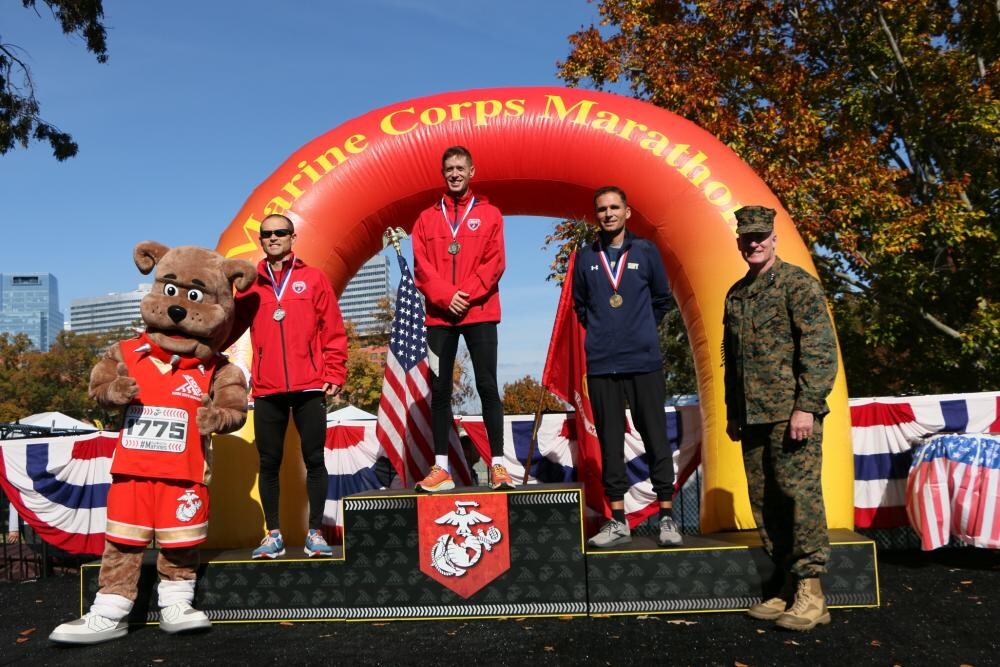
King, a 33-year-old artillery officer, finished 3 minutes 27 seconds faster than runner-up Jonathan Mott of Lakeland, Fla. England’s Chelsea Baker was the first woman to finish the race, completing the course in 2:42:38. Cara Sherman of Clifton Park, N.Y., was second, 4:30 behind.
King, who grew up in Washington state, has run competitively since high school, including a stint at Eastern Washington University. After taking a hiatus when he joined the Marines, he gravitated back toward the sport when he was stationed in Denver in 2018. In 2019, he won the Eugene (Ore.) Marathon, allowing him to qualify for the 2020 Olympic trials, at which he finished 47th in 2:18:20.
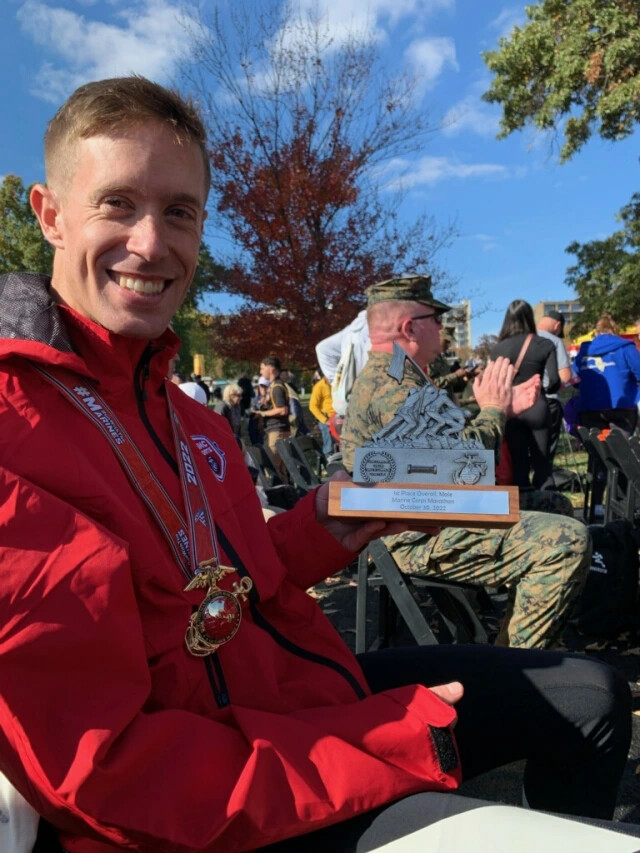
King prepared intensely for each of those opportunities, but his top goal was always the Marine Corps Marathon.
“I’ve been wanting to do this marathon for a while — just the work schedule and racing schedule [made it difficult],” he said. “This is the first time it actually happened.”
Chilly temperatures accompanied the start of the race through Arlington and D.C., but conditions improved as the morning unfolded. King found the weather beneficial to an extent.
“It was super cold. Honestly, I prefer cold over hot,” he said. “I wouldn’t say it really affected me. I honestly thought it was about perfect conditions. Pretty much no wind, nice and chilly, didn’t have to worry about getting too dehydrated.”
The power of the crowd was prominent Sunday, along the course and at the finish line. With friends, family and service members lining the way, runners called the energy infectious. King said the cheers of his fellow Marines provided an extra boost during difficult stretches.
“It’s really special doing it with all the Marines out there,” he said. “It was awesome to run in front of them and bring in the win for the home team.”
The previous two marathons were conducted remotely amid the pandemic, with participants running independently and submitting their times online. The virtual marathon setup failed to capture the camaraderie of the event, competitors said.
Gen. David H. Berger, the 38th commandant of the Marine Corps, was glad to be back in person, too. In 2019, he became the first commandant to run this marathon, finishing in 5:29:38. Running the race in person again this year, he emphasized his desire to compete alongside the community.
“This is not about the Marine Corps. It’s about the people. And although we organize it [and] it has our name, it’s really about the people,” said Berger, who finished in 5:46:36. “The emphasis should be [on] the people — the active duty, the reserved people, the civilians. This is definitely the people’s marathon.”
“Every individual who’s running has their own story, and every story has that mission that got them there to the start line,” Nealis said. “When they come across the finish [line] … they earned the right to be part of the few, the proud, the Marine Corps Marathon finishers.”
(10/31/2022) ⚡AMPby Michael Charles
Marine Corps Marathon
Recognized for impeccable organization on a scenic course managed by the US Marines in Arlington, VA and the nation's capital, the Marine Corps Marathon is one of the largest marathons in the US and the world. Known as 'the best marathon for beginners,' the MCM is largest marathon in the world that doesn't offer prize money, earning its nickname, “The...
more...Morocco's Taoufik Allam and Ethiopia's Nigist Muluneh secure wins at Dublin Marathon
Morocco's Taoufik Allam and Ethiopian Nigist Muluneh clinched victory at the Dublin Marathon.
Allam, 33, clocked two hours 11 minutes 30 seconds which left him two minutes 29 seconds ahead of Ethiopian runner-up Ashenafi Boja.
Muluneh, 25, won in 2:28.32 which was one minute four seconds clear of Ethiopia's Hawi Alemu Negeri.
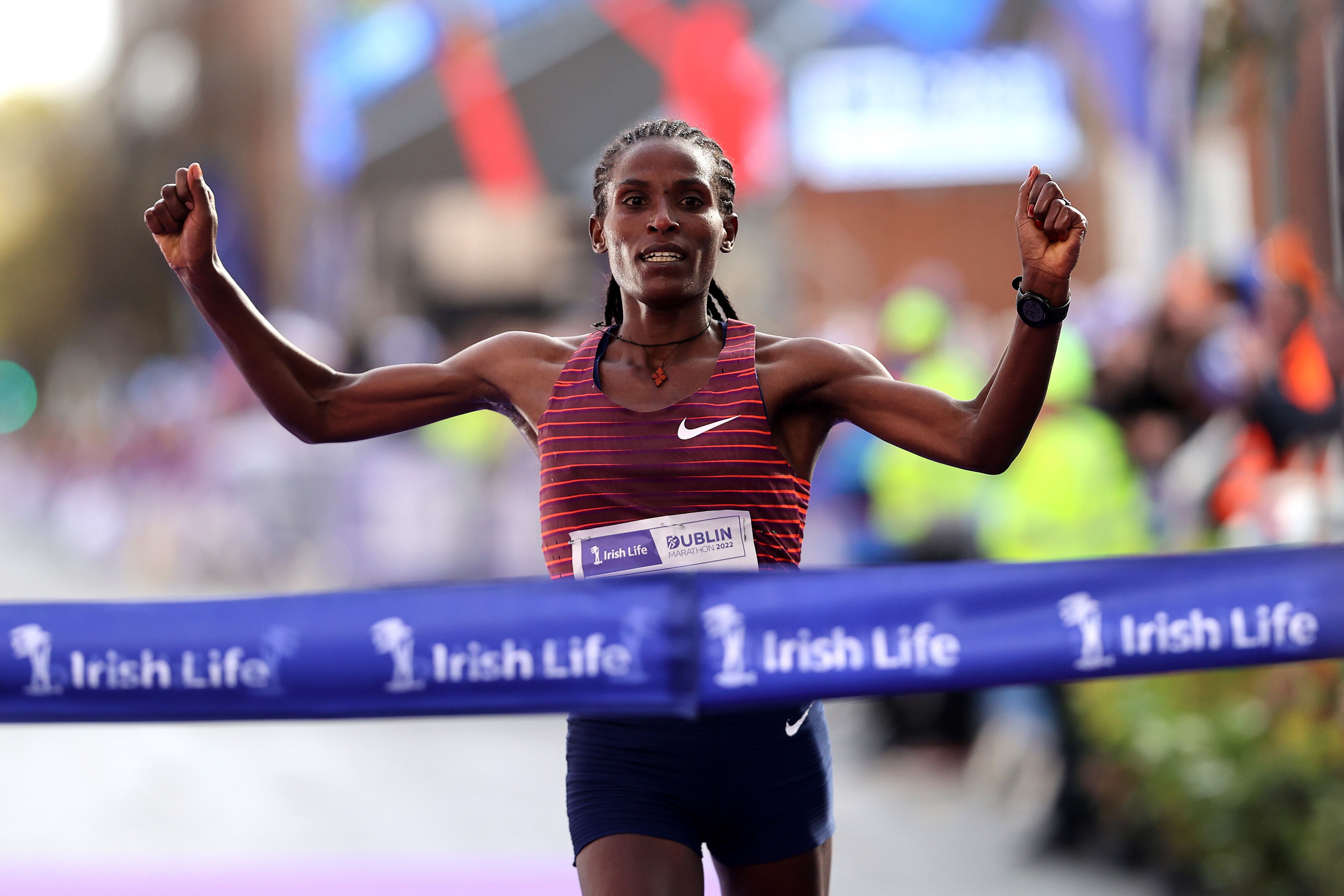
The concurrently run Irish national titles went to Celbridge's Martin Hoare and Clonmel athlete Courtney McGuire.
Sunday's race, which featured more than 25,000 runners, was the first staging of the Dublin Marathon since 2019 with the Covid-19 global pandemic forcing the cancellation of the event in 2020 and 2021.
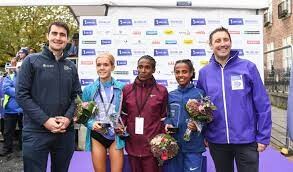
Marathon debutant McGuire, 23, was the third women's finisher behind the two Africans as she held off Strabane-based Ann-Marie McGlynn for the Irish title by clocking 2:32.52, which left her 55 seconds ahead of the Offaly-born athlete, with Belfast athlete Gladys Ganiel third in the national championship as she crossed the line in 2:42.17.
Ukraine's 2015 and 2017 Dublin women's winner Nataliya Lehonkova, who led after reaching six miles in 33:09, had to settle for fifth overall in 2:35.30.
Hoare, 35 clinched the Irish men's title with a personal best time of 2:20.22 which left him seventh overall, with Conor Gallagher from the St Malachy's club in Belfast, the second Irishman across the line as he placed eighth overall in 2:22.57.
2013 overall men's winner Sean Hehir completed the podium positions in the national event as he was ninth in 2:24.19.
Patrick Monahan continued his domination of the wheelchair race in Dublin as he took a sixth victory in his fastest ever time in the Irish capital with a 1:37.31 clocking.
Monahan's first Dublin win in 2014 began a run of four successive triumphs and the Kildare man, who will compete at next weekend's New York Marathon, also took victory during the last staging of the event in 2019.
Moroccan Allam, 33, reached halfway in the men's race in 1:07:03 alongside runner-up Boja and another Ethiopian Birhanu Teshome, who eventually placed third in 2:14.26.
The trio remained together at 30km but Allam then made a decisive move which gave him a lead of one minute 43 seconds over Boja by the the 40km mark.
Allam continued to increase his advantage over the closing mile as his second half was almost three minutes faster than his opening 21kms.
(10/31/2022) ⚡AMPby BBC Sport
KBC Dublin Marathon
The KBC Dublin Marathon, which is run through the historic Georgian streets of Dublin, Ireland's largest and capital city.The course is largely flat and is a single lap, starting and finishing close to the City Centre. Conditions formarathon running are ideal....
more...Two hill workouts to ramp up resilience and speed
If your regular running routine is feeling stale, consider adding some hills to your training. Hills are a challenge for most of us–they can be both mentally and physically hard, and if you’re used to running by pace rather than effort it can be tricky to switch gears. The benefits from adding some vert to your regular routine are immense, though–even if you race on mostly flat roads.
Hills boost speed, recruit muscles you don’t regularly engage on the flats and build mental toughness.
Coach David Roche, author of The Happy Runner, writes: “Over time, I have placed a much greater emphasis on hill workouts for all athletes, from beginners to pros.” Roche says that people who master hills become tougher and more resilient. “Some of that is the psychological element. I am not sure if hill beasts become life beasts, or life beasts become hill beasts, all I know is that people that conquer hills are all-around beasts,” he adds. If you want to become a running beast, here are two hill workouts to pop into your weekly training in place of another hard session (like speedwork).
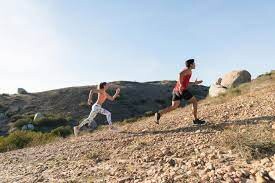
Bread-and-butter hill repeats
Roche says this is the workout he gives all of his athletes at some point in their training. “A perfect balance of difficulty, power demand and aerobic stress,” he explains.
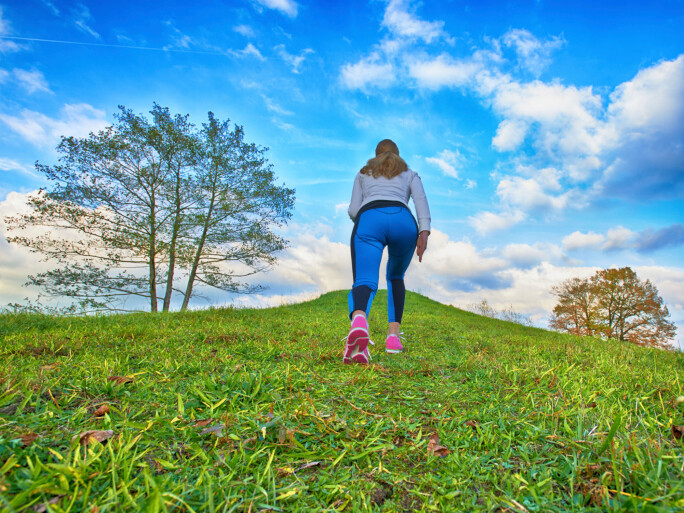
Warm up with 10–15 minutes of easy running
5 x 3 minutes uphill running at a medium-hard effort, with easy running downhill between each one
Cool down with 10 minutes of easy running
Leg-blasters (do this one when you’re itching for a hard workout)
Roche says this workout is “designed to ask everything of your muscles, making them perfect mid-cycle stimuli to kick up fitness.” If you’re feeling wiped out in the last few repeats, you nailed it.
Warm up with 10 minutes of easy running
4 x 2 minutes running uphill at a medium-hard effort, easy running down for recovery
4 x 1 minute uphill at a hard effort, easy running down for recovery
4 x 30 seconds all-out hills
Cool down with 10 minutes of easy running
Just like when you run a speedwork session, make sure you follow a hill workout with an easy running or recovery day.
(10/31/2022) ⚡AMPby Keeley Milne
Hellen Obiri Wants To Win NYC In Her Marathon Debut
After earning a silver medal in the 10,000 meters at the World Athletics Championships in Eugene, Oregon, in July, Hellen Obiri was already looking toward the next big thing: making her 26.2-mile debut at the 2022 New York City Marathon.
Racing in New York was always her main goal for 2022, even though she made a late decision to compete on the track at the world championships. Immediately after her September 11 win at the Great North Run in northeast England, Obiri finally made her long-planned move from Ngong, Kenya to Boulder, Colorado, to start training with the On Athletics Club under three-time Olympian and coach Dathan Ritzenhein.
Obiri’s agent and former coach, Ricky Simms, worked with Ritzenhein to plan out her training for the Great North Run and the New York City Marathon as she made the move, and although she’s only been training in her new environment for nearly two months, she has proven to be adjusting nicely to the transition.
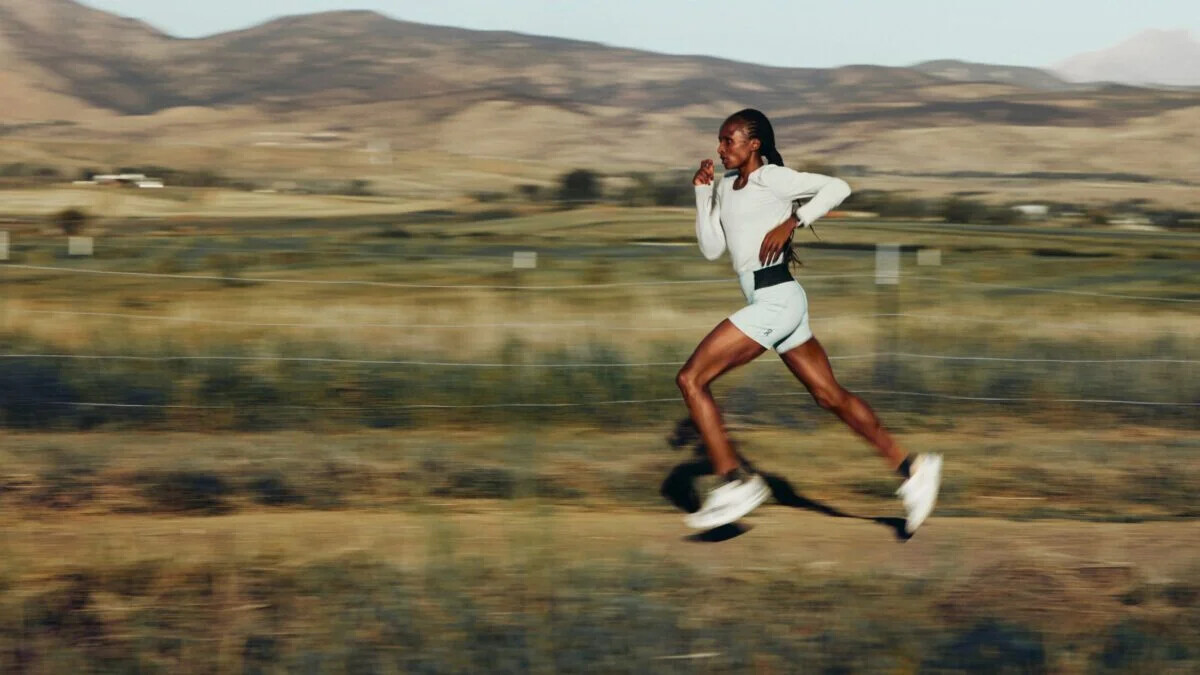
“Everyone has been very welcoming and the training environment is perfect; training is very similar to Kenya,” Obiri says. “I think it will be a good place for my daughter to grow up. The biggest challenge has been being away from my family, as I am missing them a lot. They have not been able to come as they do not yet have U.S. visas.”
So far, due to most of her teammates having been on vacation after the track season, Obiri, 32, has mainly trained with Ritzenhein, who either accompanies her on her training runs or leads her on a bike, and fellow countrywoman Edna Kiplagat, a two-time marathon world champion who has been living in Boulder for a decade and who will also be racing in New York.
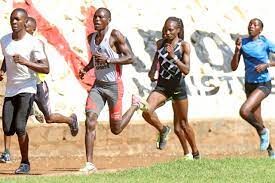
“Every day, I show up and wonder how Hellen is going to amaze me that day–she is completely dialed for New York,” Ritzenhein says. “We’ve spent a lot of early mornings out there, and it’s been a great couple months of getting to know each other and trusting in this new process. It’s really amazing to me how talented and focused she is.”
A Multifaceted Athlete
Obiri is one of the only women to have won world championships in outdoor track, indoor track and cross country. Among the 11 global championship medals she’s earned, she owns two world championship gold medals in the 5,000m (2017, 2019), another from the 3,000 at the 2012 indoor world championships and one more from the 2019 world cross country championships.
But the marathon has always been waiting in the wings. Given her speed, endurance and championship pedigree, Obiri seems to have the right qualities to be ever better over the longer distance, Ritzenhein says. After several weeks training in the U.S., he’s confident the challenging terrain Obiri has gotten used to in Kenya and now the rolling dirt roads north of Boulder will translate well to New York’s undulating course.
“Coming off the world championships this summer, we knew Hellen still had the wheels. But it had been a big increase in total running volume but also the volume and intensity of the long runs and workouts,” Ritzenhein says. “We tried to do some quality sessions on hilly terrain that mimics the course, and she has handled it all very well. I am very confident she will handle the course.”
Ritzenhein noted that Obiri will also likely eventually serve as a guide for fellow 10,000-meter runner Alicia Monson, who will likely make the move to the marathon within the next few years. The 24-year-old third-year pro placed 13th in the 10,000 at both the Olympics in 2021 and the World Athletics Championships in 2022.
“[Monson’s] track times are getting close, so hopefully the training with Hellen will be a bridge to her career on the roads in years,” Ritzenhein says. “Now that the team is back, [Obiri] will do some of the easy morning runs with them, but her workouts are still so much bigger than where they are in training.”
The Marathon Distance Beckons
After her solid 1:07:05 half marathon at the Great North Run, it’s no surprise that Obiri is exuding confidence as she approaches what’s expected to be a highly competitive field for her first go at the marathon distance. It was her fifth time competing in the half-marathon distance, which she says she has grown very comfortable with. In February, she finished second in a half marathon in the United Arab Emirates in 1:04:22, which remains the No. 2 time in the world this year.
“I aim to win [in New York]—the time doesn’t matter,” Obiri says.
Obiri is one of the only women to have won world championships in outdoor track, indoor track and cross country. Among the 11 global championship medals she’s earned, she owns two world championship gold medals in the 5,000m (2017, 2019), another from the 3,000 at the 2012 indoor world championships and one more from the 2019 world cross country championships.
But the marathon has always been waiting in the wings. Given her speed, endurance and championship pedigree, Obiri seems to have the right qualities to be ever better over the longer distance.
“With Peres [Jepchirchir, the reigning 2020 Olympic and 2021 New York City Marathon champion] now out of the race, it definitely changes the landscape a little,” Ritzenhein adds. “But with multiple world championship medalists and last year’s podium finishers, it’s still such a strong field. The marathon debut should always be cautious early on, but there isn’t anything that I think [Obiri] can’t handle.”
Obiri was also eager to share her thoughts on transitioning from training and racing in shoes from Nike, her former sponsor, to the On Cloudboom Echo 3.
“The fact that I was able to transition seamlessly to the new racing shoes and feel very comfortable in them is credit to the designers and team at On,” she says. “I hope I can give them more podium finishes.”
Looking ahead after New York, Obiri plans to continue to focus on road racing in 2023, though she may still jump into some track races if she feels as though she can remain competitive. After the marathon, she’ll wind down with a return to Kenya for the holidays, followed by some winter cross country running before jumping back for marathon training for a to-be-decided spring race, Ritzenhein says.
“[Obiri] could honestly train with the men’s team for much of the long training,” he says. “She’s doing things which are really incredible, and it’s inspiring for them and me to see.”
As with many elite long-distance runners, Obiri is unsurprisingly also looking ahead to the 2024 Paris Olympics as she plans out her future schedule and sets goals for future accolades.
“I have already won the world championships, world cross country championships, world indoor championships, Commonwealth Games and African Championships,” she says. “But I only have silver medals from the Olympics, and I would love an Olympic Games gold.”
(10/31/2022) ⚡AMP
by Emilia Benton
TCS New York City Marathon
The first New York City Marathon, organized in 1970 by Fred Lebow and Vince Chiappetta, was held entirely in Central Park. Of 127 entrants, only 55 men finished; the sole female entrant dropped out due to illness. Winners were given inexpensive wristwatches and recycled baseball and bowling trophies. The entry fee was $1 and the total event budget...
more...Former Roma Marathon Champion Elias Chelimo and Sheila Chepkoech won the 2022 edition of the Standard Chartered Nairobi Marathon
Elias Chelimo who finished eighth last year was in the leading pack from the start before dropping Wilfred Kirwa Kigen who was his closest rival with five kilometers to go to win the men’s 42km race in 2 hours, 10 minutes and 22 seconds.
Kirwa finished second in 2 hours 10 minutes and 50 seconds ahead of Felix Kangogo who settled for the third position in 2 hours 11 minutes and 08seconds.
Sheila Chepkoech clocked 2 hours 27 minutes and 04 seconds minutes to win the women’s title ahead of Beatrice Cheptoo who settled for silver in 2 hours 28 minutes and 42 seconds with Shyline Toroitich claiming bronze after stopping the clock after two hours, twenty-nine minutes, and thirty-six seconds.
Daniel Ebenyo Simiu won the 21-kilometre race in 1 hour and 50 seconds. Isaia Lasoi and Samuel Naibei finished second and third respectively.
The women’s Half-marathon title went to Evaline Chirchir. Nelly Jeptoo and Edith Chemjor finished second and third respectively.
Over 20,000 runners took part in this year’s event which started and ended at the Uhuru gardens here in Nairobi.
Over 200 elite athletes, 100 Persons with Disabilities (PWDs) and 20,000 recreational runners participated in the marathon.
The Marathon featured six race categories: 42km men and women, 21km men and women, 10km men and women, 21km wheelchair men and women, 5km Family Fun Run race and the Corporate Relay Challenge.
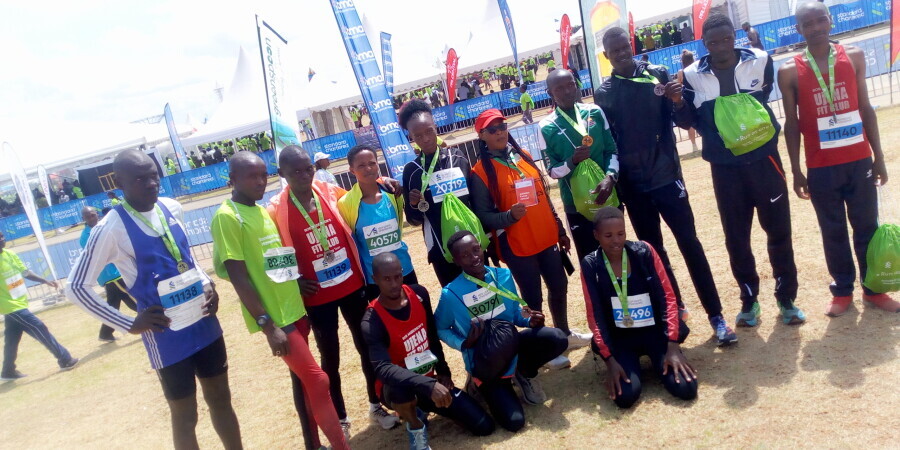
KATA Athletes posted impressive results
Kenyans Athletics Training Academy athletes from Thika posted impressive results according to head coach Joseph Ngure.
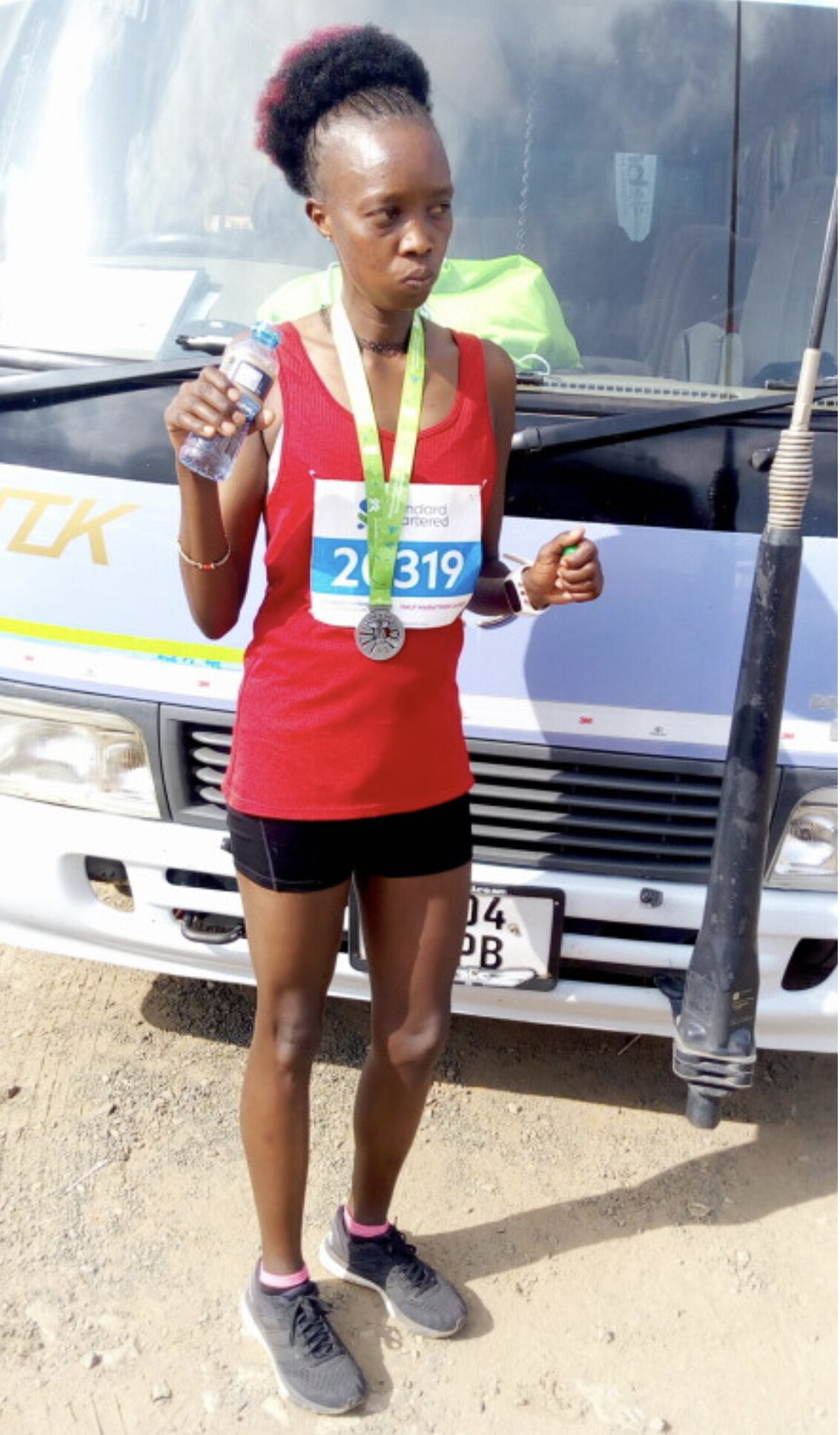
Competing in the competitive 10 and 21km, the upcoming runners used the occasion to gain experience after racing against elite athletes that included world class runners.
Zachariah Kirika and Peter Mburu were the best placed among their teammates during the event held in the outskirts of the city capital.
Peter Mburu, the winner of our October 10Km KATA time-trial, broke his half marathon record after registering 1:04.39 from his former 1:05.45 where winner, Daniel Ebenyo, timed 1:00.50. Peter came 35th in the category with 3,769 runners.
Zachariah finished 35th out of 5,914 finishers after clocking 34:08.4 against the winner’s 31:39.5 in the the long 10k. The distance was actually 11.35Km. "For a race like this I can not imagine why a 10k race would be this long," wrote Bob Anderson, KATA Director.
"The races provided positive exposure and experience for our KATA athletes," says coach Joseph.
KATA RESULTS
ATHLETE BIB EVENT TIME POSITION
Peter Mburu 11135 21Km 1:04.39 35
Evans Kiguru 11140 21Km 1:08.21 101
Anthony Mukundi 11139 21Km 1:11.23 152
Susan Njeri 20319 21Km 1:20.44 27
Zachariah Kirika 30786 11.35Km 34:08.4 35
Erick Mutuku 33605 11.35Km 34:36.8 53
Raphael Gacheru 30585 11.35Km 34:56.7 58
Boniface Mungai 30791 11.35Km 35:33.6 77
Eston Mugo 30787 11.35Km 36:13.3 89
(10/30/2022) ⚡AMPNAIROBI MARATHON
Nairobi Marathon is an annual road running competition over the marathon distance held in October in Nairobi, Kenya. First held in 2003, the competition expanded and now includes a half marathon race along with the main race. It was part of "The Greatest Race on Earth", fully sponsored by Standard Chartered Bank....
more...Kenyan Double thanks to Brimin Misoi and Selly Kaptich, Hendrik Pfeiffer is German star with seventh place in Frankfurt Heatwave
The Kenyan duo of Brimin Misoi and Selly Kaptich triumphed at the Mainova Frankfurt Marathon on Sunday, defying unusually high temperatures. The heatwave put a brake on what might have been a crop of personal bests on the traditionally fast course but one record was set: temperatures of around 20 degrees Celsius towards the end of the elite race made this the warmest Frankfurt Marathon in 33 years.
While the surprise winner of the men’s title, the 33-year-old Brimin Misoi, overcame the tough conditions to run a personal best of 2:06:11, his equally mature compatriot, the 37-year-old Selly Kaptich, confirmed her status as one of the pre-race favourites. Hendrik Pfeiffer raised the home fans’ spirits by finishing seventh in 2:11:28, not quite achieving his intended goal of breaking 2:10 but a highly creditable performance, given the conditions. The men’s champion Brimin Misoi clearly slowed in the last 10 kilometres as did Kaptich and Pfeiffer and almost all of the elite finishers.
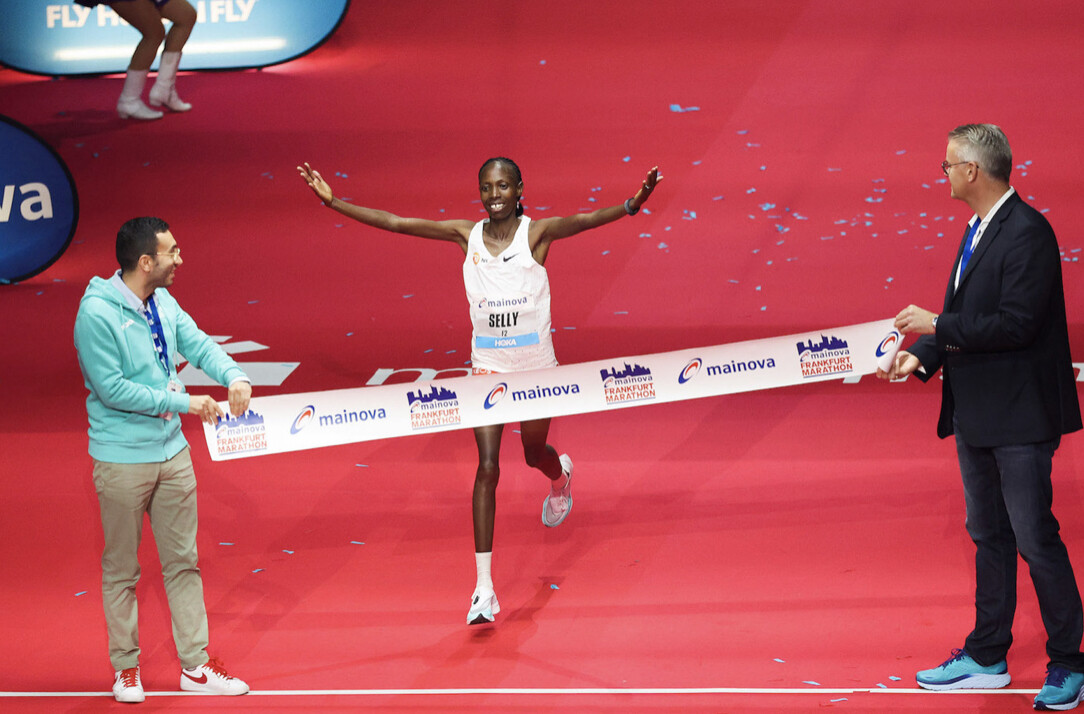
After a two-year interruption because of the Corona Pandemic, the Mainova Frankfurt Marathon returned in impressive style with a festival of running in front of thousands of appreciative fans. Taking into account events held in conjunction, 20,551 runners were entered. 11,708 took part in the marathon, confirming its position as Germany’s second biggest marathon. The Mainova Frankfurt Marathon is an Elite Label Road Race of World Athletics, the international athletics federation.
“We’ve succeeded in staging a wonderful comeback to Frankfurt’s streets and the Festhalle. We had to overcome many challenges and are very happy about today,” said Jo Schindler, race director of the Mainova Frankfurt Marathon. “The athletes had good conditions at the start. Past the half marathon mark they were going well, then it became tough, keeping going in such sunshine. Respect and hats off to every finisher. It was a good result but the race had potential for even more.”
Men’s Race
Temperatures were hardly ideal for fast times, nonetheless, the top three men finishers each set personal bests. A big group stayed together, running on a pace which would bring the leaders across the line in around 2:06. Shortly after 25 kilometres, the scenario was transformed as the Kenyans Brimin Misoi and Samwel Mailu seized the initiative.
Their rivals failed to muster a reply and suddenly a finishing time of 2:04seems possible. But the rising temperatures forced Misoi to slacken his pace from kilometre 37 although he remained unchallenged for the win as he was cheered to the roof of the Festhalle in 2:06:11. “I expected to win. My form was good. The course is outstanding, I am sure I can run faster here,” he said. His previous personal best was 2:08:41, set in May this year at altitude in Nairobi, which is always a tough event. Misoi showed that he is a true competitor by taking over two-and-a-half minutes off that time.
Samwel Mailu was a distant second but deserved the applause and was right to celebrate a brilliant marathon debut in 2:07:19. This was achieved after completing his original role as a pacemaker for Misoi and the rest of the leading group to outstanding effect. The organisers had agreed on the eve of the race to his request that he could race to the finish, once his pacing duties were done. The Ethiopian Derese Ulfata also produced a solid performance to finish third in 2:07:30, also a personal best.
The home fans also had good reason to celebrate the success of Hendrik Pfeiffer. In a controlled effort, the German finished a creditable seventh in 2:11:28, not quite the sub-2:10 he had wanted but his second fastest time ever, nonetheless. “I’m mega-happy. It was a great result and rounds off a great year for me,” said Pfeiffer, who at the European Championships in Munich in August finished 24th, helping Germany to win the silver medal in the team competition.
The women’s race
The women were on course for a sub 2:20 result and a course record until late in the race. Kenya’s Valary Aiyabei clocked the current record of 2:19:10 three years ago and this remains the only sub 2:20 result in the history of the event. Selly Kaptich, who was the fastest runner on the start list with a PB of 2:21:06, ran right behind the three pacemakers right from the start. They reached half way in 69:40 and at this stage Ethiopians Atalel Anmut Dargie and Yoshi Chekole still managed to hold on to the group. A bit further behind a second group with six runners followed in a promising split time of 70:34. Among these runners was Helah Kiprop, Kenya’s marathon silver medallist from the World Championships in 2015.
However just a few kilometers later in the race the picture changed decisively. Dargie was the first one who could not hold the pace and when the former track runner Kaptich increased the pace further at 25k (1:22:27) Chekole dropped back as well. Kaptich covered the following 5k section in a very fast 16:18 and her 30k split time of 1:38:45 then indicated that a sub 2:19 finish might be possible. But all of a sudden the Kenyan leader was in trouble as well. In the warm conditions she slowed considerably. Kaptich was not in danger of being caught because she was well ahead by over two minutes and the women behind her also slowed as well. But the course record was soon out of reach and a time of sub 2:20 became unrealistic as well.
With time of 2:23:11 Selly Kaptich ran the third fastest marathon time of her career. Behind her Helah Kiprop had moved up into second place and then finished in 2:24:40 with fellow-Kenyan Jackline Chepngeno taking third with 2:25:14. “It was a great day for me. The atmosphere was superb and I think I could break the course record if I could come back next year and if weather conditions would be cooler,“ said Selly Kaptich.
Results
Men:
1. Brimin Misoi KEN 2:06:11
2. Samwel Mailu KEN 2:07:19
3. Deresa Ulfata ETH 2:07:30
4. Balew Yihunie Derseh ETH 2:09:21
5. Martin Kosgey KEN 2:10:22
6. Bonface Kiplimo KEN 2:11:08
7. Hendrik Pfeiffer GER 2:11:28
8. Stephen Mugambi KEN 2:11:34
9. Merhawi Ghebreslasie ERI 2:12:34
10. Justino da Silva BRA 2:12:41
Women:
1. Selly Kaptich KEN 2:23:11
2. Helah Kiprop KEN 2:24:40
3. Jackline Chepngeno KEN 2:25:14
4. Sofia Yaremchuk ITA 2:25:36
5. Caroline Jepchirchir KEN 2:27:58
6. Sardana Trofimova KGZ 2:28:50
7. Meseret Alemu ETH 2:29:21
8. Martha Akeno KEN 2:36:33
9. Rebecca Lonedo ITA 2:39:54
10. Corinna Coenning GER 2:40:48
(10/30/2022) ⚡AMPby Race-News-service
Mainova Frankfurt Marathon
Frankfurt is an unexpectedly traditional and charming city, with half-timbered buildings huddled in its quaint medieval Altstadt (old city), cosy apple wine taverns serving hearty regional food, village-like neighbourhoods filled with outdoor cafes, boutiques and street art, and beautiful parks, gardens and riverside paths. The city's cache of museums is second in Germany only to Berlin’s, and its nightlife...
more...Here's How to Check Out Trail Conditions Before Your Run
Trailforks is a do-it-all program for outdoor adventurers who are planning big routes, traveling to new places, or curious about their local trail conditions.
The app is built as a crowd-sourced tool for local trail organizations and trail users to inform the community of trail maintenance and issues. The website uses data from trail runners, mountain bikers, skiers, and a whole host of other outdoor enthusiasts to identify trails and keep their descriptions up-to-date.
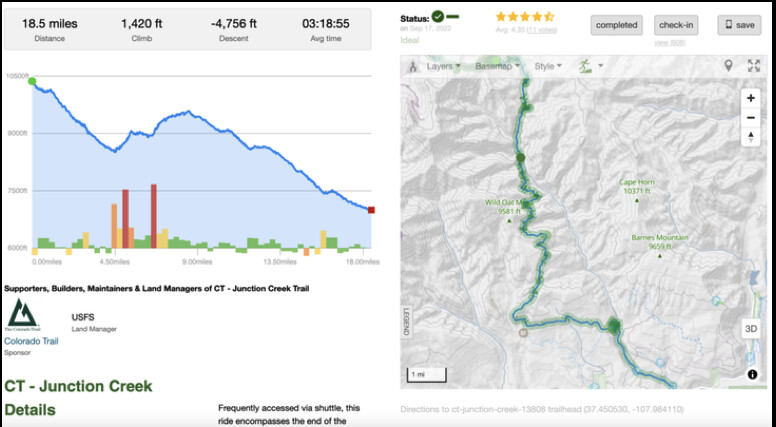
Find the Trailforks website at trailforks.com, and download the app for iPhone or Android.
How to Find a New Trail
Maybe you want to know which trails are dry after a rain, or maybe you are deciding where to go first in a new place.
In the "Trails" tab, you can search for a region or specific trail you want to explore. The topographic map will show you every trail color-coded by difficulty. Purple trails are access roads or double track. Green trails are easy. Blue trails are intermediate. Black trails are hard, and red trails are expert-level.
Click on any trail and Trailforks shows the distance, elevation profile, difficulty, primary uses, condition, and status. The trail condition tells you what the surface of the trail is like (e.g., dry, wet, ideal, variable, etc.). The status tells you if the trail is open, closed, or if there are minor or significant issues on the trail.
Click on the "view trail" button and Trailforks provides even more information. The trail's page tells you the physical difficulty on top of the technicality, when the best season to use the trail is, and whether or not dogs are allowed. At the bottom of the page, there are comments and ratings left by other Trailforks users. These comments often debate the difficulty of the trail and mention any hazards that may not be captured by the "status" of the trail.
There are tabs at the top of each trail's page where you can view photos, see detailed reports of trail closures, and find detailed stats on the trail (eg., average grade, altitude, max grade, etc.).
Building a Route
The "Routes" feature on Trailforks lets you see other folks' routes in the area, what trails they use, the elevation profile, and the distance. Trail Forks still provides all the above information on the individual trails that make up the route.
With the route builder function on Trailforks, you can find the area you want to explore and click around on the map while Trailforks connects the dots. You can make it snap to the nearest trail, or go directly from point to point if you want off-trail adventures. Once you have finished the loop, it shows turn-by-turn directions when possible, the trails it uses, their statuses and conditions, the distance, and the elevation profile.
You can then download the route to the smartphone app, download the .gpx file separately, or send the route to your Garmin app. The Trailforks app will allow you to use the route and see your location on it when you download the region you are exploring and the route.
Community
Trailforks is an all-encompassing tool for any outdoor adventurer, but it is also a way to stay connected with the outdoor community. With a Trailforks account (free with an Outside + membership) you comment on trails, log what routes you have run, connect with friends to cheer them on, and link your Strava for seamless activity uploads.
No matter where you go you can tap into the joy of the outdoor community through the intimate local knowledge on Trailforks. Go forth with confidence.
(10/30/2022) ⚡AMPby Trail Runner Magazine
Podcasts for the long run: time will fly by while you listen to one of our faves
Whether you are looking for something entertaining to pass the time on your weekly long runs, or want some running and wellness-related content to turn on while you’re driving or cooking, we’ve got the line-up for you.
Legacy of Speed

Hosted by Malcolm Gladwell (also of the Revisionist History podcast), this podcast tells the story behind the 1968 Olympic Games, when two Black sprinters raised their fists in protest, shaking the world. More than 50 years later, the ripple effects of their activism are still felt. Legacy of Speed tells the story of a small university track team who unexpectedly took the world’s stage, the runners who took a stand, and the coaches who helped make them both fast enough and courageous enough to rise up. Once you start, you won’t be able to stop listening.
The Shakeout Podcast
Canadian Running‘s own podcast is hosted and produced by the multi-talented Olympian Kate Van Buskirk and celebrates running and its transformative power. Van Buskirk connects with sport leaders, coaches, advocates and visionary athletes to dig deep on important topics. Van Buskirk is joined by fellow Olympian and CR staff writer Maddy Kelly for a weekly recap of events in the running world called The Rundown. Whether you’re a regular runner or simply interested in intelligent and meaningful conversations within sport, The Shakeout is a must-listen.
The Singletrack Podcast
Whether you run in the woods on the daily, or you’re just learning what singletrack is, you’ll love Finn Melanson‘s exploration of the world of trail and ultrarunning. Melanson talks to all the big names in the sport to find out what makes them tick, and does an excellent job of explaining, previewing and recapping trail and ultra and trail races across the world. From obsessive ultratrail fan to newbie, The Singletrack Podcast is the place to go.
The Rich Roll Podcast
Endurance athlete and plant-based nutrition advocate Rich Roll also hosts one of the world’s most popular wellness podcasts. On each episode, Rich dives deep into diverse topics, discussing everything from track and field to the science of longevity; from mental strength to enlightenment. “Rich delves deep into all things wellness with some of the brightest and most forward-thinking, paradigm-busting minds in health, fitness, nutrition, art, entertainment, entrepreneurship & spirituality,” touts the podcast website, and it’s true: the vast range of past guests include Boston Marathon champ Des Linden, boxer Laila Ali, ultrarunner Harvey Lewis and neuroscientist Andrew Huberman.
Running for Real with Tina Muir
Tina Muir is a former pro-marathoner from the UK, now US-based. Her show deals with the darker, less glamorous side of professional sport. Muir is not afraid to bring up tough topics and is a staunch advocate for mental health and women in sport, and her belief that “running has the power to change the world” is evident in every conversation. Muir endeavors to make this clear in her podcast, which opens up with a quote that describes this perfectly: “The podcast for runners who know that for every runner’s high, there are just as many lows.”
Radiolab
While not running-focused, Radiolab has some episodes about running that are fascinating–as is every single other podcast in their history. Hosted by Lulu Miller and Latif Nasser, Radiolab digs into deep questions and uses investigative journalism to get the answers. On any episode, you may find yourself immersed in science, legal history and incredible stories about humans around the world.
Women Run Canada
This podcast, hosted by Kirsten Parker, celebrates Canadian women runners from all walks of life. It tackles a wide variety of topics–and while listening, you’ll feel even more connected to the Canadian running community. Perfect when you’re needing some motivation to get moving, you’ll learn, laugh and be inspired by this pod.
(10/30/2022) ⚡AMPby Running Magazine
Misoi and Kaptich take Frankfurt Marathon titles
Brimin Kipkorir Misoi and Selly Chepyego Kaptich achieved a Kenyan double at the Mainova Frankfurt Marathon, a World Athletics Elite Label road race, on Sunday (30).
Both athletes made a break around 25km into their races on a warm and sunny morning, Misoi going on to win the men’s event in a PB of 2:06:11 and 2014 World Half Marathon Championships bronze medallist Kaptich holding on to take the women’s title – her first marathon win – in 2:23:11.
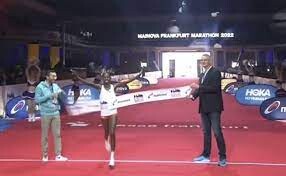
Misoi wasn’t considered one of the pre-race favourites but he ran a well-judged race to triumph by more than a minute ahead of pacemaker Samwel Nyamai Mailu, who carried on to complete the full 26.2 miles in 2:07:19 on his debut at the distance.
Kaptich, meanwhile, had been the fastest athlete on the women’s start list and while she struggled in the latter stages and ultimately missed her goal of breaking the 2:19:10 course record, she managed to maintain her advantage and won by almost a minute and a half ahead of Helah Kiprop (2:24:40).
Misoi formed part of the leading men’s group that followed pacemakers through 10km in 29:52 and 15km in 44:40, with half way reached in 1:02:58. Misoi then put in a surge and a series of sub-2:55 kilometres saw him break away from his rivals. He was on sub-2:05 pace as he reached 30km in 1:28:44 behind Mailu and clearly felt he had more to give as he moved past the pacemaker a short while later.
Misoi went through 35km in 1:43:33 and although he wasn’t able to maintain that pace, he clocked 1:59:12 for 40km and then reached the finish in 2:06:11 for a PB and the fifth fastest winning time in Frankfurt.
Although his pace also slowed as the temperatures rose, Misoi’s compatriot Mailu felt good enough to finish the race after doing his pacemaking duties to 30km and ran 2:07:19 for the runner up spot, while Ethiopia’s Derese Geleta was third in 2:07:30.Hendrik Pfeiffer was the top German finisher, running 2:11:28 for seventh place.
In the women’s race, Kaptich followed the male pacemakers through 10km in 33:14 and 15km in 49:38, joined by Ethiopian duo Atalel Anmut and Yeshi Kalayu Chekole. The trio were still together as the halfway mark was passed in 1:09:40.
Around 5km later, Kaptich was ready to make her move. Having dropped Anmut, Kaptich and Chekole went through 25km in 1:22:27, 19 seconds ahead and on course record pace. Kaptich then kicked again and left Chekole behind, picking up the pace to pass the 30km mark in 1:38:45, more than a minute ahead. At this point, a chase group led by Kenya’s 2015 world silver medallist Kiprop was working hard to close the gap (1:40:56).
By 35km it was Kiprop in second place, as she passed that mark in 1:58:15, two minutes behind Kaptich (1:56:12), their compatriot Jackline Chepngeno a further 10 seconds back.
The podium places seemed decided and while Kiprop began to reel Kaptich in, passing 40km in 2:16:28 behind Kaptich’s 2:14:42, she couldn’t catch her.
Kaptich went on to win in 2:23:11 to Kiprop’s 2:24:40 and Chepngeno’s 2:25:14.
Italy’s Sofiia Yaremchuk was fourth in a PB of 2:25:36 and Corinna Coenning was the top German athlete, finishing 10th in 2:40:48.
(10/30/2022) ⚡AMPMainova Frankfurt Marathon
Frankfurt is an unexpectedly traditional and charming city, with half-timbered buildings huddled in its quaint medieval Altstadt (old city), cosy apple wine taverns serving hearty regional food, village-like neighbourhoods filled with outdoor cafes, boutiques and street art, and beautiful parks, gardens and riverside paths. The city's cache of museums is second in Germany only to Berlin’s, and its nightlife...
more...Eight things that happen to your body when you run a marathon
From losing a toenail to increased hearing power, here's what you need to know before you run towards that finishing line
On 22nd April, around 50,000 runners will pound the pavements and streets from Greenwich to the Mall in the London Marathon. It is undoubtedly the biggest fitness carnival of the year, unrivalled in its atmosphere and the sense of achievement felt by those who finish it.
Of course, it is also a physical and mental challenge like no other. And while we have all heard about the perils of getting cramp or hitting the infamous marathon wall, there are lesser known side effects that only those who have conquered the gruelling distance will know about. And as a veteran of seven marathons, I bring you the insider’s guide to the marathon body and what happens to it as you plod from one mile to the next:

You will shrink
Not good news for shorties like me, but most finishers will indeed cross the line an average two centimetres shorter than when they started. It is, thankfully, a temporary shrinkage in height caused by fluid losses between the intervertebral discs in the spine. Height is fully restored when fluid levels are replaced, usually 24 hours or so later.
Your nose might run
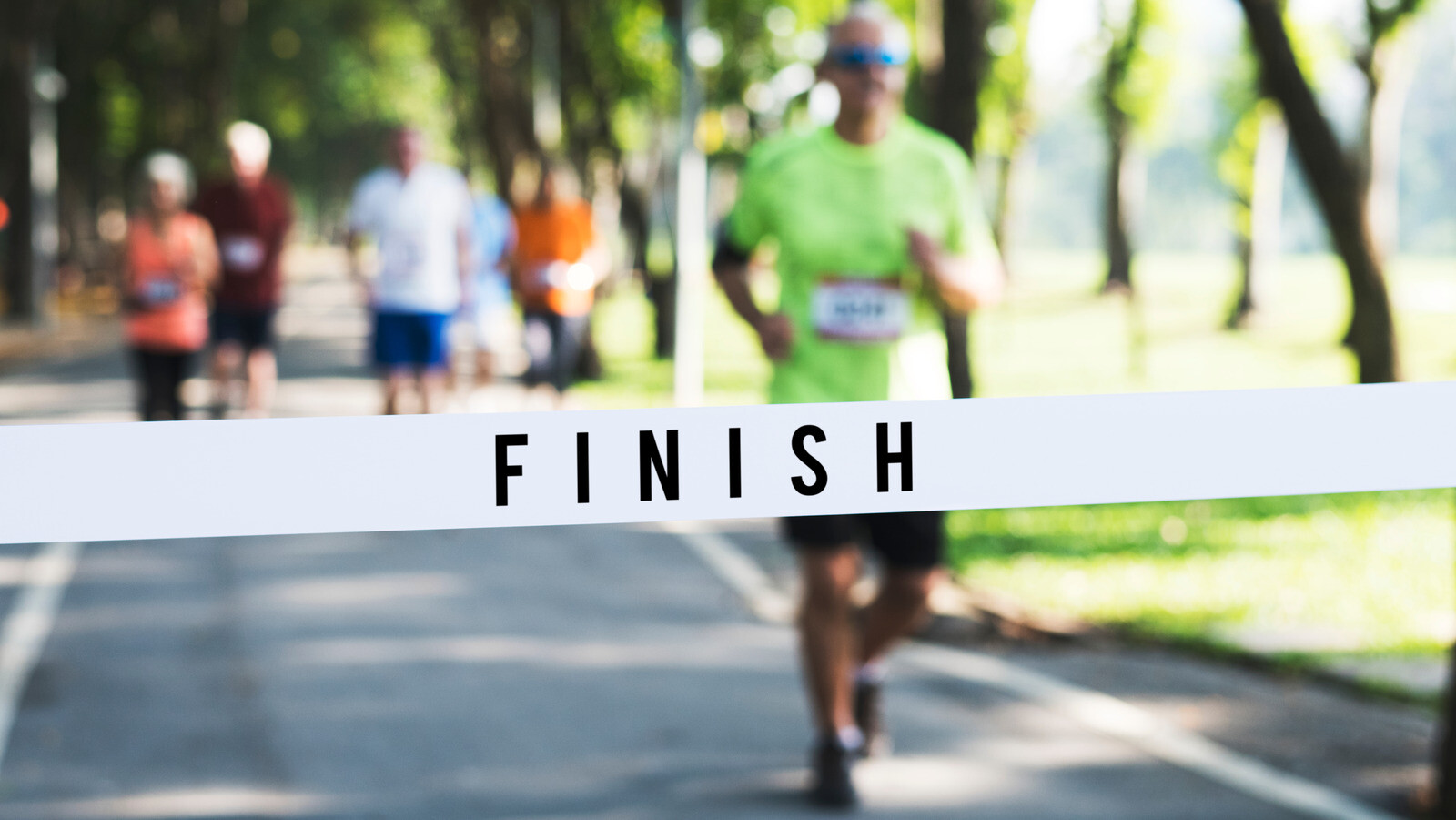
A study in the Journal Annals of Allergy, Asthma & Immunology found that 56 percent of people get a serious bout of the sniffles while running for long periods outdoors. The reason? They are suffering from runner’s hayfever or exercise-induced rhinitis. Experts say it is probably caused by the increased air-flow that you inhale as your breathing rate quickens, which sends your nose into mucus-producing overdrive. Very cool and dry air can make matters worse.
MORE GLOSS: Is barefoot running better for you?
You’ll have sharper hearing
Training for a marathon improves circulation to the ear, which provides a greater supply of nutrients to help preserve hearing. One study tested the hearing of 24 women and 19 men who ran long distances regularly. Scientists found a marked improvement in hearing sensitivity after they had finished running, thought to be the result of improved circulation.
You’ll be lighter (temporarily)
Runners will shed 2-5kg in weight through lost fluid during a marathon which should be replaced by initially consuming 500ml of fluid per hour during and after the race until urine returns to a pale straw colour (dark urine is a sign of concentrated electrolytes or body salts caused by dehydration), and then drinking normally in the days afterwards.
“Drinking too much during and after a marathon is a big mistake,” says Louise Sutton, sports dietitian at Leeds Metropolitan University. “It dilutes body salts to a dangerous level and can cause water toxicity or hyponatremia, a condition that could be fatal, so don’t overdo the rehydration.”
Studies in the British Journal of Sports Medicine show that more people are hospitalised every year after the London marathon because of hyponatraemia than because of dehydration. Drinking too little is very rare - stick to the guide and you should be back to normal in no time.
You’ll burn calories (but not as many as you might think)
With muscle stores of glycogen, the body’s source of fuel for activity, becoming depleted after the race, they need to be replaced by consuming 0.5g of carbohydrate for every pound of your body weight - the equivalent of a bowl of breakfast cereals and a banana or a couple of sandwiches - 2-3 hours after the finish. However, the number of calories used to run a marathon is around 2,800, lower than many people think and the race is certainly not an excuse to gorge on a calorie mountain in the days that follow.
You might lose a toenail
Given that the average runner takes 32,000 strides during a marathon, it’s not surprising that the feet take a hammering. Many runners find that the cumulative effect of months of training cause such trauma to their toenails that they blacken and fall off. Each of the marathons I have run has resulted in toenail loss (although, encouragingly, there’s always a nice shiny new one underneath). Keeping them trimmed and smooth can limit the friction within your trainers, but it is almost inevitable.
Blood vessels can be damaged
Continual hammering of tiny blood vessels in the feet results in a drop in levels of red, oxygen carrying blood cells or haemoglobin by as much as 20 grams per litre of blood. It’s important to rest in the days after marathon and consume iron rich foods like meat and green leafy vegetables to return levels to normal and prevent the risk of anaemia.
Prepare to be battle-weary
The most common injury during the race is cramp, followed by blisters and abrasions although St John’s Ambulance volunteers will be on hand to massage and tend to weary limbs. Stewards will hand out 40kg of petroleum jelly to reduce the possibility of chaffing and joggers’ nipple (which affects women as well as men and is caused by vests or bra fabric irritating the delicate area).
(10/29/2022) ⚡AMPby Peta Bee
Kenyan Selly Kaptich will headline Mainova Frankfurt Marathon on Sunday
Selly Kaptich of Kenya will stand on the start line for the 39th edition of the Mainova Frankfurt Marathon as the fastest woman in the field. Her best of 2:21:09 could well be under threat on Sunday morning, given the reputation for Frankfurt’s fast course. Impressive though a reading of her career highlights is, including an early sign of talent with a gold medal for 3,000m at the World Junior Championships 21 years ago, what catches the eye is her ability to adapt to a different running and life culture in general, marked by her becoming a member of a Japanese corporate running club almost 20 years ago.
The 36-year-old has run eight marathons in her career so far with the personal best achieved in finishing third in Berlin three years ago. The year of 2019 was indeed a watershed for Kaptich as she firstly ran 2:23:53 to finish fourth in Paris, one of the prime spring marathons on the calendar, before running her best time to-date later in the year. But how far did the move to join the Kyudenko Corporate team in Japan prove of lasting value? “It was in 2006 when I received an invitation out of nowhere to go to Japan and become part of this team. They had noticed my results on the road and cross country. Culturally it was very different, both the change in culture and training.”
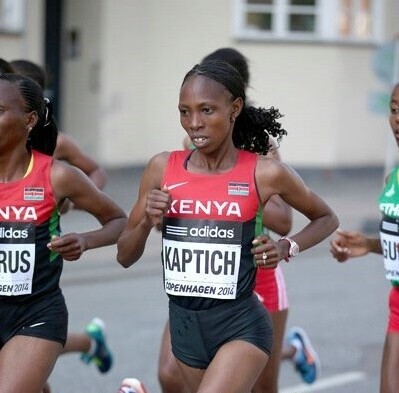
Kaptich was gradually allowed to revert to her preferred form of long runs, roaming over the roads and cross country. She reflected that her Japanese colleagues tended to mark out a stretch of road and run up and down it 20 times. But her talent was recognised from the start and both sides learned to compromise: “I learned a lot, both as a runner and as a person. I joined the others in doing office work, learned Japanese, then did some of my training “Kenyan style” but joined the others for speedwork on the track. I also wore a kimono sometimes.”
The partnership lasted 10 years, in which time Selly Kaptich became one of the stars of the Kyudenko team. The company headquarters is in the city of Fukuoka, which until 2021 hosted one of the world’s most historic and prestigious marathons. She believes the experience of adapting to such a different environment was beneficial all-round: “I think it strengthened me personally, coping with something so different at that stage in my life was not easy but I had to cope and became stronger for it.”
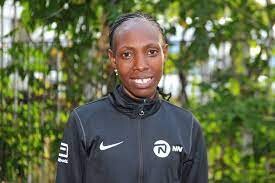
As for her prospects in the Mainova Frankfurt Marathon on Sunday, the 36-year-old Kenyan is confident she can improve on her best of 2:21:06: “Definitely, I’ve got a good chance of a PB and I’m ready for it.” Capable as she has shown herself to be in her long career, Selly Kaptich has retained her competitive hunger.
(10/29/2022) ⚡AMPby Runners Web
Mainova Frankfurt Marathon
Frankfurt is an unexpectedly traditional and charming city, with half-timbered buildings huddled in its quaint medieval Altstadt (old city), cosy apple wine taverns serving hearty regional food, village-like neighbourhoods filled with outdoor cafes, boutiques and street art, and beautiful parks, gardens and riverside paths. The city's cache of museums is second in Germany only to Berlin’s, and its nightlife...
more...How Fast Will These Celebrities Run the 2022 NYC Marathon?
From actors to former pro athletes, there are quite a few notable people running the Big Apple’s big race on November 6.
Celebrities—they’re just like us. They eat breakfast, they go to work, and they run marathons too!

The 2022 New York City Marathon fast approaches, which means 50,000 runners will stand on the starting line in Staten Island ready to cover 26.2 miles. Among them are TV stars, Olympians, models, and race car drivers, all hoping to achieve the same goal as everyone else—cross the finish line in Central Park.
So what celebs and notables are racing the NYC Marathon this year? Take a look! You might spot them cruising the streets of the Big Apple on November 6.
1 Amy Robach, Amy Robach, co-host of ABC News’ GMA3: What You Need to Know and 20/20, is running her fourth marathon. The 49-year-old completed NYC in 2019, Berlin in 2021, and Chicago just a month ago. Her co-host, TJ Holmes, is also running. The pair ran the NYC Half together earlier this year.
2 Ashton Kutcher, Ashton Kutcher is multiple-time Teen Choice Award-winning actor who has been prominently featured in film and television ever since he appeared on That ’70s Show in the ’90s and early aughts. The 44-year-old will race his first-ever marathon in support of his nonprofit, Thorn, which aims to eliminate child sexual abuse from the internet.
3 Casey Neistat, Casey Neistat is a filmmaker and YouTube star who has done everything from build an app to start a podcast to film documentaries. He has completed the New York City Marathon five times, with a course best of 3:03:17 from 2013. The 41-year-old recently moved back to his native New York from Los Angeles, so the race is a homecoming of sorts.
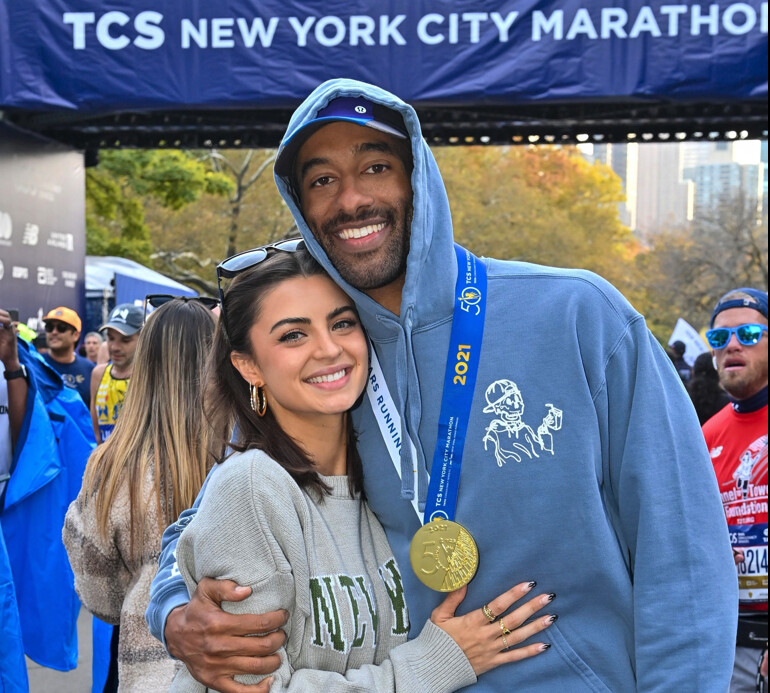
4 Claire Holt Actress Claire Holt, 34, is most famous for her roles in H20: Just Add Water, Pretty Little Liars, and The Vampire Diaries and its sequel The Originals. She’s racing to raise money for the Boston Children’s Hospital.
5 Ellie Kemper You might know her best as Kimmy Schmidt or Erin Hannon, but actress and comedian Ellie Kemper is playing herself as she runs 26.2 miles over the streets of New York. The 42-year-old will race to support The Brotherhood Sister Sol, an organization that educates, organizes, and trains Black and Latinx youth to challenge inequality and create opportunity.
6 Lauren Ridloff Forget fighting zombies and celestial beings—The Walking Dead and The Eternals star has to push through her first marathon. The actress, 44, is raising money to support PS 347, a New York City public school serving deaf and hard-of-hearing students.
7 Marit Bjørgen Norweigian cross-country skier Marit Bjørgen has earned 15 Olympic medals. How will she fare without her skis? The 42-year-old has set a lofty goal for herself—a sub-3:00 time.
8 Matt James The Bachelor star Matt James ran his first marathon in Chicago in 2019. Since then, he’s caught the bug, completing last year’s New York City Marathon and the Boston Marathon earlier this spring. The 30-year-old will run to support ABC Food Tours.
9 Meghan Duggan Olympic gold medal hockey player and New Jersey Devils Director of Player Development Meghan Duggan is trading in her skates for running shoes. All 26.2 of her miles are in support of the Women’s Sports Foundation.
10 Monica Puig Another Olympian on this list? Retired tennis player Monica Puig struck gold in singles at Rio. Now, she’ll have a new athletic challenge—completing a marathon. Tennis players run much farther than you think over the course of a match, so watch for her to run a fast time.
11 Nev Schulman The host of MTV’s Catfish: The TV Show is no stranger to the New York City Marathon, having run it multiple times. The 38-year-old even grew up near the finish line. Schulman will run to support NYRR Team for Kids.
12 Nicole BriscoeNicole Briscoe is used to commentating on races as a NASCAR anchor on ESPN. But during the New York City Marathon, she’ll be the one on the road herself—no car needed.
13 Pia Wurtzbach Model and actress Pia Wurtzbach, who won the Miss Universe pageant in 2015, chases her first marathon finish in Central Park. The 33-year-old is prepared, having recently finished a 20-mile long run.
14 Ryan Briscoe As a professional IndyCar driver, Ryan Briscoe is always ready to race. Except this time, he’ll have to leave his car behind. His wife Nicole Briscoe, mentioned earlier, is also running, making the NYC Marathon a family affair.
15 Sierra Boggess The original Ariel in Broadway’s The Little Mermaid, Sierra Boggess is running the New York City Marathon with her sister Allegra. The sisters have teamed up to raise money for the Cancer Support Community.
16 Tiki Barber, It wouldn’t be a New York City Marathon without legendary New York Giants football player Tiki Barber. The 47-year-old, who also co-hosts Tiki & Tierney, has completed the last seven editions of the Big Apple’s premier road race. Will this year be his best finish?
17 TJ Holmes, Veteran journalist TJ Holmes takes his talent to the marathon course. The 42-year-old will race with his co-host of ABC News’ GMA3: What You Need to Know, Amy Robach. He beat his co-host by just a step in the NYC Half earlier this year, but who will come out on top when the distance is doubled?
18 Zac Clarkhe Bachelorette star Zac Clark finished the Boston Marathon earlier this year and has run the New York City Marathon seven times. Will he best his personal record of 3:48:43 from 2014?
(10/29/2022) ⚡AMP
by Runner’s World
Robotics company to introduce the world's fastest shoe
A U.S. start-up, Shift Robotics of Pittsburgh, has launched a Kickstarter campaign for what they claim is the world’s fastest shoe. The “Moonwalker” apparently let you walk at the speed of a run while maneuvering stairs, through crowds, hills and even getting on public transit.
Late to work, and don’t want to run? The Moonwalkers will help you get to your destination in less than half the time it would normally take you to walk there with a 100 per cent increase in your walking speed. The shoes use artificial intelligence (AI) to measure your gait and react to how you walk, reaching the top speed of 12 km/h in a matter of seconds.
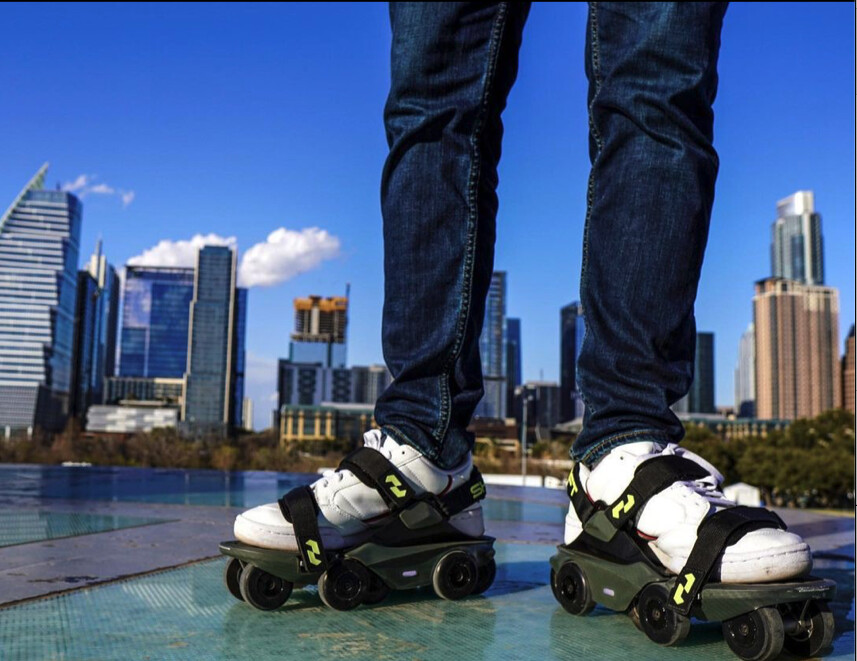
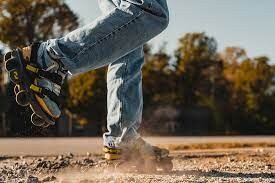
The shoes have two modes, lock and shift–and they only move when you do. This means you can go up and down stairs, step into mass transit, and confidently wait at the crosswalk while the AI switches modes using an algorithm to adapt to your walking gait and environment. The shoes have a hinge system that allows your foot to naturally bend at your toes, preserving your natural gait, mobility and balance.
Like all great inventions, the idea behind these shoes came from a near-death experience for founder Xunjie Zhang, who almost got hit by a car while commuting to work in Pittsburgh. Once he graduated from Carnegie Mellon’s Robotics Institute, Xunjie teamed up with a group of race-car engineers, roboticists and sneaker designers to do one thing–pack everything you find in an electric vehicle into a shoe, so that you can effortlessly walk at a running speed.
In the three days since the Kickstarter campaign began, the company has raised over CAD $170,000 ($20,000 over its initial goal). The shoes can be pre-ordered now for March 2023, but they will come at a cost of USD $1,399. Unfortunately, the Moonwalkers will only come in one size, which will best fit men between size nine and 12, and women between 10.5 and 13.
The Strava police will have to be on alert for Moonwalkers chasing segments when these puppies hit the open market in the summer of 2023.
(10/29/2022) ⚡AMPby Running Magazine
12-year-old Norwegian kid runs fast 10K, is this Norwegian kid the next Jakob Ingebrigtsen?
Last weekend at the Hytteplanmila 10K in Hole, Norway, (yes, that’s the name of the town), Per August Halle Haugen ran the second-fastest time ever for a 12-year-old male, clocking a new personal best of 33:18 (3:20/km).
This is the first time Halle Haugen has gone under 34 minutes. His previous best was 34:04 from earlier this year. He has been competing at road races, since there is no age-category prizing or championships for kids his age in Norway.
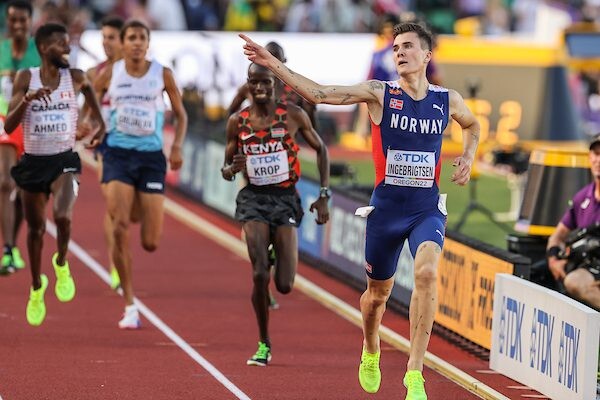
In Norway, kids aren’t allowed to compete until age 13, so for Halle Haugen to compete, he must do so in public road races like the Hytteplanmila 10K.
The current world record for 12-year-old boys is held by Australian Kobe Stewart with a time of 33:08. Stewart, continues to run similar times today, at age 15, as he did when he set the record in 2020.
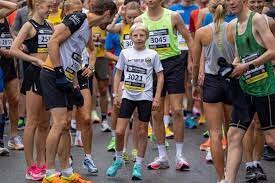
Past studies on genetics found that both the scientific and sporting communities recognize that genetic factors undoubtedly contribute to athletic performance. Halle Haugen has serious distance-running genes: his grandfather, Per Halle Haugen, competed for Norway 40 years ago, running 13:27 over 5,000m. His mother and coach, Gunhild Halle Haugen, has PBs of 15:09 for 5,000m and 31:47 for 10K, and his older brother, Simen, born in 1999, ran 13:37 for 5,000m last year.
Sure, Halle Haugen has many years ahead of him, but on his current trajectory, he is following in the footsteps of the greatest Norwegian distance runner in history, Jakob Ingebrigtsen.
In a feature by World Athletics in 2018, Ingebrigtsen said he’d been training like a professional runner since he was eight. He surprised everyone at age 14 when he set the age-group world record for 1,500m (3:50.57).
Ingebrigtsen was tagged as a prodigy when he took his first steps in the sport. At 14, he clocked 3:48.37 for 1,500m, at 15 he ran 3:42.44, and at the 2017 Pre Classic in Eugene, Ore., he became the youngest athlete to run a sub-four-minute mile, clocking 3:58.07 at the age of 16. Since then, Ingebrigtsen has become the Olympic 1,500m champion and world champion over 5,000m.
We are bound to hear Halle Haugen’s name again when he begins to tear up the track in Norway when he turns 13 in 2023.
Meanwhile in Canada, 10-year-old running phenom Sawyer Nicholson made headlines after winning the Niagara Falls 5K last weekend in 18:55. Nicholson’s result is only 53 seconds back of the world record for age 10 (18:02). In an interview with Nicholson earlier this year, she spoke about her aspirations and her love for running and soccer.
(10/29/2022) ⚡AMPby Marley Dickinson
80-year-old doctor will run his 45th Marine Corps Marathon
An 80-year-old doctor is set to run his 45th Marine Corps Marathon, only missing the race twice since first competing in 1977. Dr. Glenn Geelhoed has run more than 170 marathons on all seven continents, but his true passion is saving lives through his nonprofit, Mission to Heal.
Mission to Heal brings medical supplies and training to the most remote corners of the world.
"We have done what we can to help not just to heal the folk that we see immediately by cutting and sewing, but by teaching those skills such that it continues beyond us," Geelhoed told CBS News.
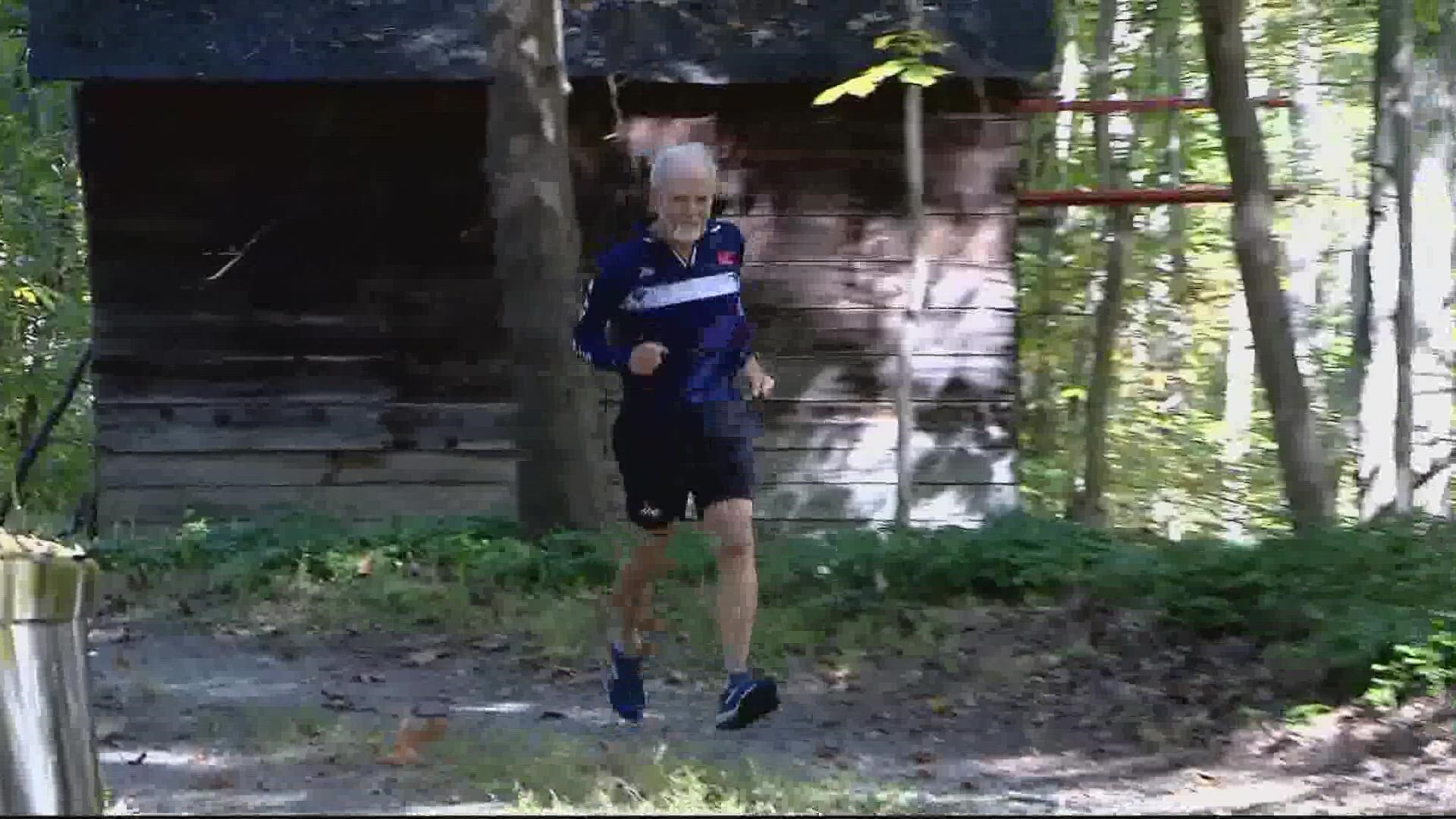
He said that his medical missions are inspired by his runs.
"The marathon is a good metaphor because it takes discipline, it takes effort, and it takes a commitment," he said. "That's what health care is."
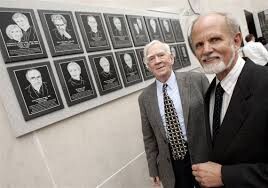
Asked how much longer he plans on running these punishing races, Geelhoed told CBS News, "Until the next one. And the next one and the one after that."
(10/28/2022) ⚡AMPby Jan Crawford
Marine Corps Marathon
Recognized for impeccable organization on a scenic course managed by the US Marines in Arlington, VA and the nation's capital, the Marine Corps Marathon is one of the largest marathons in the US and the world. Known as 'the best marathon for beginners,' the MCM is largest marathon in the world that doesn't offer prize money, earning its nickname, “The...
more...Frankfurt hopes to come back with a bang as Selly Kaptich eyes the course record
The Mainova Frankfurt Marathon is the last major German city marathon to make its comeback after a two-year break because of the Corona pandemic.
The 39th edition will be started on Sunday with a field of over 11,500 marathon runners. Including running events at shorter distances the total number of participants is expected to be over 20,000 athletes. Elite runners could bring the Mainova Frankfurt Marathon back in overdrive as they are aiming for fast times. Ethiopia’s Gebru Redahgne and Kenyan Selly Kaptich head the start lists with personal bests of 2:05:58 and 2:21:09.
Weather conditions look very good although it may become warm towards the end of the elite races. The Mainova Frankfurt Marathon is an Elite Label Road Race of World Athletics, the international athletics federation. A live stream can be accessed on the event’s website at: www.frankfurt-marathon.com , however this will not be possible in territories where there is live TV broadcast.
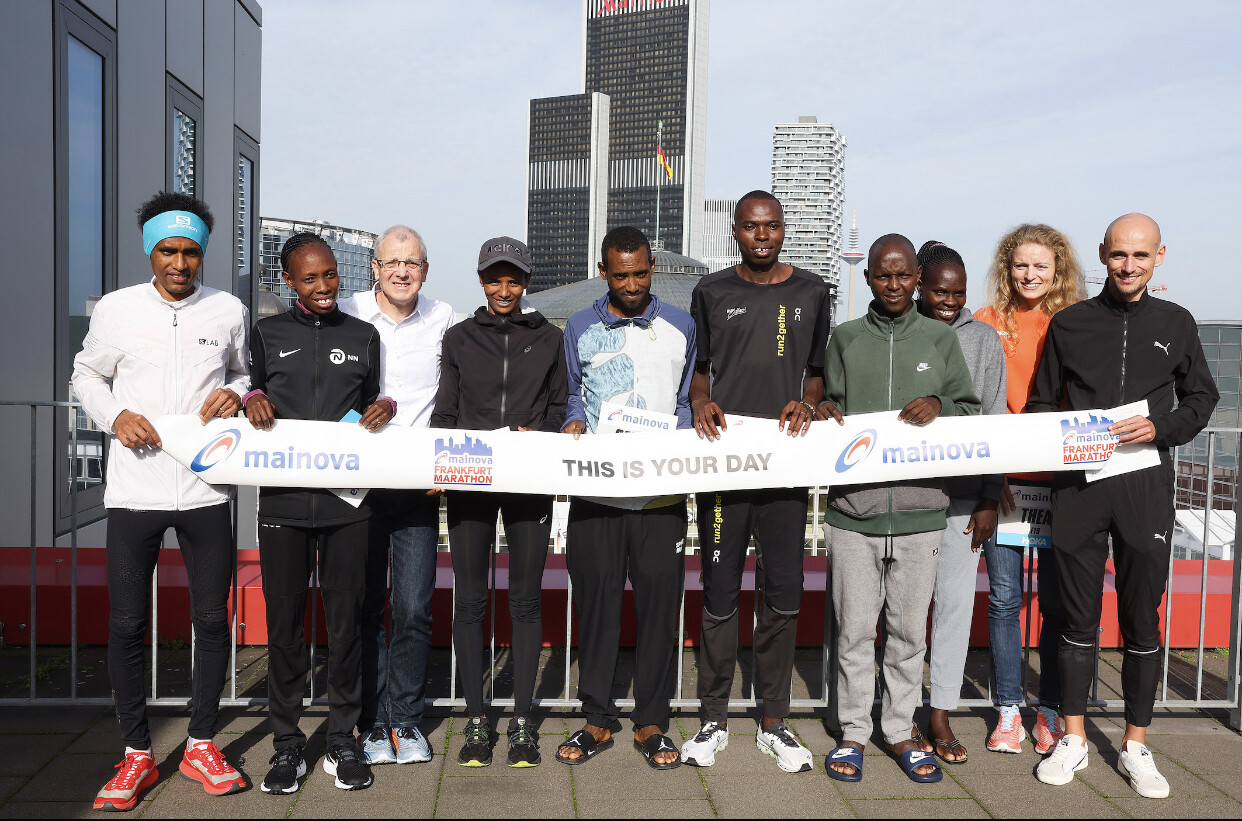
The women’s race
Back in 2019 it was a woman who produced the highlight of the Mainova Frankfurt Marathon: Kenya’s Valary Aiyabei established the course record of 2:19:10, which was the first sub 2:20time in the history of the race. It could well be the women’s race again that stands out on Sunday. Selly Kaptich is ready for a very fast race. “I am confident that I can run a sub 2:20personal best and I want to attack the course record - that is what I am here for,“ said Selly Kaptich, who heads a field of eight women with personal bests of sub 2:25.
The former track runner mentioned a half way split time target of 69:00, which caught Christoph Kopp, Frankfurt’s Elite Race Coordinator, by surprise. “We had not heard about these plans from her management. However if she really wants to go that fast we will rearrange pacemaking to support her,“ said Christoph Kopp.
Fellow-Kenyan Helah Kiprop travelled to Frankfurt with a PB of 2:21:27. The marathon silver medallist from the World Championships 2015 ran this time in Tokyo in 2016. Earlier this year she showed fine form again with a 2:24:10 victory in Copenhagen. The 37 year-old has competed in the Mainova Frankfurt Marathon back in 2014 when she was fifth with 2:27:14.
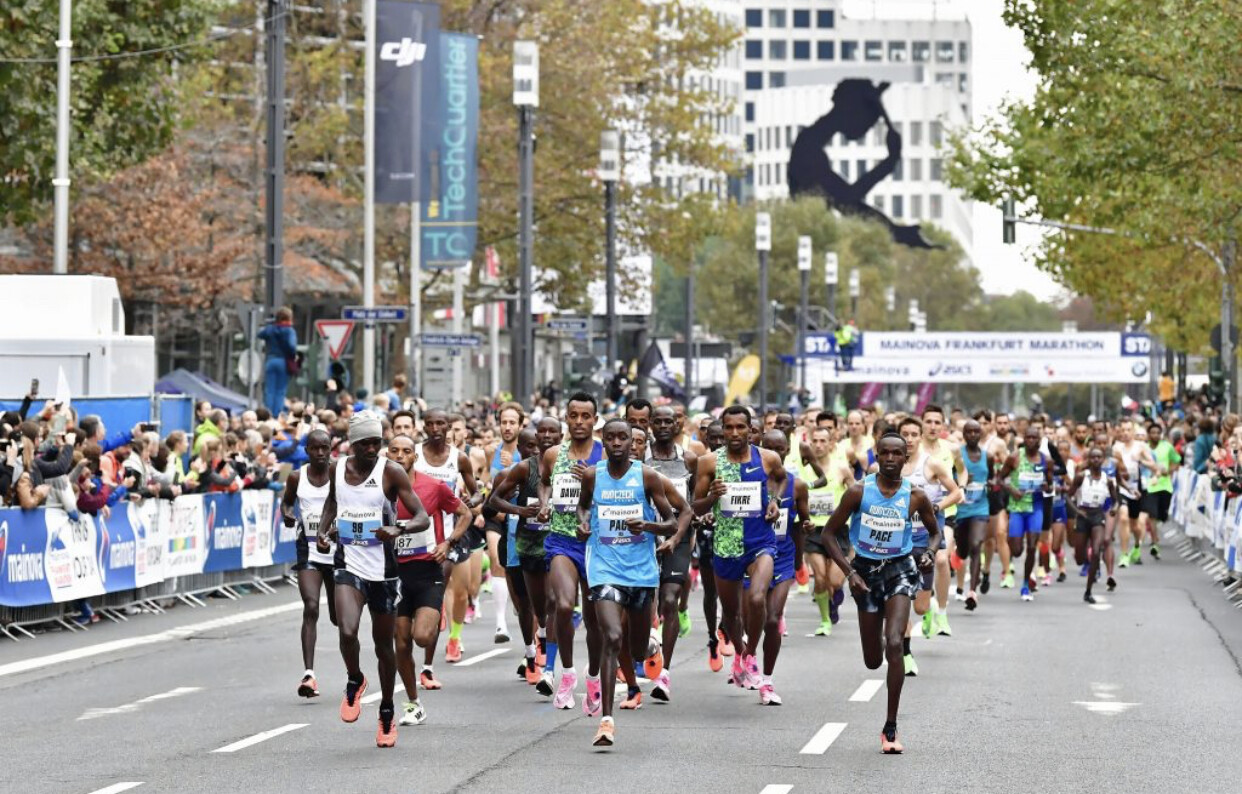
"I am happy to be back here. In 2014 I ran a PB in Frankfurt, so I hope to do it again here on Sunday,“ said Helah Kiprop.
Yoshi Chekole is the third woman in the field who has a PB of sub 2:22. The Ethiopian improved to 2:21:17 in Sevilla this February. “My goal is to run a personal best on Sunday and to finish in the best position possible,“ said Chekole, who prepared for four months for the Mainova Frankfurt Marathon and feels she is in fine form.
A runner who might be in for a surprise is Gladys Chepkurui. The Kenyan ran 2:28:55 in Paris this spring. However her PBs at 10k (30:48) and and in the half marathon (68:09) suggest that she could be able to run a time of around 2:22.
The men’s race
Gebru Redahgne is a newcomer to running at international level. The Ethiopian only competed outside his country for the first time in 2021. This spring he improved his personal best to 2:05:58 in Barcelona, the second marathon of his career. Redahgne is seeking to run even faster on the Frankfurt course which is renowned for speedy performances.
“I’ve trained well and want to break my personal best,” he said, confidently. The plan is for pacemakers to ensure the first half of the race is run in 62:45. “Gebru is not only the fastest but also the youngest on our list. It all adds up to making him the pre-race favourite. If the result is a time under 2:06, I’ll be delighted,” said Christoph Kopp.
One Kenyan is returning for his fifth attempt at winning the Frankfurt title: Martin Kosgey has deservedly earned the title of “Mr Frankfurt” with his consistently outstanding performances. He has twice finished runner-up in the Festhalle (in 2016 and 2018) and fourth on another two occasions (2017 and 2019). He ran what remains his personal best here in 2018 with 2:06:41.
“I shall definitely run in the leading group. A new personal best and also victory are possible,” said the father of three with high expectations. “Frankfurt is like a home town for me. I feel good, being here.”
His 29-year-old compatriot Charles Ndiema has a current personal best of 2:08:12, achieved this April in Vienna. His story of how he discovered the Frankfurt Marathon is unusual, but reflects the modern age: watching the race on YouTube three years ago created a long term goal for him. “I’m ready to run fast and stay at the front as long as I can,” said Ndiema.
One absentee will be the Ethiopian Betesfa Getahun, originally listed on the start list as the fastest in the men’s field with 2:05:28 but he cancelled his participation at short notice.
Germany’s Hendrik Pfeiffer intends to break his personal best of 2:10:18 and hopes to achieve a sub 2:10 time on Frankfurt’s fast course. He was a member of the German marathon team which took the silver medal in the team event at the European Championships in Munich this summer. Pfeiffer finished 24th in the individual event. Another German, Filimon Abraham, targets a sub 2:10 time as well.
He dropped out in his debut marathon in Hamburg this spring. For the two German runners the qualifying time for the 2023 World Championships of 2:09:40 could become a target as well.
Elite runners with personal bests
Men:
Gebru Redahgne ETH 2:05:58
Martin Kosgey KEN 2:06:41
Balew Yihunie Derseh ETH 2:07:22
Asefa Mengisa ETH 2:07:47
Charles Ndiema KEN 2:08:12
Brimin Misoi KEN 2:08:41
Deresa Ulfata ETH 2:08:42
Dominic Letting KEN 2:09:30
Hendrik Pfeiffer GER 2:10:18
Stephen Mugambi KEN 2:11:39
Justino da Silva BRA 2:13:31
Edson Arruda BRA 2:14:35
Justin Mahieu BEL 2:14:43
Filimon Abraham GER - - -
Linus Maruka KEN Debüt
Ashenafi Gebru ETH Debüt
Eyob Solomun ERI Debüt
Merhawi Ghebreslasie FRA Debüt
Women:
Selly Kaptich KEN 2:21:06
Yeshi Chekole ETH 2:21:17
Helah Kiprop KEN 2:21:27
Atalel Anmut Dargie ETH 2:22:21
Juliet Chekwel UGA 2:23:13
Jackline Chepngeno KEN 2:24:21
Serdana Trofimova KGZ 2:24:38
Zinash Lema ETH 2:24:55
Meseret Abebayehu Alemu ETH 2:25:18
Caroline Jepchirchir KEN 2:26:11
Laura Hottenrott GER 2:28:02
Gladys Chepkurui KEN 2:28:55
Martha Akeno KEN 2:29:00
Sofiya Yaremchuk ITA 2:29:12
Thea Heim GER 2:36:10
(10/28/2022) ⚡AMPby Race-News-Service
Mainova Frankfurt Marathon
Frankfurt is an unexpectedly traditional and charming city, with half-timbered buildings huddled in its quaint medieval Altstadt (old city), cosy apple wine taverns serving hearty regional food, village-like neighbourhoods filled with outdoor cafes, boutiques and street art, and beautiful parks, gardens and riverside paths. The city's cache of museums is second in Germany only to Berlin’s, and its nightlife...
more...How much water does a runner need?
When we exercise, we lose fluids – essentially water – through increased sweating and, to some extent, labored breathing. The higher our body temperature, the more we sweat. If we wait until we are thirsty to drink water, we’re ultimately waiting for our bodies to signal that dehydration is beginning to occur. Ideally, we need to implement ways of maintaining good hydration, particularly when engaging in regular running or other exercises.
Warning signs of dehydration
When you are well hydrated, you generally feel good; when you begin to dehydrate, the warning signs will quickly begin to appear, gradually increasing the longer you go without addressing it and replenishing your fluids.

The first thing you may notice is that your focus and concentration feel a little harder to maintain, and your heartbeat may quicken; you may just generally feel a little unusually fatigued. In addition, as dehydration worsens, runners may experience more labored breathing and dizziness, worsening fatigue, and even feelings of confusion and disorientation. These can be warning signs of heat stroke, which must be treated as an emergency.
Other aches and pains can also become harder to manage once we become dehydrated. While resting or carrying out stretching exercises for sciatica may bring about some temporary relief, it’s important to address hydration as a priority.
How does being dehydrated affect your running?

With or without running, we all need to be adequately hydrated to generally feel at our best. When exerting energy such as when running, it’s even more important to focus on maintaining optimal hydration to combat the increased loss of fluids through sweat.
When you lose too much water from your body, the levels of essential minerals, such as sodium, potassium, magnesium, calcium, and chloride, and electrolytes can also be affected. A loss of these electrolytes can impact muscle and nerve function, which can significantly affect the quality of your performance.
Ideal water intake
The goal is to be well-hydrated at the start of a run, and then adequately replace the fluids you lose through sweat and exertion as you go. If you drink whenever you feel thirsty, you will avoid the threat of any significant dehydration, but you will not be optimally hydrated.
According to a report by the US National Academies of Sciences, Engineering, and Medicine, adequately hydrated women consume an average of 2.7 liters of fluids per day (from all drinks and foods), while men require an average of 3.7 liters. Water and other drinks accounted for 80% of the fluids, while foods rich in water (mainly fruits and vegetables) made up the rest.
While these figures give you a base point for maintaining optimal hydration, they are based on the average American – as a runner, you also must ensure that you replace the fluids lost during exercise, particularly if you run further and faster than the average runner.
Experts suggest that anyone running for more than an hour should aim to consume between 700 – 950 ml per hour of running and to take in smaller amounts every 15 minutes or so to avoid any gastrointestinal overwhelm (stitches and the like). Marathons require careful planning to maintain optimal performance.
Be sure to continue replenishing any lost fluids after your run, too. This can also help to optimize your recovery. The easiest way to gauge your current hydration status is to observe the color of your urine – if it’s pale/clear yellow, you’re well hydrated; if it’s darker, you need to take in more fluids.
How to stay hydrated if you don’t like water
It can be understandably harder to stay well-hydrated if you’re not a big fan of drinking water. While taking in any fluids does ultimately add to your body’s water content, some beverages, like coffee, for example, can have a diuretic effect – not to any alarming extent, but still not very helpful when trying to hydrate.
Eating plenty of water-rich foods, such as watermelon, lettuce greens, and celery can make a significant difference throughout the day. When it comes to drink substitutes, milk can be beneficial thanks to its protein and electrolyte content, and there are also some tasty Organic flavored waters to keep the calories down. Having enjoyable options will help keep you motivated, so it’s worth researching the solutions that work best for you.
When about replacing electrolytes?
So long as you begin a run well-hydrated, then one to two hours of running should only require water replenishment. On longer runs or in particularly hot weather, you’ll need to replace some electrolytes as well.
Some runners sip on electrolyte-infused sports drinks along the way. For others, there are purpose-made gels and chews that can feel more convenient.
Make it easy to stay hydrated
One of the easiest ways to find yourself battling dehydration as a runner is going out unprepared and relying on water fountains. There are plenty of products on the market that can help you to stay hydrated with ease, such as bottle belts and bladders inside a vest or backpack with straws for easy access to water while on the go. Plan ahead to avoid dehydration getting in the way of your best performance.
(10/28/2022) ⚡AMPby Colorado Runner
Four atomic steps to making new running habits stick
We’ve all been there–you want to start running in the early mornings, but, despite laying out your clothes the night before and checking the weather app, every time your alarm goes off, you hit snooze. James Clear, author of Atomic Habits, has four science-backed steps to making a new habit stick.
“The four laws of behavior change apply to nearly every field, from sports to politics, art to medicine,” says Clear. “These laws can be used no matter what challenge you’re facing.” Whether it’s committing to regular speedwork or leveling up your nutrition, his four simple steps will have you nailing new habits in no time.
What is a habit?
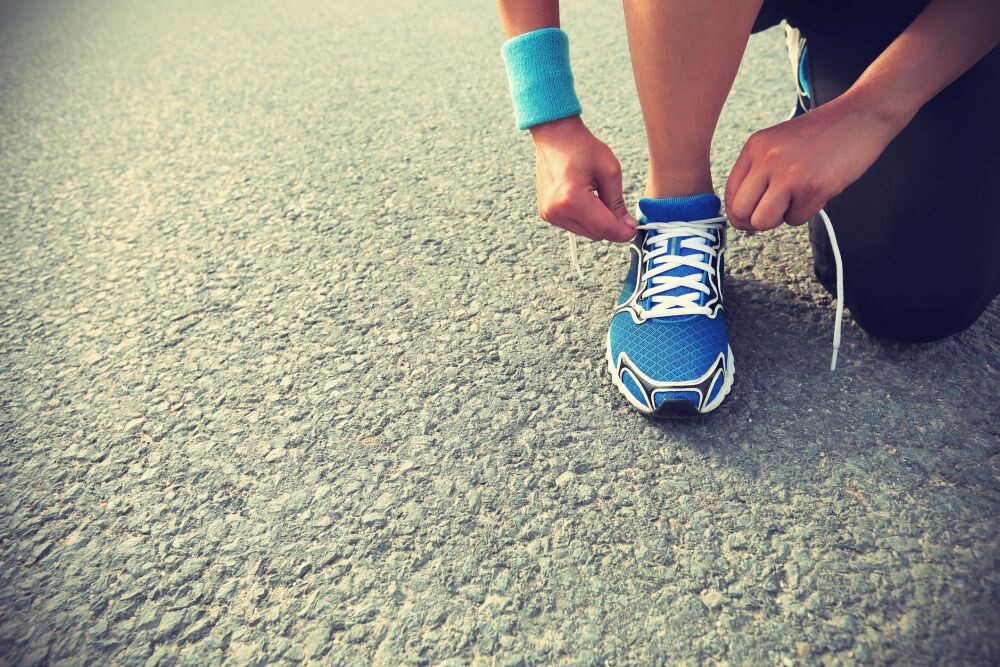
Clear defines habits as behaviors that have been repeated enough to become automatic, like brushing your teeth or getting dressed. Who doesn’t want getting out the door for their run to be as simple as that? The process of building a habit can be broken into four steps that compose a feedback loop: cue, craving, response and reward.
1.- Make it obvious (cue)
The two most common cues are time and location, and Clear suggests a practice called habit-stacking to start incorporating your new habit into daily life. By attaching the desired habit to other things you regularly do, you can create obvious cues. Habits like “eat better” or “run on my lunch break” are worthwhile, but the goals need specific instructions on how and when to act. Decide exactly when you want to slide your habit into your life.

Clear uses adding a push-up habit to his own life as an example, and it can easily be shifted to one of your running goals. “When I wanted to start a push-up habit, my habit stack was ‘When I take a break for lunch, I will do 10 push-ups’,” Clear says. He soon realized this was unclear–would he do the push-ups before lunch? After?
Clear explains that after a few inconsistent days, he changed his habit stack to “when I close my laptop for lunch, I will do ten push-ups next to my desk.” Get rid of as much ambiguity as possible when planning out how you want to implement your habit.
Habit-stacking formula: After I (current habit), I will (new habit).
2.- Make it attractive (craving)
The best way to make a habit stick is to make it absolutely irresistible. “Habits are a dopamine-driven feedback loop,” says Clear. While scientists used to think dopamine was all about pleasure, they now know it plays a key role in neurological processes like learning, memory and motivation. Clear explains the key takeaway: “dopamine is released not only when you experience pleasure, but also when you anticipate it.”
The anticipation of a reward–not the actual fulfillment–gets us to take action. The more attractive an opportunity is, the more likely it is to become habit-forming. Strategize to pair an action you want to do with an action you need to do. Clear builds on habit-stacking by adding a formula called temptation-bundling.
An example of this could be wanting to watch the news, but needing to fit in your run: 1. After I get my morning coffee, I will go for my run (need). 2. After I go for my run, I will watch the news (want).
Habit-stacking and temptation formula: 1. After I (current habit), I will (habit I need). 2. After I (habit I need), I will (habit I want).
3.- Make it easy (response)
Clear says the most effective way to learn is by practicing, rather than planning. To build a habit, you need to practice it. Eliminating as much effort as possible is key to making your habit become part of your daily life. “It’s crucial to make your habits so easy that you’ll do them even when you don’t feel like it,” says Clear. Habits like checking email, scrolling our phones, or watching TV take up so much of our time because they require almost zero effort.
Making your new healthy habit as effortless as possible is key. If you’re hoping to improve your eating habits this season, chopping vegetables on the weekend and having them in the fridge to snack on is an obvious way to simplify this. Setting that running gear out in advance is a great idea, when it’s part of the entire habit-feedback loop and not your stand-alone hope of getting out the door at 5:00 a.m.
When you’re struggling to stick with a new habit, Clear suggests following a two-minute rule. Make your goal to simply get into your exercise clothes, or to walk for two minutes. If you’re done at that point, fine–do it again tomorrow. You can’t improve a habit until it exists.
4.- Make it satisfying (reward)
Researchers refer to a cardinal rule of behavior change: what is rewarded is what is repeated, and what is punished is avoided. Seems obvious, but making a behavior satisfying vastly increases the chances that you’ll repeat it. There’s a catch: the human brain evolved to want immediate gratification, not delayed rewards.
We all love the feeling of making progress. A habit tracker is a great way to give yourself an immediate reward. Just like getting kudos on Strava, giving yourself a gold star on the calendar will give your brain a boost, and provides clear evidence of your progress. If you get off track, simply veer back to your habit as quickly as possible. It’s important to give yourself credit for small things–you don’t have to have a great run to earn that gold star, or nail the perfect speed workout.
If you got out the door for a walk, that’s great–added vegetables to your meal, perfect. You’re reaffirming your identity, and taking the steps to cement those habits into place.
(10/28/2022) ⚡AMPby Keeley Milne
Five racing tips from the NN Running Team
We are in the middle of the fall racing season, and thousands of runners across the country are either preparing for a race or have already run one. Addy Ruiter, the coach of Nike’s NN Running Team and 5K world record holder Joshua Cheptegei, Stephen Kissa and 2019 world 800m champion Halima Nakaayi, offers fives expert tips on do’s and don’ts before your next race.
1) Start your preparation early
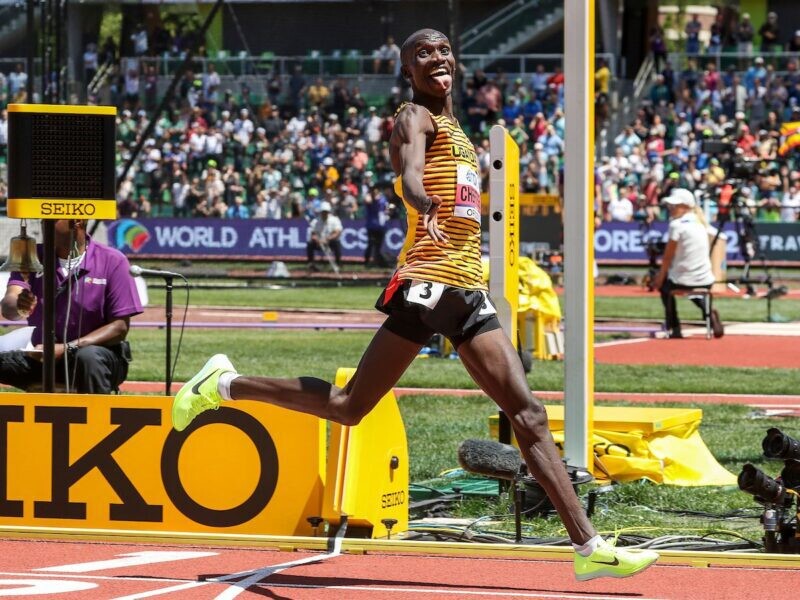
It is standard for many recreational runners to start training six to eight weeks out from their goal race, but it pays to start earlier, to allow the body time to build into the training. Try starting your build two to four weeks earlier and focus on building your endurance before starting your training plan.
2) Master the long run
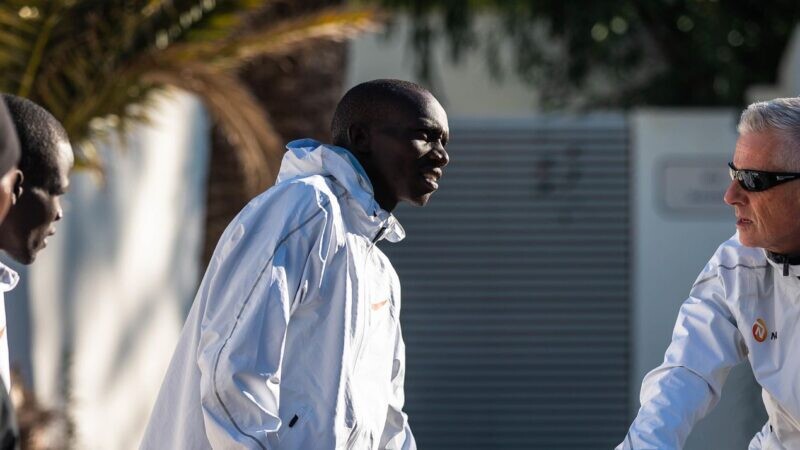
Ruiter says the most important session of the week is the long run. For many recreational runners, there are several reasons to skip this session if you do not have enough time, or feel overwhelmed by the growing distances. Ruiter stresses that it is the most important session, because it builds your endurance, stamina and strength, which are essential qualities late in a race.
3) Don’t race in new shoes
Runners definitely need to test any new pair of shoes before racing in them. Make sure you run in a pair of trainers at least two or three times before race day to ensure they won’t give you blisters.
4) Less is more
For the recreational runner, it is sometimes better to train four or five times a week rather than six or seven. If you are not used to training every day, it can take a toll on the body and lead to injuries. It’s better to squeeze your runs into four or five days to allow your body to recover from the training load on your rest days.
5) Get the taper right
It is essential for runners to reduce their training load by about 25 per cent in the second last week before the goal race and by 70 per cent in the last week while maintaining the same level of intensity. The purpose of the taper is to reduce your training and to give your body the time it needs to recover, ensuring you are ready to go come race day.
Now, it’s time to crush your race!
(10/27/2022) ⚡AMPby Marley Dickinson
Fuel in a jar: the easiest recipe you’ll ever make
Australian ultrarunner Lucy Bartholomew‘s fuel-filled jars are like little works of art, both to look at and in the way they power up your body. Simple to throw together and easy to modify with what you have on hand, I love making these jars for lunch–my family is always impressed with the colours and flavour (while not knowing it took me mere moments to prep).
Bartholomew says these ‘jars of goodness’ translate to: “whatever is in the fridge, pantry or freezer that needs to be used up.” Switch it up with your favourite sauces and spices. I love that I don’t need to worry about exact measurements or specific directions to create these–if you aren’t a plant-based eater, switch up the baked tofu for chicken or a protein of choice.
Lucy Bartholomew’s Jars of Goodness

Rice jar with baked tofu
Ingredientscooked ricesliced cucumbersliced celerygrated carrot
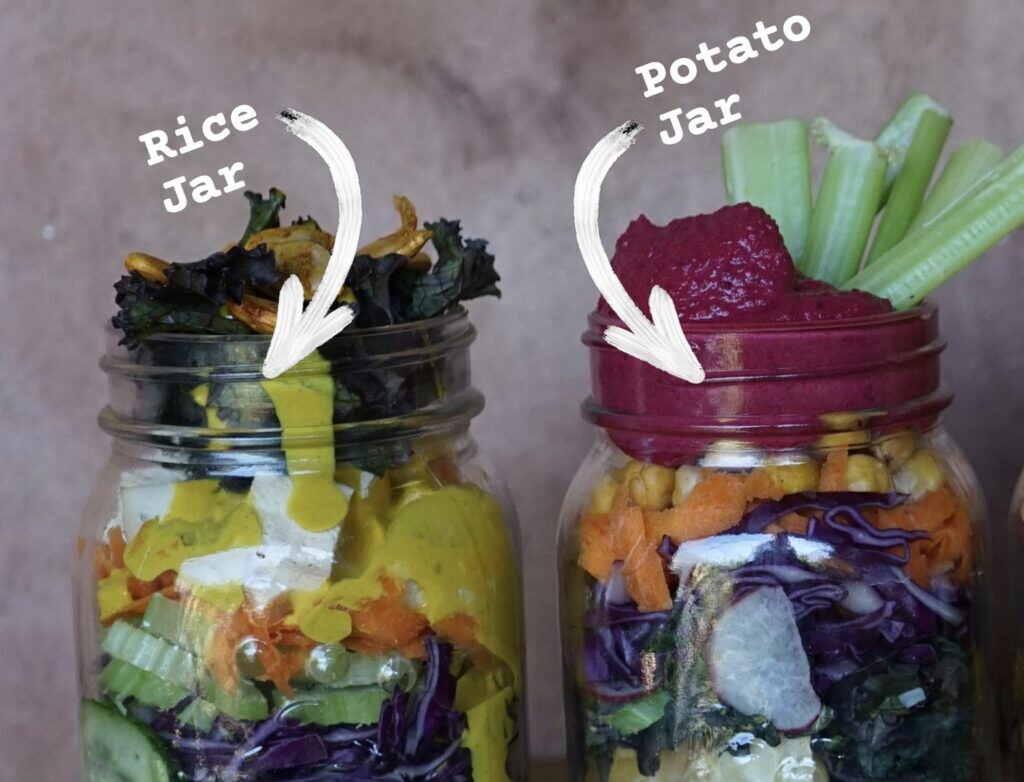
Baked tofu: Marinate tofu pieces in one Tbsp soy sauce or tamari, two minced garlic cloves, one tsp sriracha or hot sauce (optional), a splash of roasted sesame oil and toss to combine. Leave for 15-30 minutes, then bake at 180 C or pan fry until crispy–about 10 minutes.
Potato jar with roasted chickpeas
Ingredientsgrated red cabbagegrated carrotsliced radishesroasted potatoes: lightly toss in olive oil and salt and cook in the oven at 180 C for 30-45 min (make a lot and enjoy the leftovers!)roasted chickpeas: lightly toss in olive oil and salt and cooked in the oven at 180 C for 30-45 min
Toppings: hummus, celery sticks on the side
Tahini Miso Dressing
Bartholomew says she happily puts this dressing on just about anything: “Salty, nutty, spicy and coloured with the anti-inflammatory golden yellow turmeric, when it thickens in the fridge it is a perfect spread for wraps and sandwiches.” Adding a few Tbsp of hot water brings it back to the perfect consistency to top any salad or dish.
Ingredients
3/4 cup tahini1/2 cup hot water3 Tbsp red miso paste1 tsp turmeric powder2 cloves garlic, peeled3 Tbsp apple cider vinegar/lemon juice1/2 tsp cracked black pepper
Directions
Put all ingredients (reserve 1/4 cup water) into a blender and blend on high until smooth. Add remaining water little by little until desired consistency is reached. Pour into a jar and keep in the fridge until ready to use.
(10/27/2022) ⚡AMP
by Running Magazine
TCS New York City Marathon App to Debut Livestreaming of All Pro Races in Their Entirety
Tata Consultancy Services (TCS) and New York Road Runners (NYRR) launched the official 2022 TCS New York City Marathon App with a groundbreaking Second Screen feature that will transform the marathon experience for runners and fans alike. For the first time in the history of major marathons, the professional men’s and women’s wheelchair and open division races will be livestreamed on the app in their entirety, empowering fans to swipe between feeds and watch the race of their choice.
The Professional Runner Feed, available free on the 2022 TCS New York City Marathon app, will enhance the broadcast coverage through a Second Screen that features uninterrupted coverage of the leaders in all four races. It will complement the race broadcast available domestically on WABC/ESPN and internationally in 182 countries and territories so that spectators from around the world can watch every move as the fastest marathoners in the world battle for victory on the streets of New York City. The 51st running of the TCS New York City Marathon will take place on November 6.
“I’m excited to race the TCS New York City Marathon again as I go for my sixth title, and it’s so incredible that everyone around the world can follow along the professional wheelchair races in full in the TCS Mobile App,” said Tatyana McFadden, a five-time TCS New York City Marathon champion and 20-time Paralympic medalist. “It’s so important to have platforms such as this that reach the masses to showcase our sport and bring parity to the wheelchair division.”
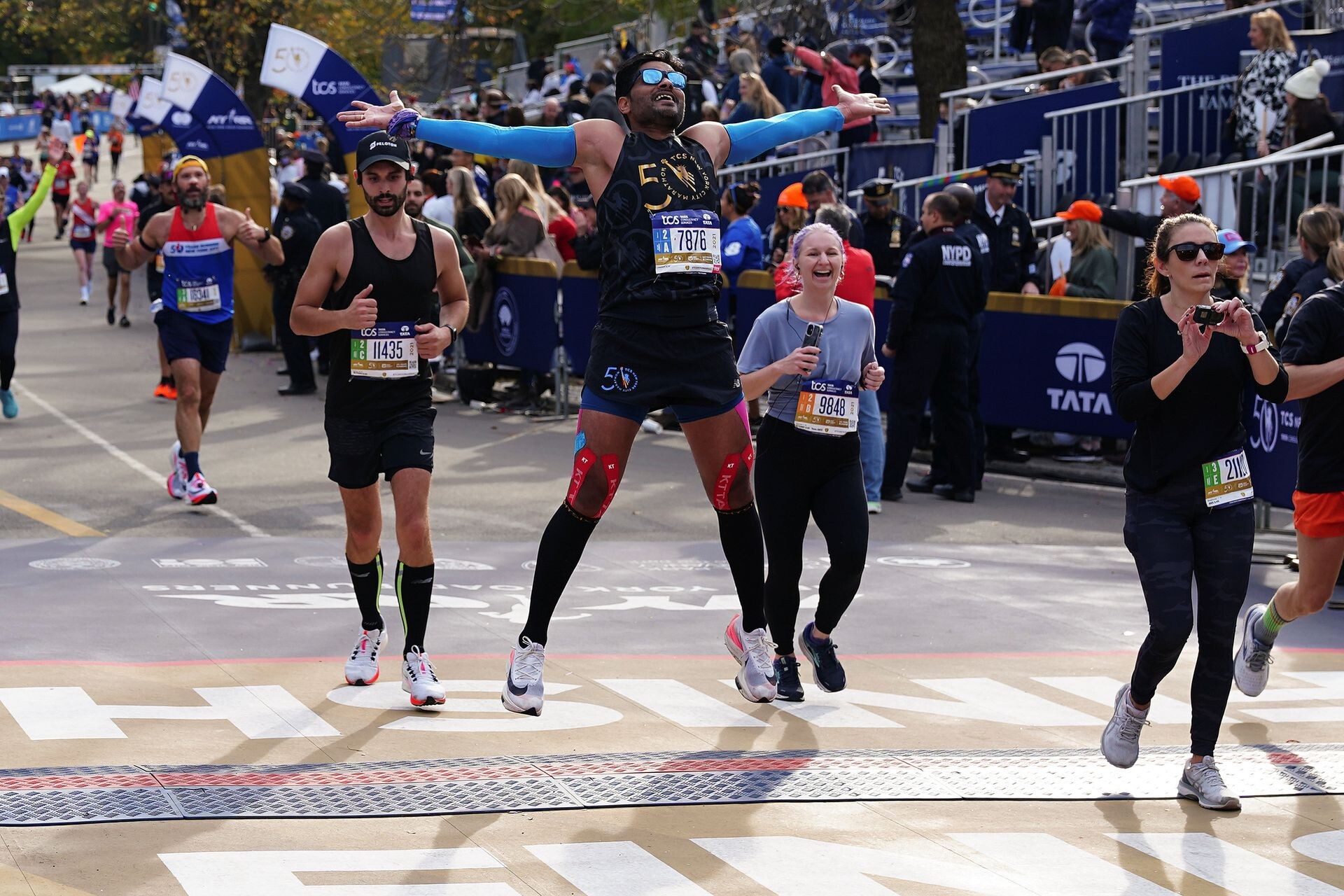
The TCS New York City Marathon has historically broken ground and set the pace for equal opportunities for both women and wheelchair athletes. This year, every step taken by the leaders can be seen on the app – from the big lead pack often seen in Brooklyn to the surges on 1st Avenue that separate the competitors. Fans can watch every race-defining move throughout the marathon.
“Livestreaming the pro races on the TCS New York City Marathon app is a win for fans and a win for athletes,” said Des Linden, a two-time Olympian and 2018 Boston Marathon champion. “Allowing the long form stories to develop over the course of 26.2 miles will give fans the chance to learn about the contenders and appreciate the nuances of racing that they’ve never seen before.”
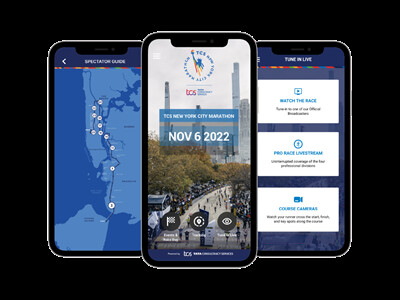
The 2022 TCS New York City Marathon App also sets a new standard for runner tracking. The app allows spectators to track the elapsed time and pace of an unlimited number of runners. The first of its kind Course Camera feature lets fans watch a live feed of their favorite runners at five key points along the course – at the start, mile 8 in Brooklyn, mile 17 in the Upper East Side, mile 20 in the Bronx, and at the finish. This new feature also gives runners the comfort that their family and friends can watch them at key points on the course and cheer for them from anywhere in the world.
“Fans of an iconic global event like the TCS New York City Marathon deserve the most technologically advanced race app,” said Suresh Muthuswami, Chairman of North America, TCS. “We are proud to raise the bar this year by bringing all of the exciting action from the streets of New York City to the world in an inclusive fan experience.”
"Every year, it is exciting to see the TCS New York City Marathon partnership come to life through the mobile app, and this year’s enhancements will elevate the experience to a whole new level for both spectators and viewers,” said Christine Burke, NYRR Senior Vice President of Strategic Partnerships and Runner Products. “Whether it be fans following the every stride of their favorite professional athletes or checking out the Course Camera feed to find their family and friends, the new features in the app are guaranteed to bring in a whole new audience.”
TCS is the first ever premier partner of NYRR, a relationship that began in 2012. From the beginning, TCS and NYRR committed to enhancing the marathon experience for runners, spectators, and fans around the world through technology. The award-winning TCS New York City Marathon app is typically downloaded a half-million times every year.
Other Key Features
Share Tracking: This feature on the Runner Details page allows users to share a link that initiates an automatic app download with a specific runner already selected to be tracked during the race.
Optimized Spectator Guides: The app’s spectator guide helps fans create an itinerary to navigate New York City, so they’re able to see runners on the course. The shareable guide provides a runner’s estimated times of arrival, along with transportation directions and recommended viewing locations along the course.
Cheer Cards: Allows fans to support runners using the app to share messages on social media.
Live Pro Athlete Leader Board and Bios: Closely track the race day leaders in real time, as well as have access to bios, records, and images of professional athletes running the race.
Team Inspire Profiles: For the first time, the app will include stories of Team Inspire, a group of runners with some of the most inspiring stories in this year’s mass runner field.
The mobile app for the 2022 TCS New York City Marathon is available now for iPhone and Android devices on the App Store and Google Play, respectively.
(10/27/2022) ⚡AMPby Running USA
TCS New York City Marathon
The first New York City Marathon, organized in 1970 by Fred Lebow and Vince Chiappetta, was held entirely in Central Park. Of 127 entrants, only 55 men finished; the sole female entrant dropped out due to illness. Winners were given inexpensive wristwatches and recycled baseball and bowling trophies. The entry fee was $1 and the total event budget...
more...Kenyans bound to face stiff competition at Frankfurt Marathon
Twelve Kenyans (six men and six women) have confirmed participation at the Mainova Frankfurt Marathon on Sunday.
However, the race is expected to be challenging considering the calibre of athletes it has attracted.
In the men’s field, the Ethiopian duo of Betesfa Getahun and Gebru Redahgne are the top two fastest with personal best times of 2:05:28 and 2:05:58 respectively.
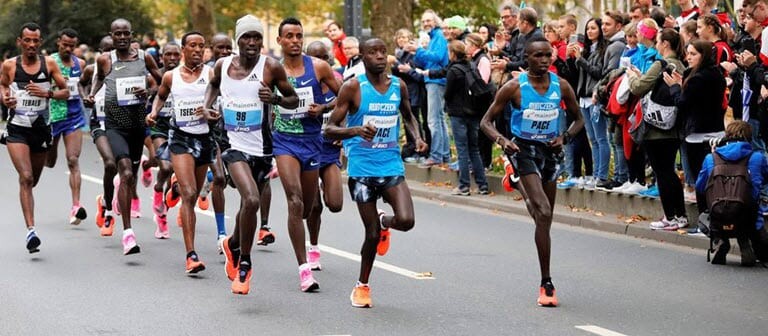
Kenya's Martin Kosgey will line up as the third fastest in the field with a lifetime best of 2:06:41. Kosgey placed second at the 2018 edition of the Frankfurt Marathon.
Kosgey is a regular in the Frankfurt event having finished second in 2016, fourth in 2017, second in 2018 and fourth in the 2019 edition.
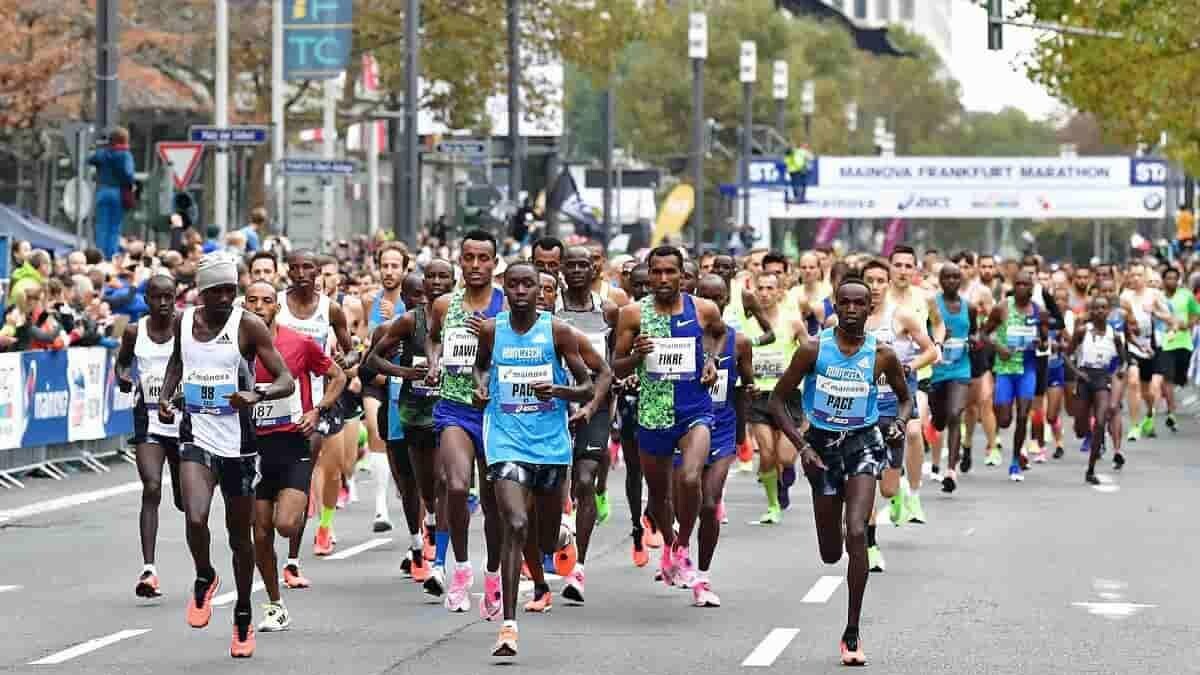
He will be in the company of compatriots Charles Ndiema (2:08:12), Brimin Misoi (2:08:41), Dominic Letting (2:09:30), Stephen Mugambi (2:11:39) and debutant Linus Maruka.
Other top contenders include the 2019 Osaka Marathon champion Asefa Mengisa from Ethiopia and this year’s Hannover Marathon champion Hendrik Pfeiffer of Germany. Mengisa has a personal best time of 2:07:47 while Pfeiffer has a PB of 2:10:18.
In the women’s category, Sally Kaptich, who has a PB of 2:21:09 leads a strong team. Kaptich will be in the company of Kenyans Helah Kiprop (2:21:27), Jackline Chepngeno (2:24:21), Caroline Jepchirchir (2:26:11), Gladys Chepkurui (2:28:55) and Martha Akeno (2:29:00).
Ethiopia’s Yeshi Chekole is the second fastest in the field with a personal best time of 2:21:17, which she posted at this year’s Zurich Marathon to place third. Kiprop is the third fastest in the field and won this year’s Copenhagen Marathon in 2:24:10. She is also the 2016 Tokyo Marathon winner.
The 2020 Zurich Marathon champion Juliet Chekwel of Uganda is also among the favourites to watch. She has a life time best of 2:23:13.
(10/27/2022) ⚡AMPby Abigael Wuafula
Mainova Frankfurt Marathon
Frankfurt is an unexpectedly traditional and charming city, with half-timbered buildings huddled in its quaint medieval Altstadt (old city), cosy apple wine taverns serving hearty regional food, village-like neighbourhoods filled with outdoor cafes, boutiques and street art, and beautiful parks, gardens and riverside paths. The city's cache of museums is second in Germany only to Berlin’s, and its nightlife...
more...Three tips to prevent muscle cramps
Every runner knows the feeling – one minute you’re happily cruising along, the next you’re clutching at your calf in pain.
You’ve got a cramp, or an exercise-associated muscle cramp (EAMC), as the experts call it.
But what exactly are you experiencing?
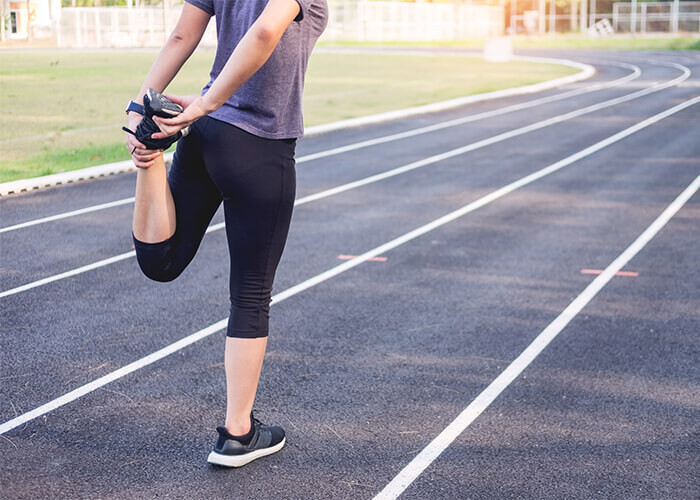
A muscle cramp is a painful, spasmodic and involuntary contraction of skeletal muscle. It occurs most often in the quadriceps, hamstrings and calf.
Runners generally start to cramp at the beginning or end of a run.
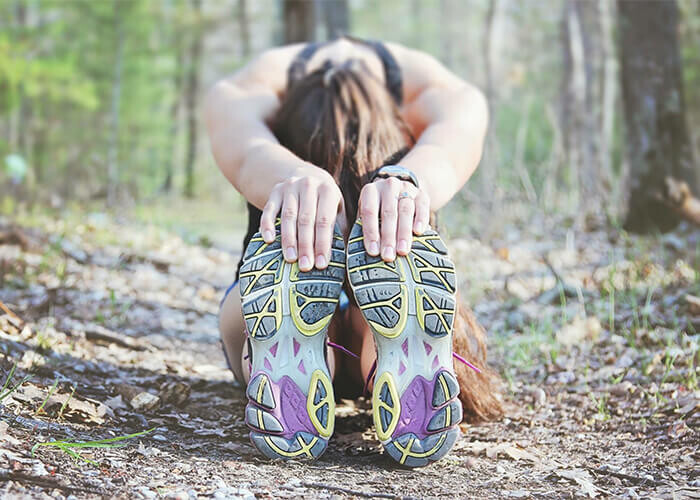
While it’s still unknown exactly what causes cramping, it’s thought that fatigue, low fitness levels, dehydration, excessive sweating and inflexible muscles may all increase your risk.
Here’s some advice on how to reduce your risk of cramps and find relief when they do occur.
1. Be prepared
Cramps are less common in runners who are well trained and correctly conditioned for the distance they are participating in.
In other words, if you haven’t put in the hours to ensure your body can withstand the kilometres and speed, you’re more likely to experience cramps.
Start slow and work up to a high level of intensity during training sessions, rather than going all-out straight away.
If training’s not your thing and you’re just going to ‘wing-it’ on the day, try to take it slow and steady to avoid cramping up.
2. Hydrate, hydrate, hydrate
Dehydration is another risk factor for cramps, so it’s important that you drink sufficient water before, during and after exercise.
But how much water should you drink? According to Sports Dietitians Australia, this all depends on your “sweat rate”.
To find out your sweat rate, weigh yourself before and after an hour-long run. The weight you lose, in grams, is approximately the amount of fluid you need, in millilitres.
For example, if you lose 600g after an hour-long run, you should consume around 600ml of water per hour over a training session.
It’s also worth noting that you shouldn’t go overboard, as over-hydrating is also an issue.
To keep it really simple, weigh yourself before and after exercise. If you weigh less - hydrate more; if you weigh more - hydrate less.
3. Fuel well
We need to consume the right nutrients for our body to function at its best.
Fuelling our muscles helps to avoid glycogen depletion, which can lead to fatigued muscles and, as a result, cramping.
Carbohydrate foods help us top up our glycogen stores, while protein-rich meals can support muscle recovery and repair.
A healthy balanced diet should provide sufficient carbohydrate and protein for 4 km runners and 12km walkers.
For 12km runners and half marathoners your needs will likely be higher and require more planning.
If a cramp does strike…
Start by stretching the muscle and gently rubbing the area to try and relax it.
If the cramp is in your calf, try putting your weight on the affected leg and bending your knee slightly.
If you are unable to stand, sit on the floor or a chair and extend the affected leg. Keep your leg straight and pull the top of your foot on the affected leg towards your body. This method will also help with a hamstring cramp.
For a cramp in your quads, stand and hold on to a chair, then pull your foot on the affected side towards your buttocks.
(10/26/2022) ⚡AMPThree ways to turn your off-season into a running game changer
While there may be less races close to home during the winter months, for runners, there never truly has to be an off-season–and it can be tempting to find races to jump into year-round to keep your motivation high. Even if you’re feeling great after summer training and racing, taking some time off and recharging in the winter months can lead to big payoffs when the days are warm again. Here’s how to turn your off-season into a running game-changer.
Take real time off from running
Pro ultrarunner Keely Henninger recently wrote about the importance of her off-season. “A solid off-season should be a set amount of time without running, followed by a time of unstructured easy training to work on weaknesses, develop strength, and regain motivation and fitness.

Recreational runners often race upwards of five to ten times a year, whereas professional marathoners may race their premiere distance only twice. There’s a reason they are pros–they’ve learned how to optimize their training and recovery time for maximum gain. Henninger says she takes at least two weeks off, and more if she feels she needs it.
Focus on your weaknesses (embrace the workouts you like the least)
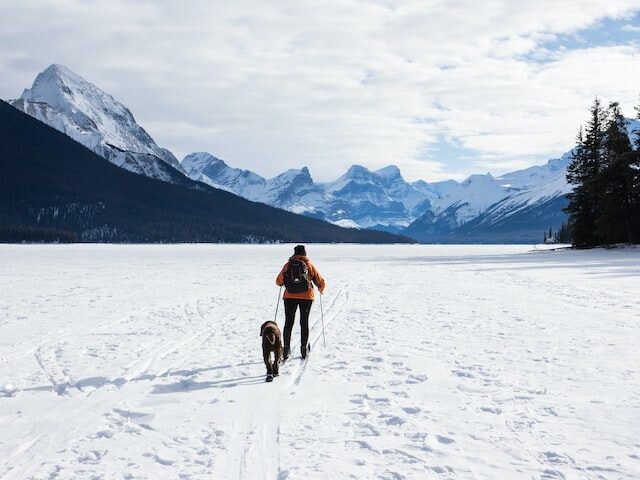
In her book Skyrunner, pro ultrarunner and ski mountaineer Emelie Forsberg (also known for being ultrarunning GOAT Kilian Jornet‘s partner) writes about how she uses contrasts in her training. “Since I have a talent for ultradistances, I put extra effort into shorter training sessions and shorter intervals,” she says. She suggests keeping it simple: running hard 1K repeats if you love going long and slow, or finding a track to run on if you favour the trails.
Your brain (and body) may rebel initially, but tapping into a new-to-you training effect will make you faster and more robust. You may be surprised by how much you learn to enjoy what you used to avoid. Stepping out of your comfort zone is also great mental training for the endless array of issues that can crop up during a race.
Stop worrying that you’ll lose your fitness: incorporate other sports and try new things
Forsberg writes, “even though I love what I do, it’s important to have other things in life, other interests.” As a runner, you may feel like running is such a part of your identity that you cannot imagine your life without it. Taking the time to tackle other physical and mental challenges during the off-season is an excellent way to diversify your physical strength (you’ll tap into muscles regular running doesn’t) and power up your brain, while giving yourself a mental break from the demands of racing goals.
Try cross-country skiing, going for a swim, or dropping into a spin class. If those things aren’t accessible or budget-friendly, diversifying can be as simple as heading out for a walk in a new-to-you area or going tobogganing with friends. Dig out some board games, dive into a new book, or try a crossword puzzle to get your brain firing–science says that learning new things is a great way to expand your brain and skill set at any age.
(10/26/2022) ⚡AMPby Keeley Milne
Istanbul Marathon will be targeting Turkish Allcomers' Record
The course record and the Turkish allcomers’ record will be targeted at the N Kolay Istanbul Marathon on November 6. To achieve these goals for the men’s race organizers have put together an elite field with very good strength in depth. Seven men are on the start list who feature personal bests of sub 2:08. Bahrain’s Marius Kimutai heads the current list with a time of 2:05:47.
In the women’s race Kenyan Agnes Barsosio is the fastest on paper with a PB of 2:20:59. Turkey’s premier marathon race, which uniquely starts on the Asian side of the Bosphorus and then leads the runners over the July 15 Martyrs Bridge into the European part of the city, will be staged in Istanbul for the 44th time. A total of 60,000 runners are expected to take part including races at shorter distances.
“The world's only intercontinental marathon is being conducted for the 44th time. In the race which starts in Asia and ends in Europe with the bridge connecting two continents, the participants enjoy Istanbul, the Bosphorus, and the historical peninsula of the 2000-year-old city with its finish in Sultanahmet Square, the historical center of Istanbul. A fast race is anticipated among the elite athletes competing in the race,“ said Renay Onur, the Race Director from Spor Istanbul. His organizing team achieved a remarkable feat by staging the N Kolay Istanbul Marathon and its sister race, the N Kolay Istanbul Half Marathon, throughout the pandemic in 2020 and 2021 with an exceptional effort. Both events are Elite Label Road Races of World Athletics, the international athletics federation.
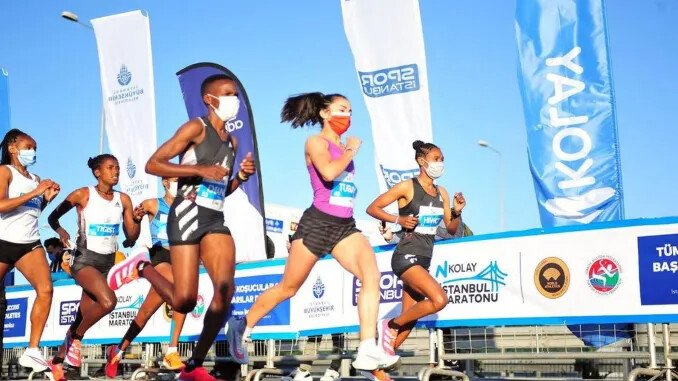
Back in 2019 Kenyan Daniel Kibet established the current record of 2:09:44 while Turkey’s allcomers’ record currently stands at 2:09:27. These are the times organizers had in mind when they assembled the men’s elite field. Former Kenyan Marius Kimutai ran his PB of 2:05:47 when he was third in Amsterdam in 2016. On two more occasions the 29 year-old achieved times faster than 2:07. Competing for Bahrain for the first time he took the Rotterdam Marathon with 2:06:04 in 2017 and a year ago he finished sixth in Barcelona with 2:06:54.
Two other athletes on Istanbul’s start list have run sub 2:07 times: Kenya’s Samuel Kosgei, who is the former 25k world record holder (1:11:50 in Berlin in 2010), won the 2021 Barcelona Marathon with 2:06:04 and Ethiopia’s Abayneh Ayele clocked 2:06:45 in Dubai where he was sixth in 2016. In the same year Ayele was fourth in the World Half Marathon Championships, where he just missed out in the fight for the bronze medal against Britain’s Mo Farah. Both were given the same time of 59:59.
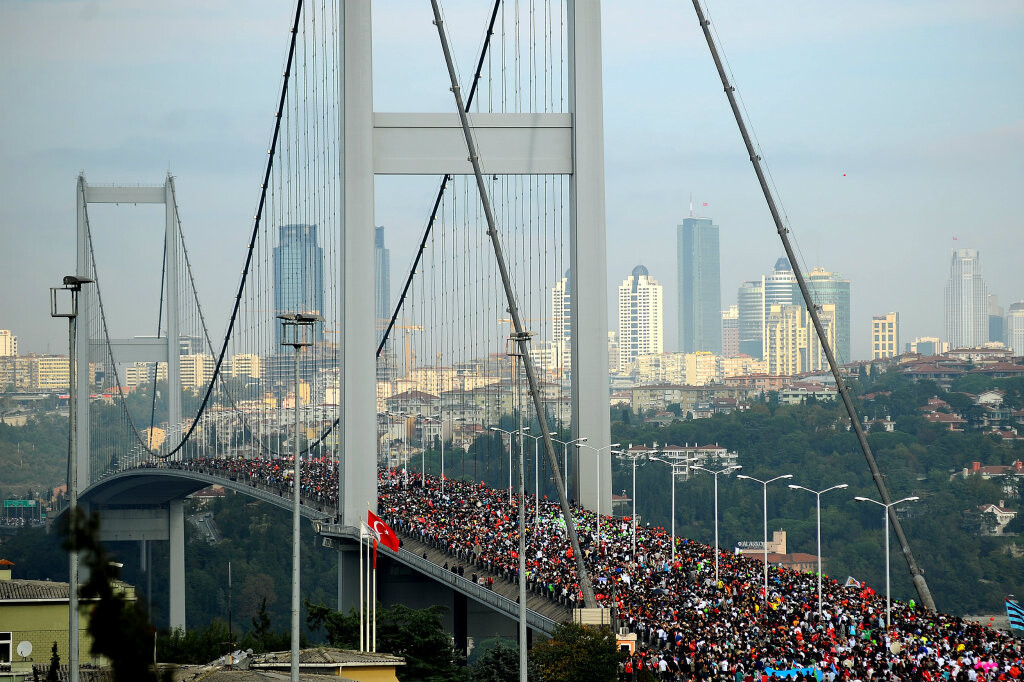
Tadesse Mamo is a runner who has shown very promising form earlier this year. The Ethiopian ran the best race of his career when he took second in Rome with 2:07:04, which was his first sub 2:10 time. Meanwhile Robert Kipkemboi returns to the N Kolay Istanbul Marathon where he was the runner-up a year ago. Showing one of his best performances he clocked 2:10:23 in 2021 while his personal best is 2:07:09 from Seoul in 2019. The other two runners with PBs of sub 2:08 on the start list are Ethiopia’s Alemayehu Mekonen and Evans Kiplagat of Azerbaijan with 2:07:23 and 2:07:46 respectively.
In contrast to the men’s race Istanbul’s world-class course record of 2:18:35 set by Ruth Chepngetich in 2018 will most likely remain unchallenged. Fellow-Kenyan Agnes Barsosio is the fastest runner on the women’s elite start. She clocked 2:20:59 when she finished second in Paris in 2017. While this was five years ago and she turned 40 earlier this year Barsosio showed excellent form this spring: She won the Nairobi Marathon, running 2:24:45 despite the high altitude.
Three other athletes with personal bests of sub 2:27 have achieved strong results and PBs this spring: Sechale Dalasa was the winner of the Rome Marathon with 2:26:09 while fellow-Ethiopian Melesech Tsegaye clocked 2:24:47 for fourth place in Milan. Despite her age of 34 Judith Jerubet is still a newcomer in international road running. She ran her first major race in 2021 and this year improved to 2:26:17 when she was third in Daegu, South Korea.
Trying a comeback Turkey’s national record holder Sultan Haydar surprisingly entered the N Kolay Istanbul Marathon more than six years after competing in the Rio Olympic Marathon where she finished in 111th position.
The 35 year-old established the current national record of 2:24:44 back in 2015 in Dubai. It will be interesting to see what Sultan Haydar can achieve on home soil in Istanbul after such a long break.
(10/26/2022) ⚡AMPby Runners Web
N Kolay Istanbul Marathon
At the beginning, the main intention was simply to organise a marathon event. Being a unique city in terms of history and geography, Istanbul deserved a unique marathon. Despite the financial and logistical problems, an initial project was set up for the Eurasia Marathon. In 1978, the officials were informed that a group of German tourists would visit Istanbul the...
more...The Boston and New York marathons are on Eliud Kipchoge to do list before the Olympic marathon in Paris 2024
Two-time Olympics marathon champion Eliud Kipchoge will compete in two World Marathon Majors races before heading to the 2024 Olympic Games in Paris.
Since he started his road running career in 2013 and won Hamburg Marathon, Kipchoge has competed in 15 marathon races, winning 13 of them.
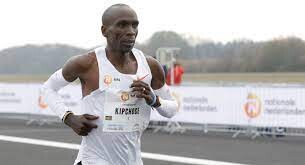
Kipchoge has competed in four out of six WMM races - Tokyo, Berlin, Chicago, and London Marathon races - but is yet to compete in New York Marathon and Boston Marathon races.
“Two marathon majors of New York and Boston are in my to-do list. I want to compete in the races as I prepare for the 2024 Olympic Games. It is still early in the season but things will get clearer next year, and then I can know exactly where I will be competing,” said Kipchoge, the world record holder.
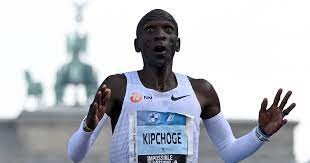
He was speaking in Eldoret, Uasin Gishu County Tuesday after he was named as the LG/ Sports Journalist Association of Kenya (SJAK) Sports Personality for the month of September.
Kipchoge won the recognition after his world record-breaking 2 hours, 01:09 minute run at the Berlin Marathon on September 25.
He lowered his own record by 30 seconds, winning a third title.
Kipchoge was awarded a set of LG refrigerator, which also doubles up as a top mount freezer, and water dispenser worth Sh150,000 and a trophy.
He thanked SJAK and LG for continuously recognising athletes for their efforts and glory brought to the country through their exemplary performances.
He urged athletes to compete clean and avoid being swayed to use drugs for quick money.
“I urge athletes to always stay focused, and to compete in cross country and track races before gradually shifting to the road races. That is where I started and I’m glad it has shaped my career to whom I am today,” he added.
LG East Africa Content Manager William Kimore said Kipchoge is a good inspiration to the young generation.
“We are proud to be associated Kipchoge, one of the greatest marathoners of all time. He has demonstrated that hard work and persistence pays with his record-breaking runs,” he said.
Kipchoge beat other nominees, including track stars Beatrice Chebet (5000m) and Emmanuel Korir (800m) both of whom claimed Diamond League trophies in the 2022 season finale held in Zurich, and Hellen Obiri who successfully defended her Great North Run title the same month. Malkia Strikers opposite attacker Sharon Chepchumba who was Kenya’s top scorer at the World Championships in the Netherlands.
(10/26/2022) ⚡AMPby Bernard Rotich
Paris 2024 Olympic Games
For this historic event, the City of Light is thinking big! Visitors will be able to watch events at top sporting venues in Paris and the Paris region, as well as at emblematic monuments in the capital visited by several millions of tourists each year. The promise of exceptional moments to experience in an exceptional setting! A great way to...
more...Here’s how to run a Magic Mile to predict race performance
When long-time running coach and Olympian Jeff Galloway needed a way to predict race performance for his clients (given appropriate training) for multiple distances, he did some research. Galloway spent a decade trying various formulas and using data from the athletes he worked with and his many coaching programs and running retreats, and discovered that the most accurate predictions came from using a one-mile time trial. Galloway calls this workout the magic mile (MM).
The data from a simple one-mile time trial can be used to accurately predict the slowdown that occurs over distance in a 5K, 10K, half marathon and marathon. It can also be a great tool for monitoring progress as you train. Here’s how to run your own MM and how you can use it to predict your own performances on an ideal race day.

Running a MM
Galloway suggests running a MM roughly every two weeks, to monitor progress and have the most accurate mile measurement at the end of your season. If you’re not concerned about exact details and just want a good estimation of your capabilities, inserting one into your training plan when curiosity strikes you is fine, too (just plan it for a day that you have fresh, well-recovered legs).
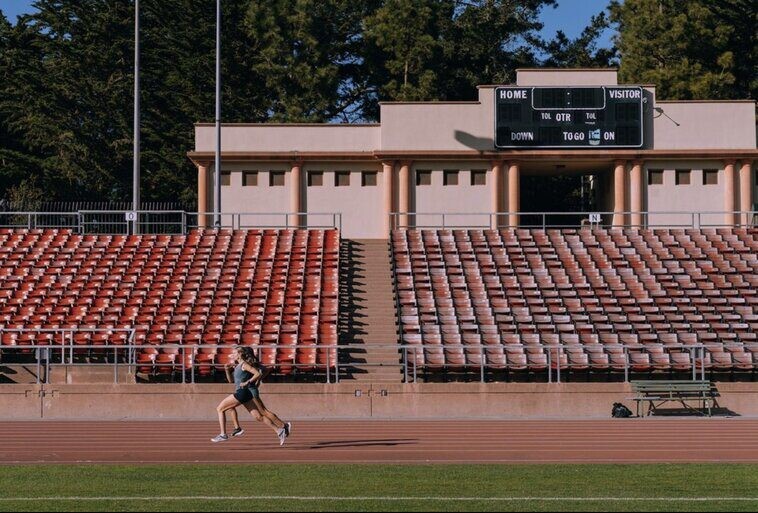
A track is the simplest way to measure your MM, although GPS data and a stretch of flat road works great as well). If you opt for the road, make sure to measure your distance several times before you run your MM–accuracy counts in this calculation.
Warm up with 10 minutes of very easy running, followed by a few accelerations to get your legs ready for a speedy mile run (a mile on a standard 400-meter track is four laps around the inside lane).
Pace yourself as even as possible over each 400-meter stretch. If you’re able to, note how fast you ran each quarter-mile, or take a look afterward at your data for future comparison. Be careful not to take off too hard at the start–run about as hard as you can at an even pace for one mile, without pushing yourself to the point of feeling like you’re going to puke. At the end of the mile, you should feel like you wouldn’t be able to maintain more than a few hundred meters more at that pace.
Cool down by jogging or walking for 10-15 minutes.
How to calculate
You can use the magic mile calculator on Jeff Galloway’s website to work out your training and race paces based on your MM time. If you use min/km to train, you can adjust the pace by dividing by 1.6.
The calculation uses the following formula for pace in miles (we’ve added kilometers, as well):
Add 33 seconds to your magic mile for 5K pace (in miles). To calculate 5K pace in min/km, divide your magic mile time by 1.6 and add 21 seconds.
Multiply your magic mile time by 1.15 for 10K pace (per mile) or by 0.71 for min/km
Multiply your magic mile time by 1.175 for 16K (10 mile) pace or by 0.73 for min/km
Multiply your magic mile time by 1.2 for half marathon pace or by 0.75 for min/km
Multiply your magic mile time by 1.3 for marathon pace or by 0.81 for min/km
(10/25/2022) ⚡AMPby Running Magazine
Eliud Kipchoge wins LG Sports Personality of the Month award
World Marathon record holder Eliud Kipchoge is the LG/ Sports Journalist Association of Kenya (SJAK) Sports Personality for the month of September.
Kipchoge won the recognition after his world record-breaking 2:01:09 run at the Berlin Marathon on September 25 this year where he lowered his record by 30 seconds to win a fourth title.
In an interview with journalists on Tuesday in Eldoret, Kipchoge said that he was glad to have been recognized for his exploits in Berlin.
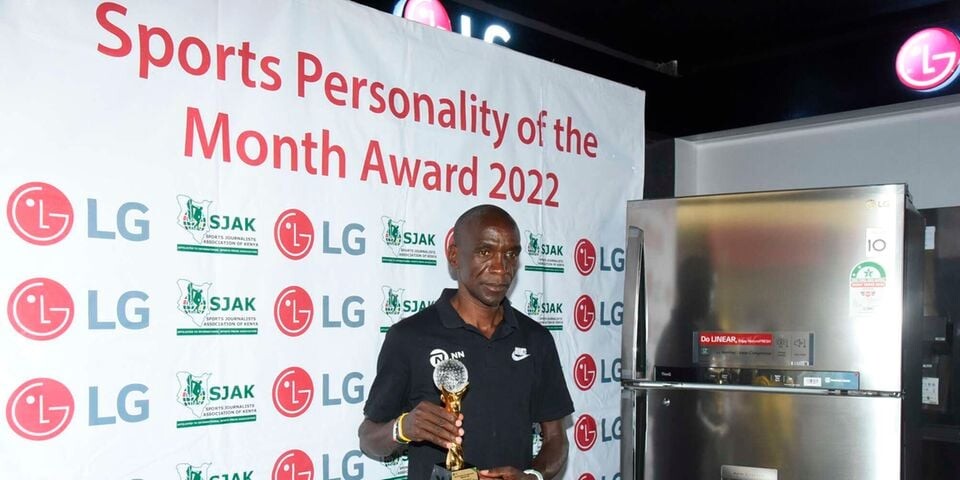
Kipchoge was awarded an LG refrigerator which doubles up as a top mount freezer and water dispenser worth Sh150,000 and a personalized trophy.
He hailed SJAK and LG for constantly recognizing sportsmen and women for their exemplary performances.
“I’m excited today to be recognized by the journalists’ body and this is the second recognition after the breakfast meeting by Isuzu two weeks ago and I must admit that when you work hard, good things come your way.
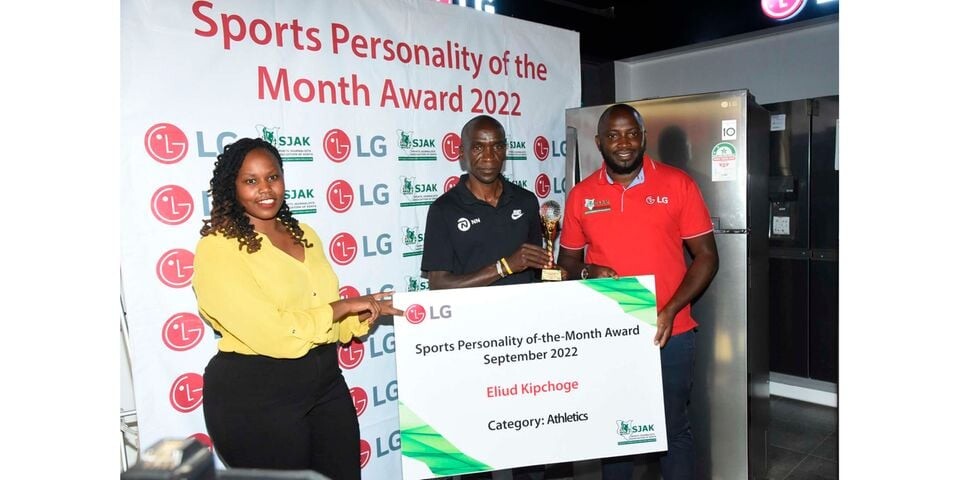
I want to thank SJAK and LG for this award and this is a testament that we should always strive for more, there are no limits but rather everything is achieved through belief and determination. Breaking the world record in Berlin was very crucial for me as I wanted to inspire the human race,” said the Double Olympic marathon winner.
Kipchoge said that he is starting his season soon as he eyes a trio of wins at the 2024 Olympics in Paris.
“I have a plan to compete in the remaining major races before the 2024 Olympic Games where I’m eyeing to retain my title for the third time and I believe next season will be great,” he added.
William Kimore, the Content manager LG East Africa, said Kipchoge is a good inspiration to the young athletes who look up to him.
“We are proud to be associated Kipchoge one of the greatest marathoners who has demonstrated that hard work and persistence pays with his record-breaking heroics and we shall continue recognizing and awarding those who perform well in various sports,” said Kimore.
Kipchoge beat other nominees including track stars Beatrice Chebet (5000m) and Emmanuel Korir (800m), both of whom claimed Diamond League trophies in the 2022 season finale held in Zurich, Switzerland, and Hellen Obiri, who successfully defended her Great North Run title in the same month.
Others nominees included Malkia Strikers opposite attacker Sharon Chepchumba, who emerged top scorer for Kenya at the World Championships in the Netherlands, Karan Patel, who won the ARC Rwanda Mountain Gorilla Rally in Kigali, and former Hit Squad captain Nick Okoth, who bagged silver at the African Championships in Maputo, Mozambique.
He joins a growing list of sportsmen and women who have won the award this year including junior WRC3 contender McRae Kimathi (February), Japan’s Nagoya Marathon winner Ruth Chepng’etich (March), Boston Marathon men’s winner Evans Chebet (April), national women’s volleyball team star Sharon Chepchumba (May), WRC3 Safari Rally winner Maxine Wahome (June), Wimbledon Open Doubles Junior Champion Angela Okutoyi (July) and Commonwealth Games 100m champion Ferdinand Omanyala (August).
(10/25/2022) ⚡AMPby Bernard Rotich
Former London Marathon winner Priscah Jeptoo set for Nairobi Marathon
One hundred and seventy two elites athletes have registered for the 19th edition of the Standard Chartered Nairobi Marathon planned for Sunday, organizers announced Tuesday.
Former London Marathon champion Priscah Jeptoo will headline the women’s 42 kilometers race that has also attracted Uhuru Classic Marathon silver medalist Shyline Jepkorir.
Some of the big guns in the men’s category are the 2021 Madrid Half Marathon champion Ezra Tanui, Asbel Kipruto and Bravin Kiprop.
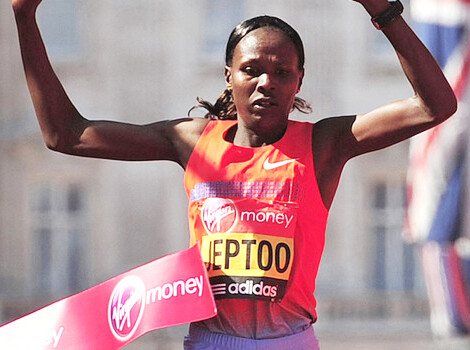
The race will start at Carnivore Grounds and end at Uhuru Gardens on the Southern Bypass.
Peter Gitau, the chairman Local Organising Committe, said a total of 14700 people had by Monday morning registered for the race.
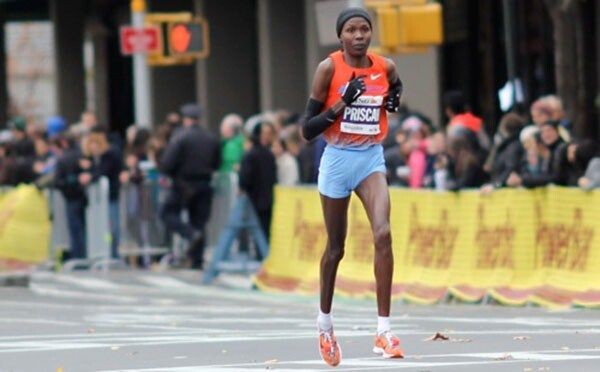
The registration is still ongoing virtually at www.nairobimarathon.com and will end on Friday.
Apart from the full marathon, other categories of the race are 21km, 21km wheelchair race, 10km, 42 km corporate relay race and family fun race.
The 10km race has attracted the highest number of participants at 6,509, followed by the half marathon at 4000.
Eight hundred and seven athletes have registered for the full marathon, 2700 for the family fun race and 97 for the wheelchair race.
Fourteen teams will compete in the 42km corporate relay race.
“We trust that the event will continue with little or no hitches. We will strive to deliver an inclusive, sustainable and accessible marathon for all,” said Gitau, adding that they have partnered with the Anti-Doping Agency of Kenya (ADAK) to protect the integrity of the race.
He spoke on Tuesday at Uhuru Gardens in Nairobi during a joint press briefing with security heads regarding the preparations of the race.
Gitau disclosed that the winners of the full marathon will pocket Sh2 million, while top athletes in the half marathon and 21km wheelchair race will receive Sh300,000.
The 10km and 42km corporate relay races winners will receive Sh200,000 and Sh 100,000 respectively.
Nairobi Deputy Traffic Commander, Mary Kiarie assured all participants of their safety during the race.
She said all roads where the race will take place will be closed from Saturday midnight to Sunday 1.30pm.
"We have created traffic diversion and provided access to alternative routes during the designated marathon hours. To ensure smooth flow of traffic, we ask for the public's cooperation with the traffic officers we have stationed around the routes. Additionally, we wish to reaffirm that there will be tight security for the attendees," said Kiarie.
(10/25/2022) ⚡AMPby Victor Otieno
NAIROBI MARATHON
Nairobi Marathon is an annual road running competition over the marathon distance held in October in Nairobi, Kenya. First held in 2003, the competition expanded and now includes a half marathon race along with the main race. It was part of "The Greatest Race on Earth", fully sponsored by Standard Chartered Bank....
more...Strong elte fileds at Mainova Frankfurt Marathon this coming Sunday after a two-year-break
The Mainova Frankfurt Marathon will be back in action with strong elite fields this coming Sunday after a two-year-break. The men’s field shows nine athletes who have run under 2:10, led by the Ethiopian Getesfa Getahun whose personal best stands at 2:05:28.
Among the women, eight have broken 2:25 and the Kenyan Sally Kaptich is the fastest with a best of 2:21:09. The elite fields have also been boosted by the recruitment at short notice of the leading German runners Hendrik Pfeiffer, part of the successful national team at the European Championships, and Laura Hottenrott.
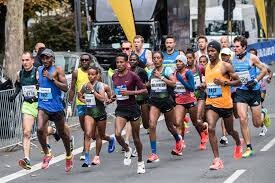
For the 39th edition of the Mainova Frankfurt Marathon the organizers are expecting around 12,000 participants. Taking into account events held in conjunction, some 20,000 runners will be involved. This historic race is one of the Elite Label Road Race events, recognized by World Athletics, the governing body of international athletics. Information of how to enter Sunday’s race is available at: www.frankfurt-marathon.com
“After a break of two years, caused by the Corona pandemic, we’ve been able to put together strong elite fields and we’ll have a big, impressive field of mass runners on the start line. We’re looking forward to a Mainova Frankfurt Marathon which will continue the tradition of past events and again prove a big thrill for participants and spectators alike,” said the Race Director Jo Schindler.
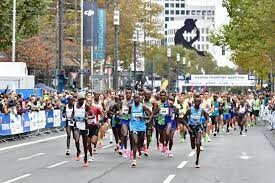
Two young talents from Ethiopia might well produce outstanding results on Frankfurt’s fast course. The 24-year-old Betesfa Getahun ran his fastest time to-date of 2:05:28 on his marathon debut in Amsterdam in 2019. Gebru Redahgne is 22 and the second fastest on the Frankfurt starting lists with his time of 2:05:58 in Barcelona at the beginning of May. Both are keen to take the next step and move up in the marathon hierarchy.
Alongside them will be the Kenyan who has earned the title of “Mr Frankfurt”, Martin Kosgey. He has two second places to his credit from the race in 2016 and 2018 as well as finishing fourth in 2017 and two years later. As further proof of how much at home he feels on the Frankfurt course, he ran his best time of 2:06:41 here in 2018.
Hendrik Pfeiffer had originally planned to run the New York Marathon in November but the 29-year-old wanted to profit from his current excellent form and take to Frankfurt’s renowned flat, fast course, aiming to improve his personal best of 2:10:18. “I’m confident I could run a personal best and, of course, would love to break 2:10,” said Pfeiffer, who finished 24th at the European Championships in Munich in August and helped the German squad win a silver medal in the Europa Cup team event.
“I’m grateful to the organizers for enabling me to run in Frankfurt at short notice and want to put my form to good use on the road.”
Only once previously has the Mainova Frankfurt Marathon had more than eight women entered with personal bests of under 2:25 and that was in 2018 when ten athletes were on the start line. The strength in depth among the elite raises hopes for an exciting as well as high quality race. The Kenyan Sally Kaptich with a best of 2:21:09, Ethiopia’s Yeshi Chekole (2:21:17) and Kenya’s World Championship silver medalist from 2015, Helah Kiprop (2:21:27) are the fastest on paper.
While this trio is likely to be disputing top honors, Germany’s Laura Hottenrott will hope to take advantage of Frankfurt’s fast course where so many personal bests have been achieved, aiming to improve her time of 2:28:02.
Elite runners with personal bests:
Men:
Betesfa Getahun ETH 2:05:28
Gebru Redahgne ETH 2:05:58
Martin Kosgey KEN 2:06:41
Derseh Balew Yihunie ETH 2:07:22
Asefa Mengisa ETH 2:07:47
Charles Ndiema KEN 2:08:12
Brimin Misoi KEN 2:08:41
Deresa Ulfata ETH 2:08:42
Dominic Letting KEN 2:09:30
Hendrik Pfeiffer GER 2:10:18
Stephen Mugambi KEN 2:11:39
Justino da Silva BRA 2:13:31
Edson Arruda BRA 2:14:35
Justin Mahieu BEL 2:14:43
Filimon Abraham GER
Linus Maruka KEN Debut
Ashenafi Gebru ETH Debut
Eyob Solomun ERI Debut
Merhawi Ghebreslasie FRA Debut
Women:
Sally Kaptich KEN 2:21:09
Yeshi Chekole ETH 2:21:17
Helah Kiprop KEN 2:21:27
Atalel Anmut ETH 2:22:21
Juliet Chekwel UGA 2:23:13
Jackline Chepngeno KEN 2:24:21
Serdana Trofimova KGZ 2:24:38
Zinash Lema ETH 2:24:55
Meseret Abebayehu ETH 2:25:18
Caroline Jepchirchir KEN 2:26:11
Laura Hottenrott GER 2:28:02
Gladys Chepkurui KEN 2:28:55
Martha Akeno KEN 2:29:00
Sofiya Yaremchuk ITA 2:29:12
Thea Heim GER 2:36:10
(10/25/2022) ⚡AMPby Runners Web
Mainova Frankfurt Marathon
Frankfurt is an unexpectedly traditional and charming city, with half-timbered buildings huddled in its quaint medieval Altstadt (old city), cosy apple wine taverns serving hearty regional food, village-like neighbourhoods filled with outdoor cafes, boutiques and street art, and beautiful parks, gardens and riverside paths. The city's cache of museums is second in Germany only to Berlin’s, and its nightlife...
more...

